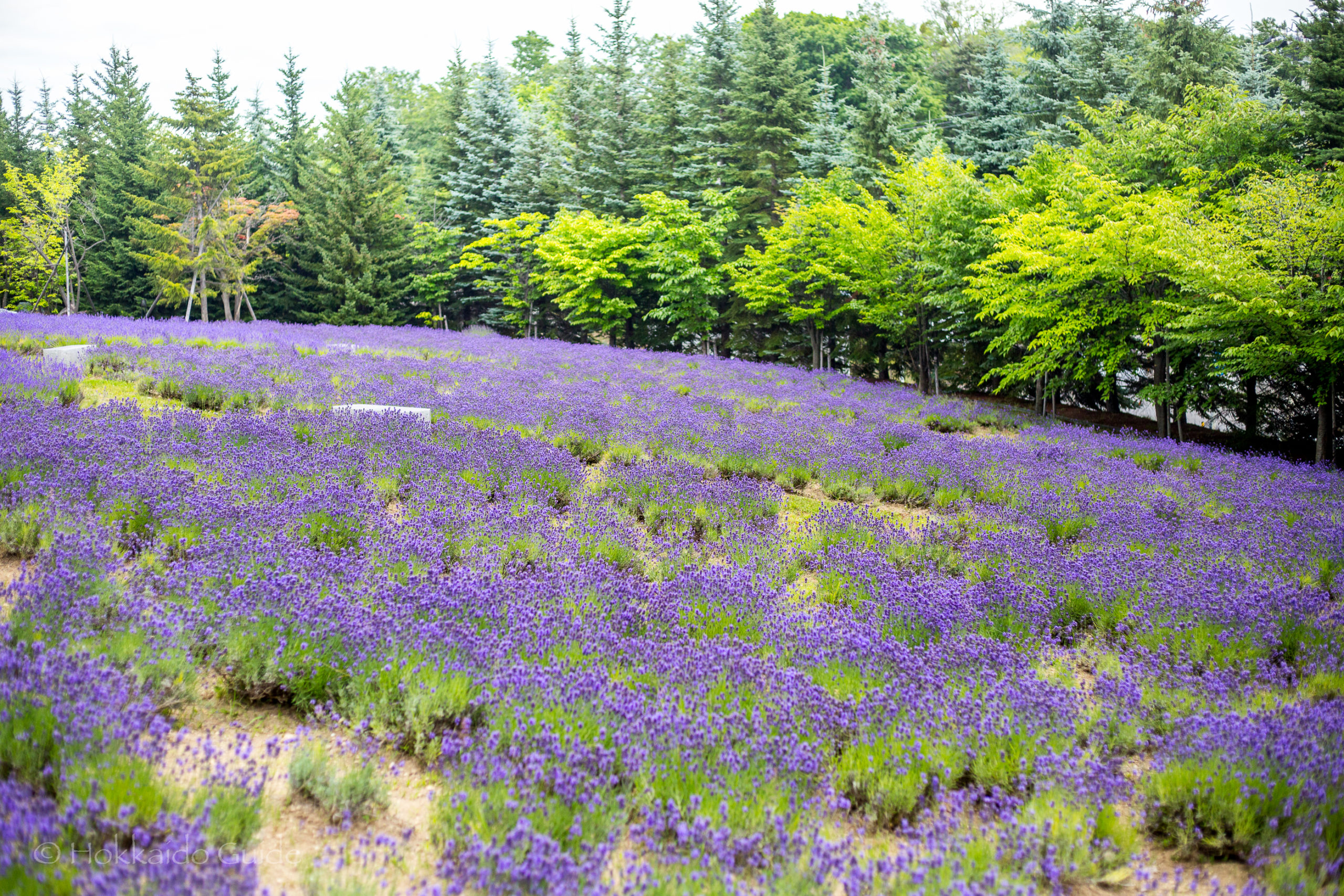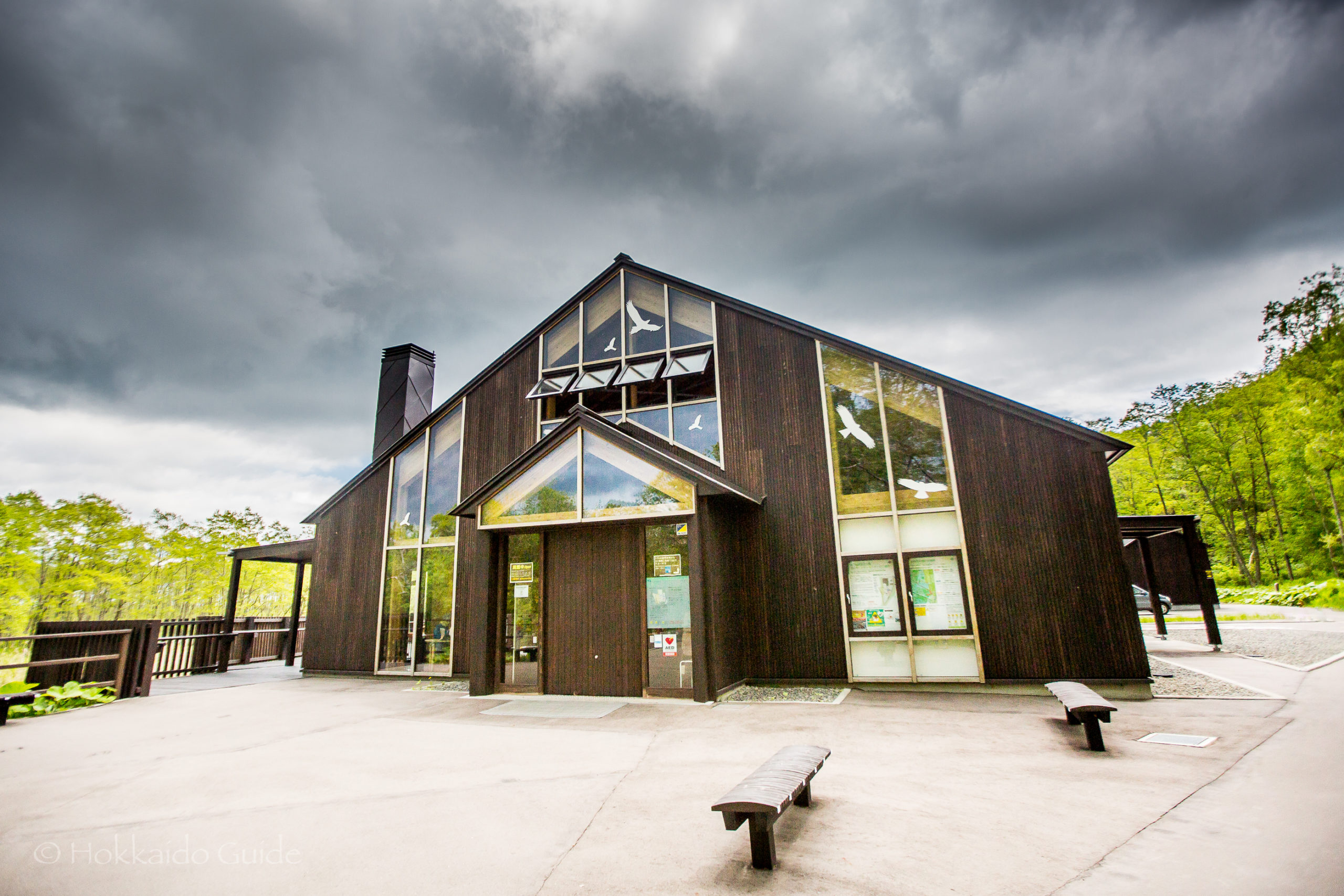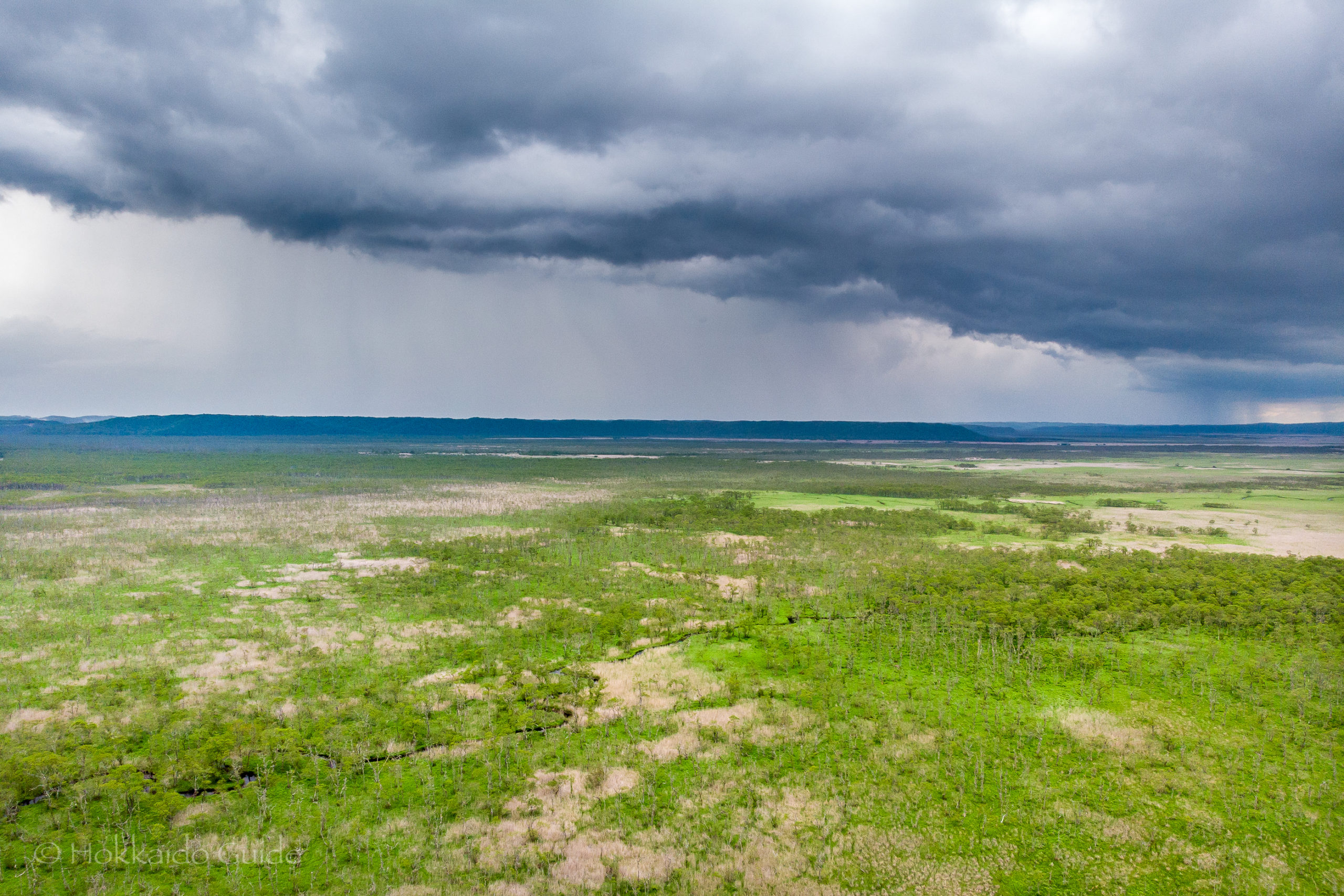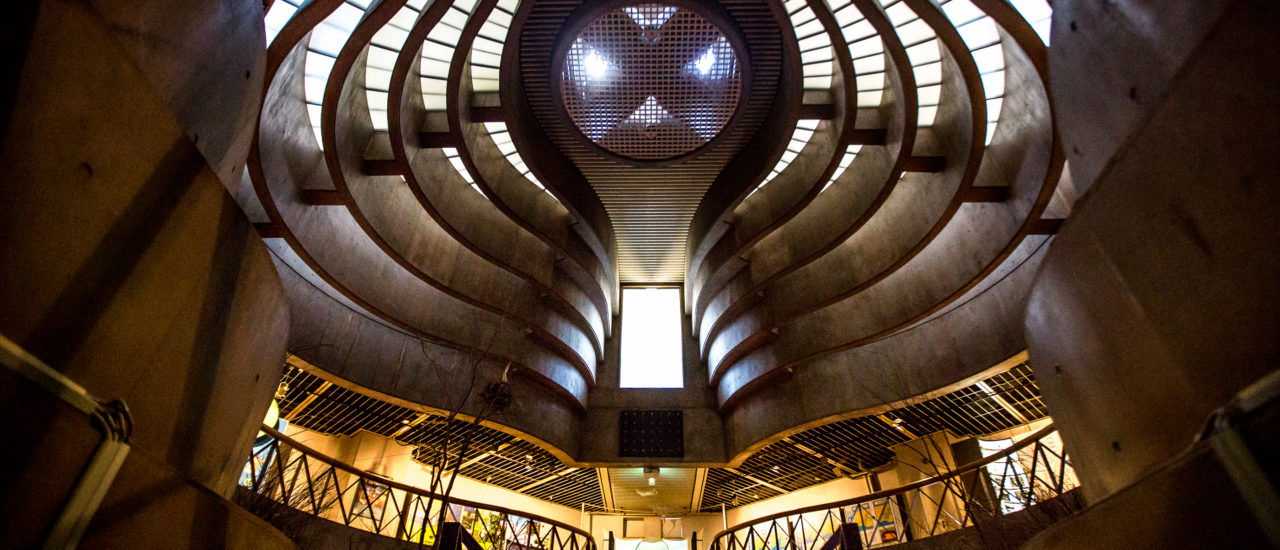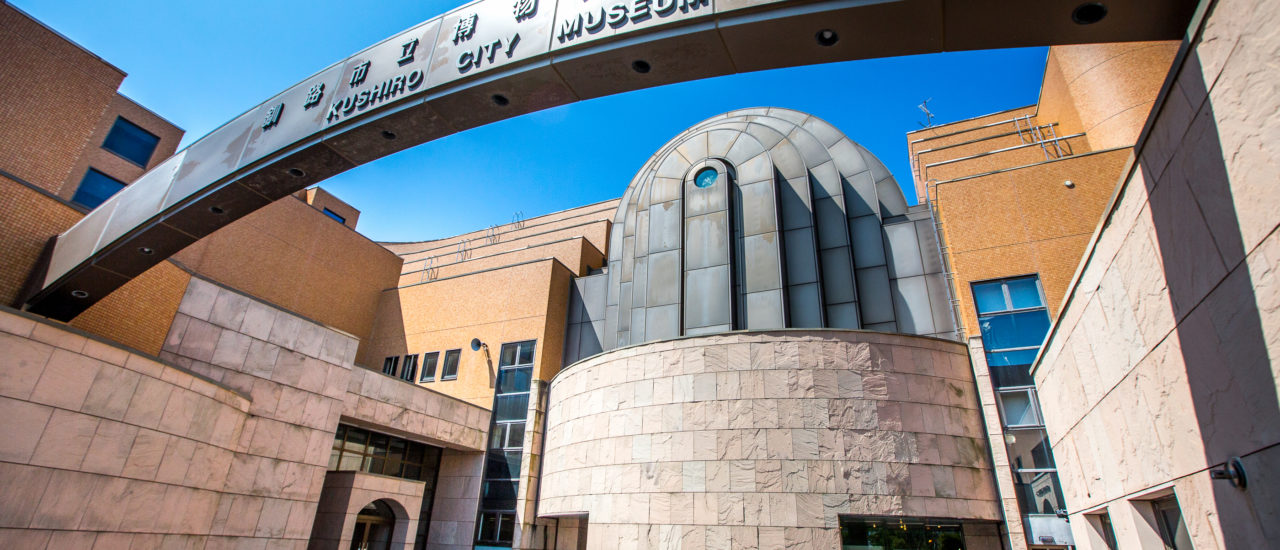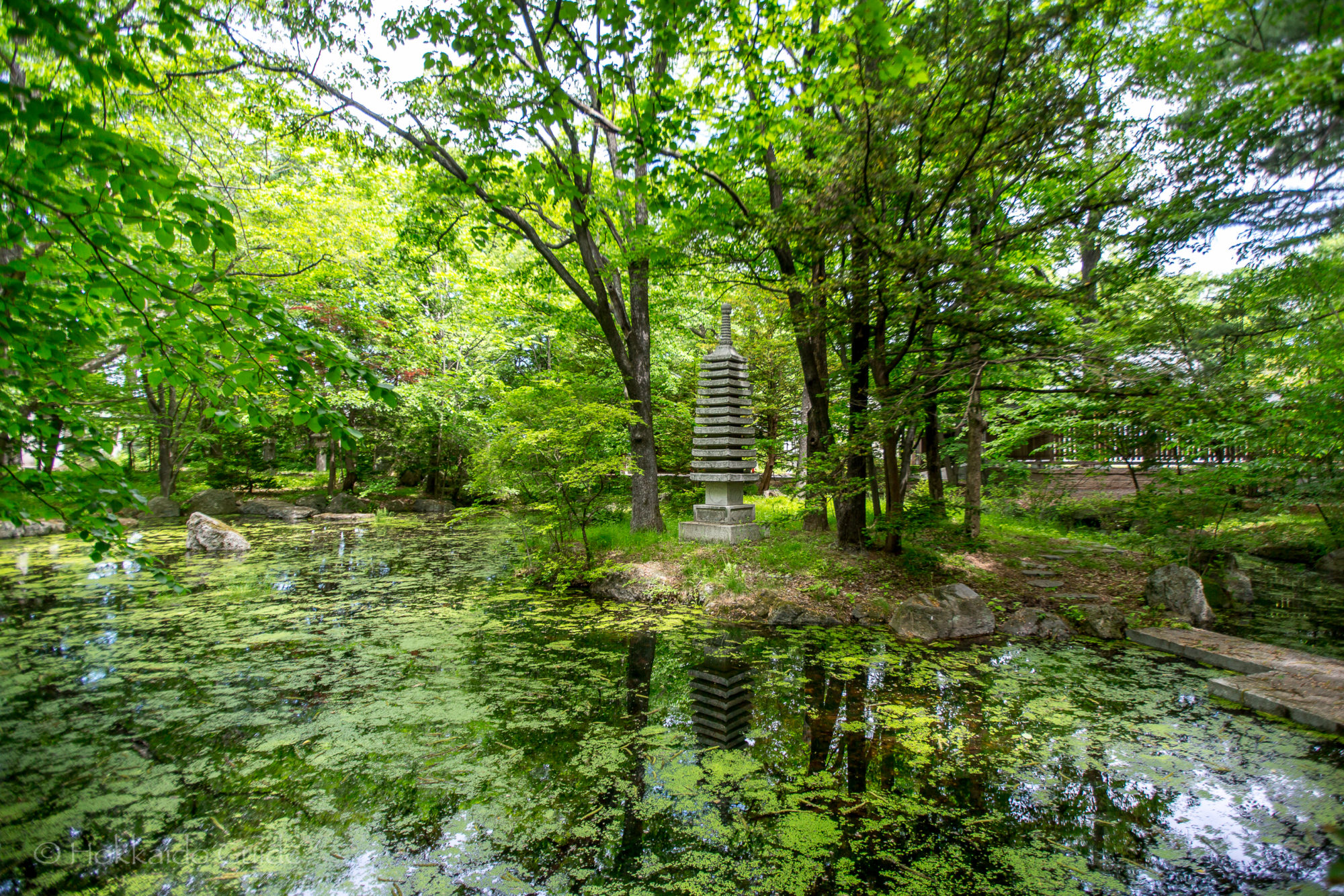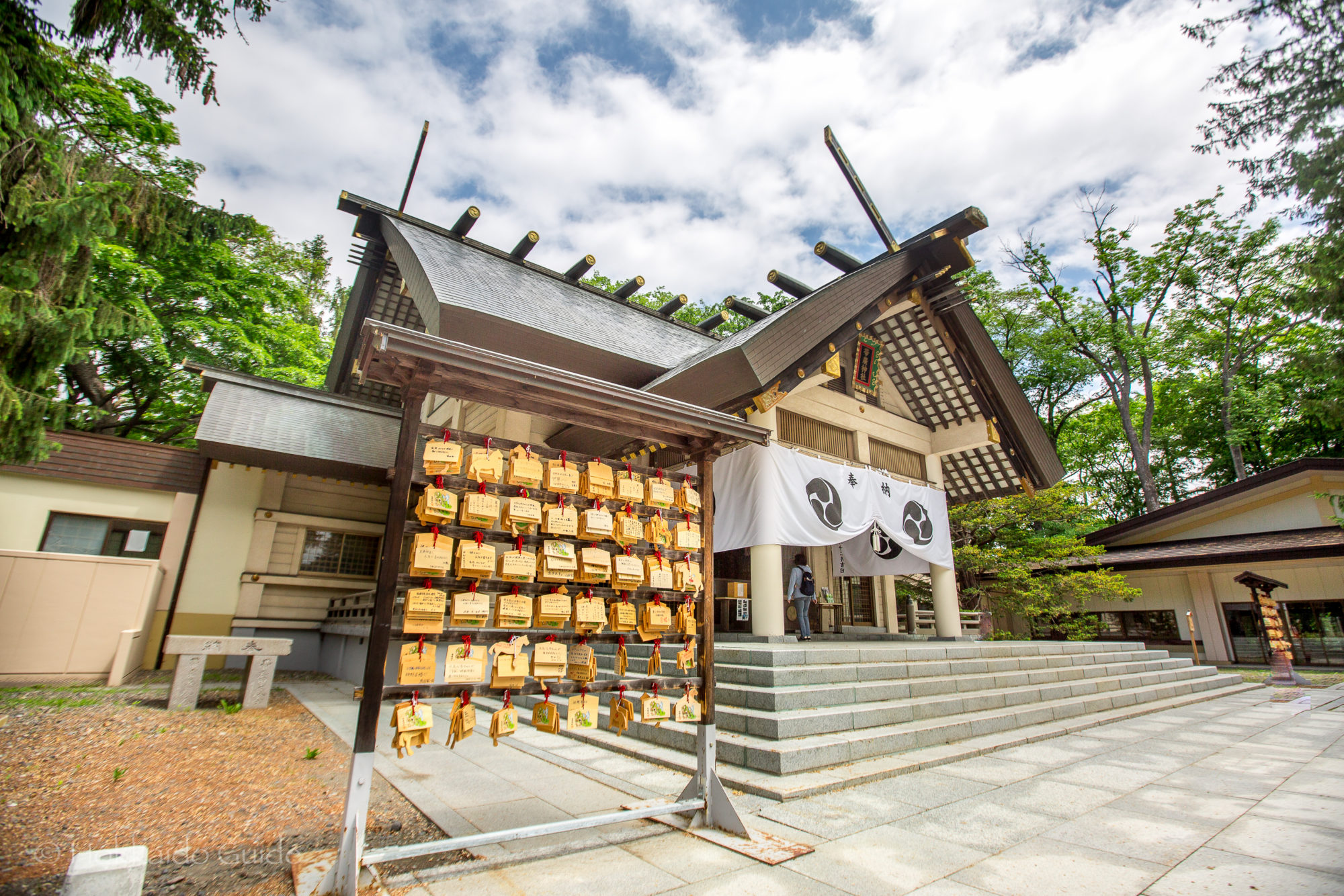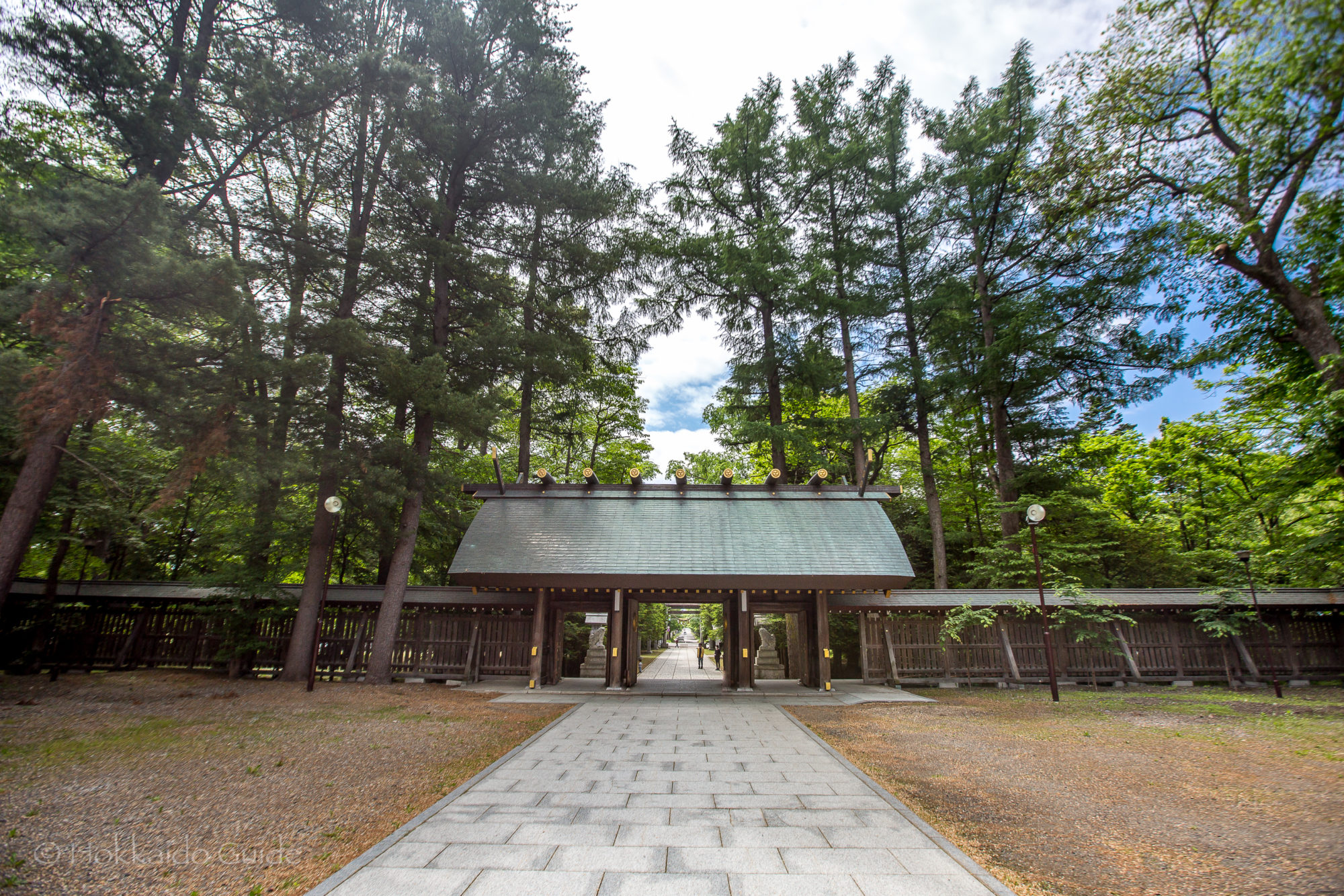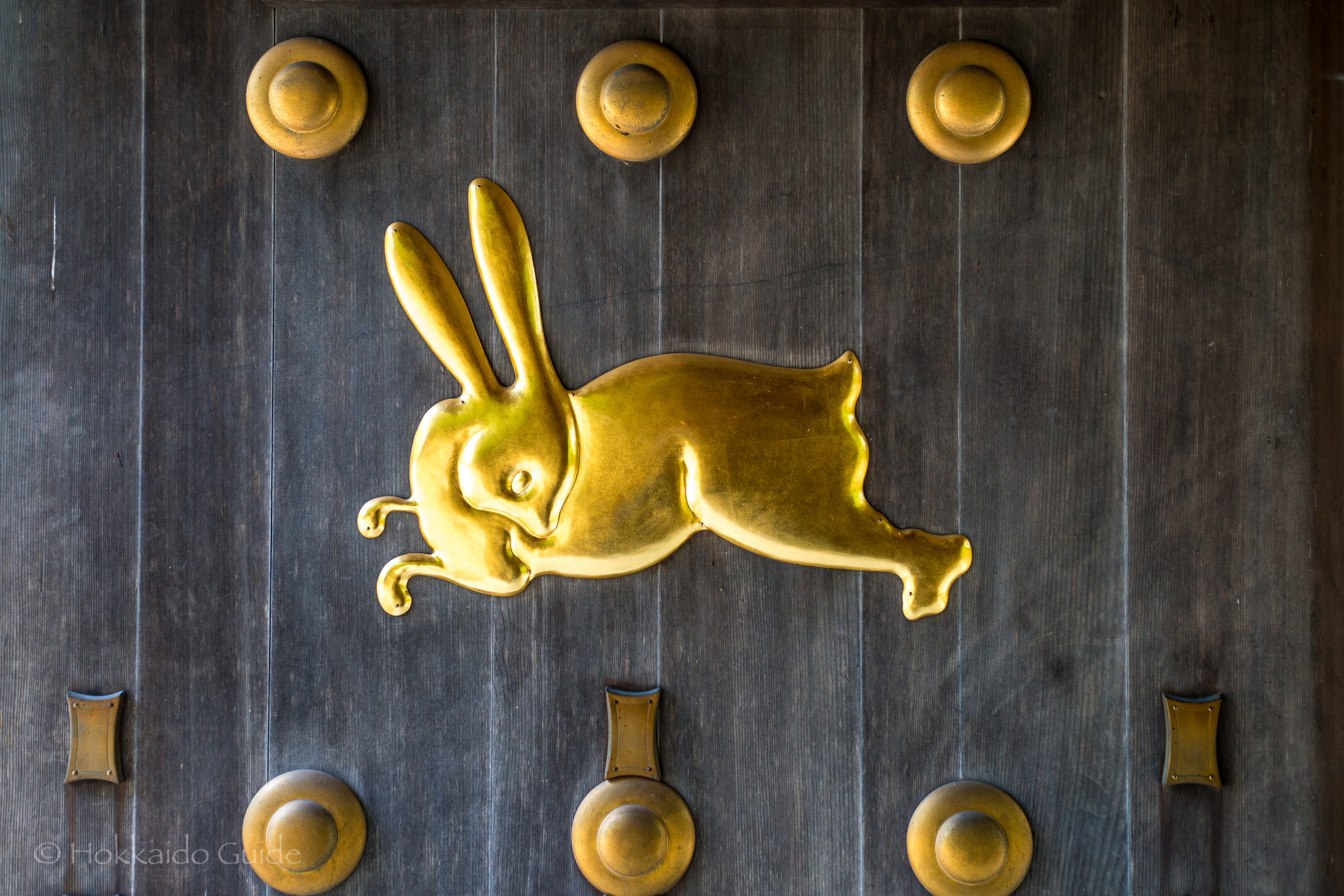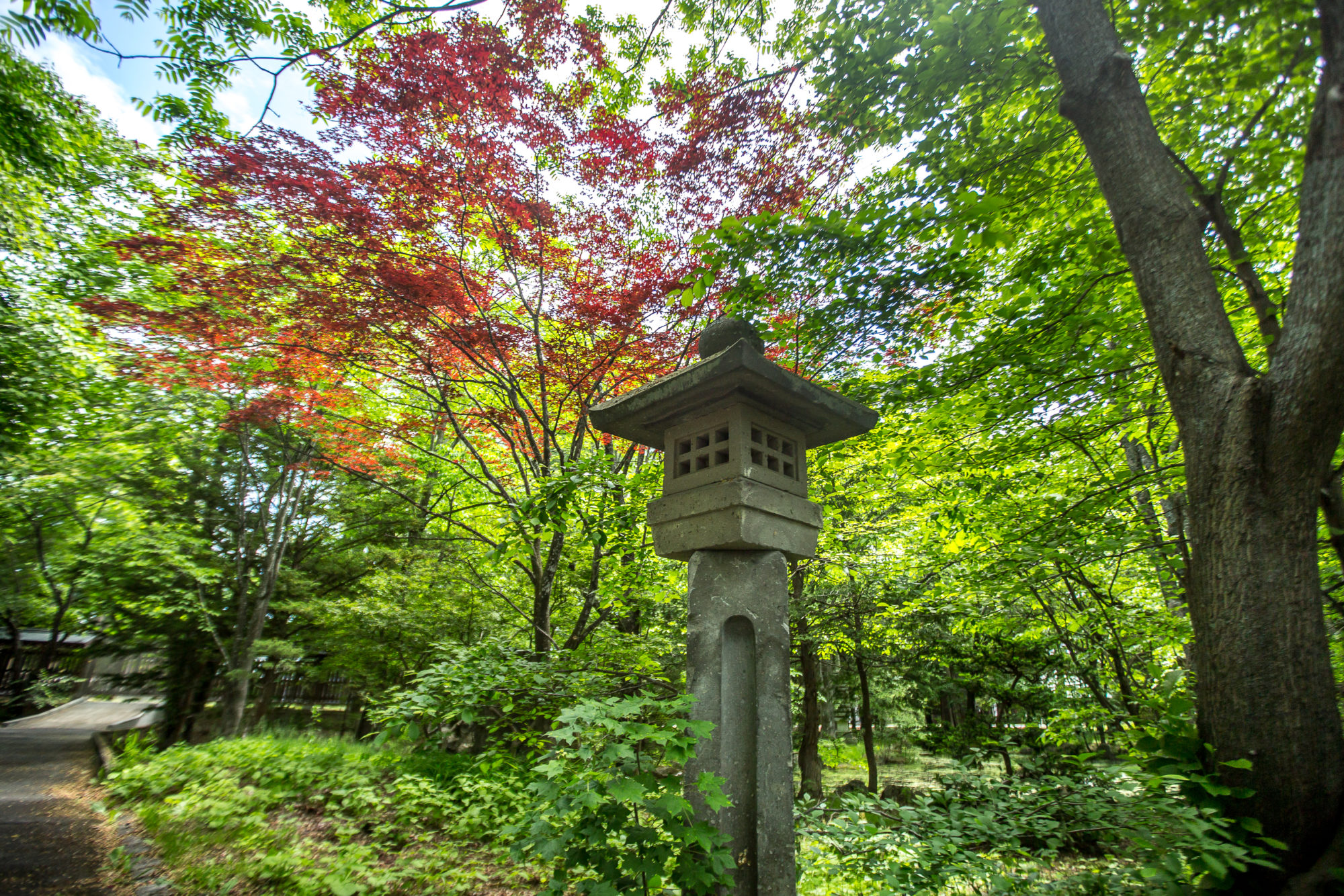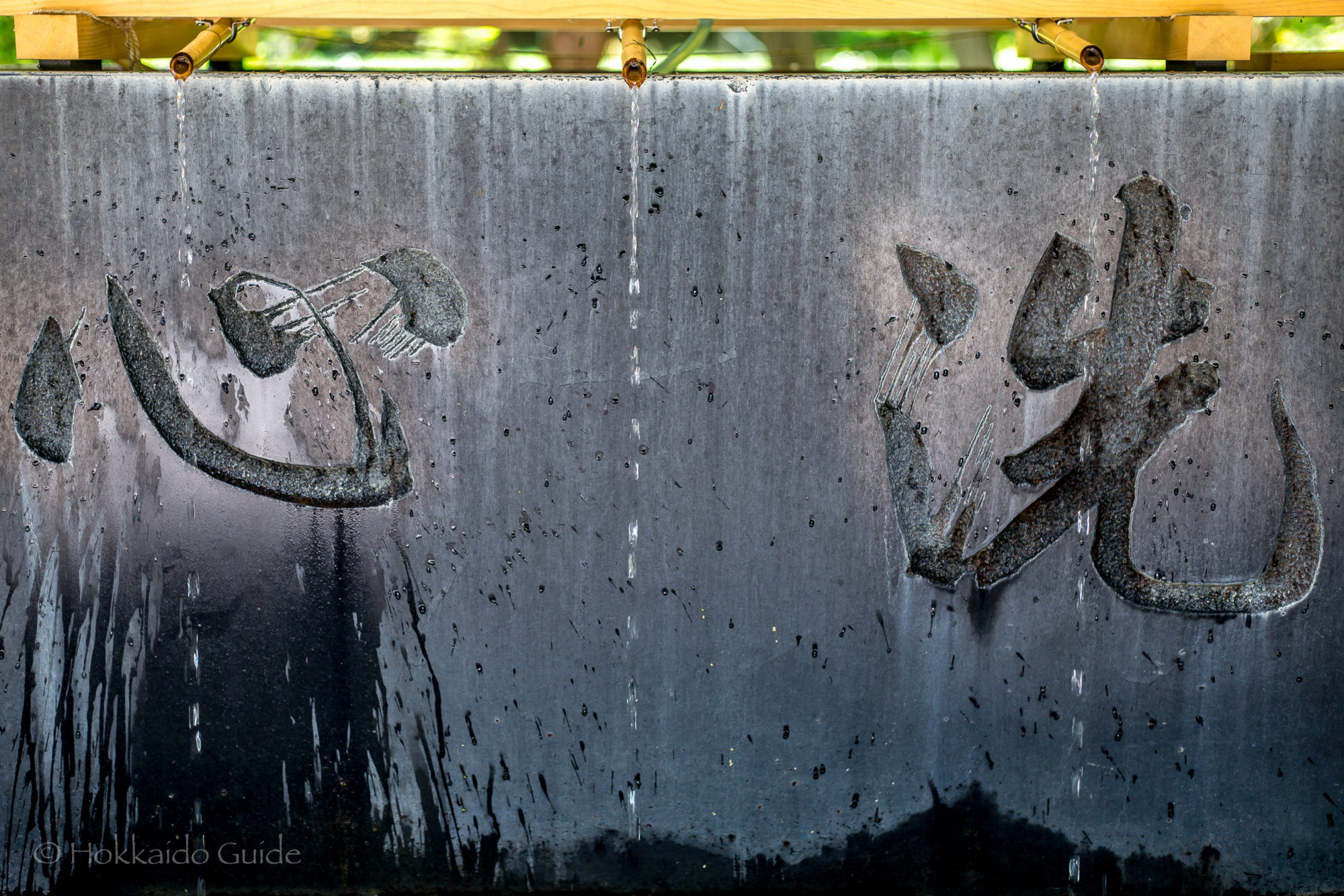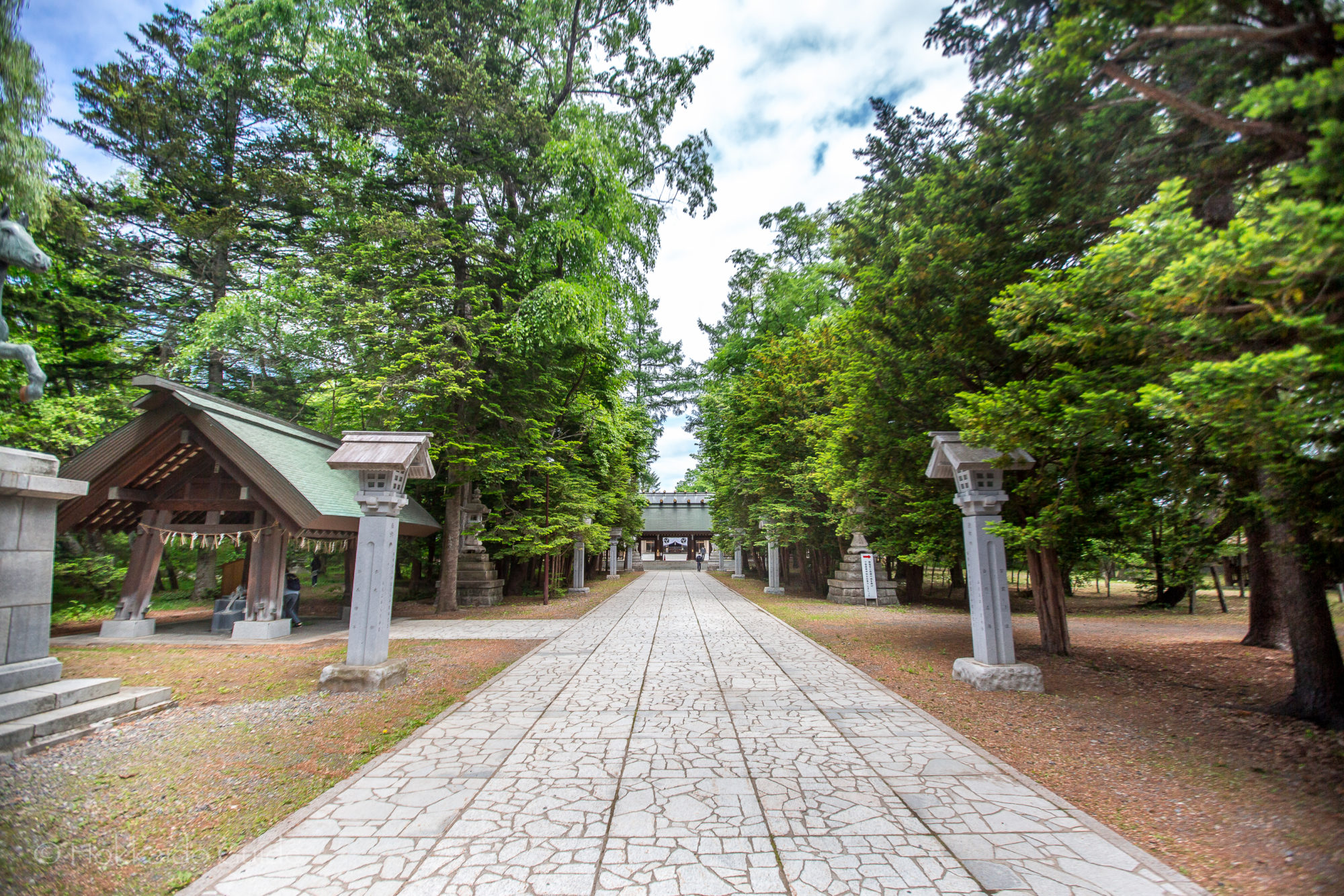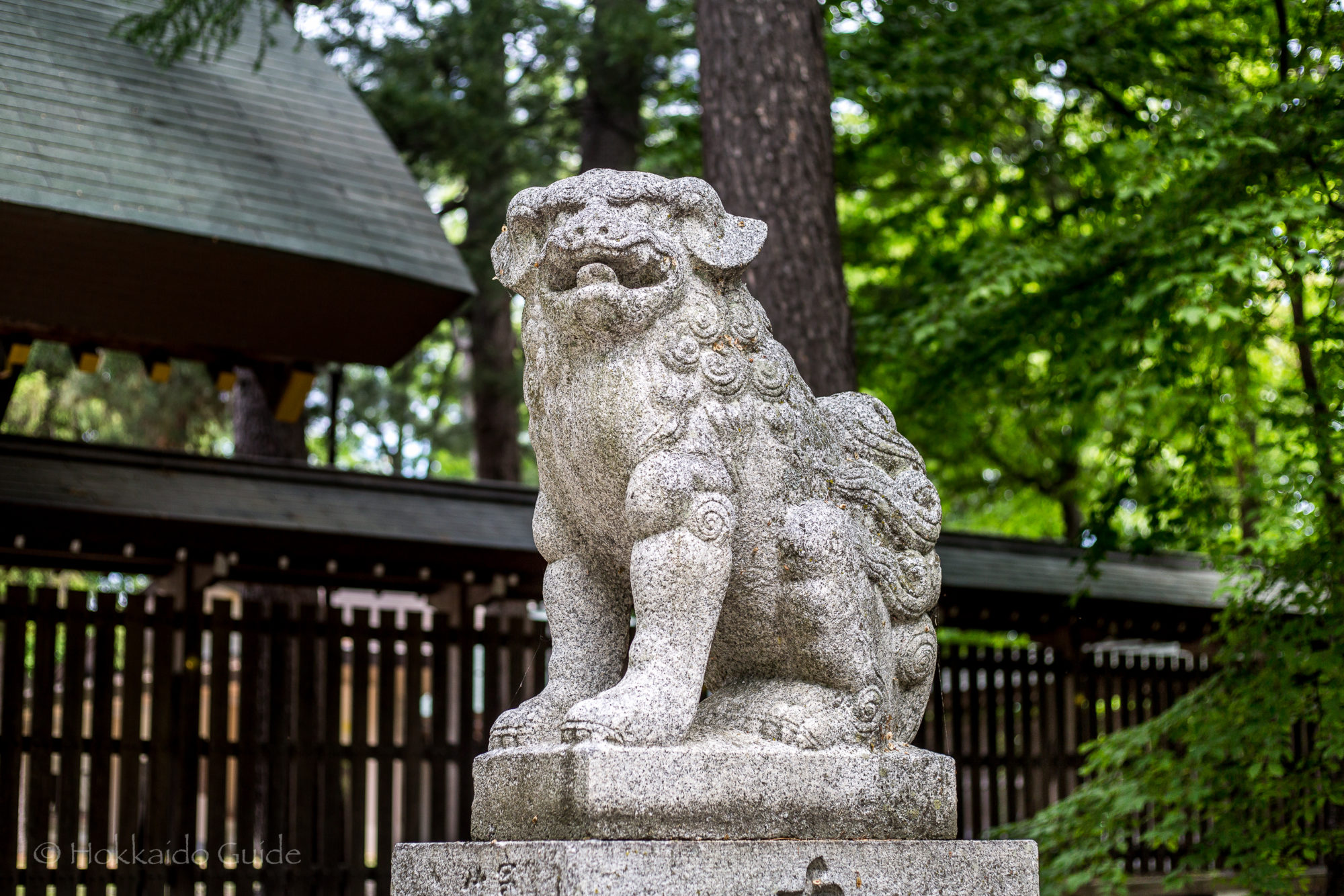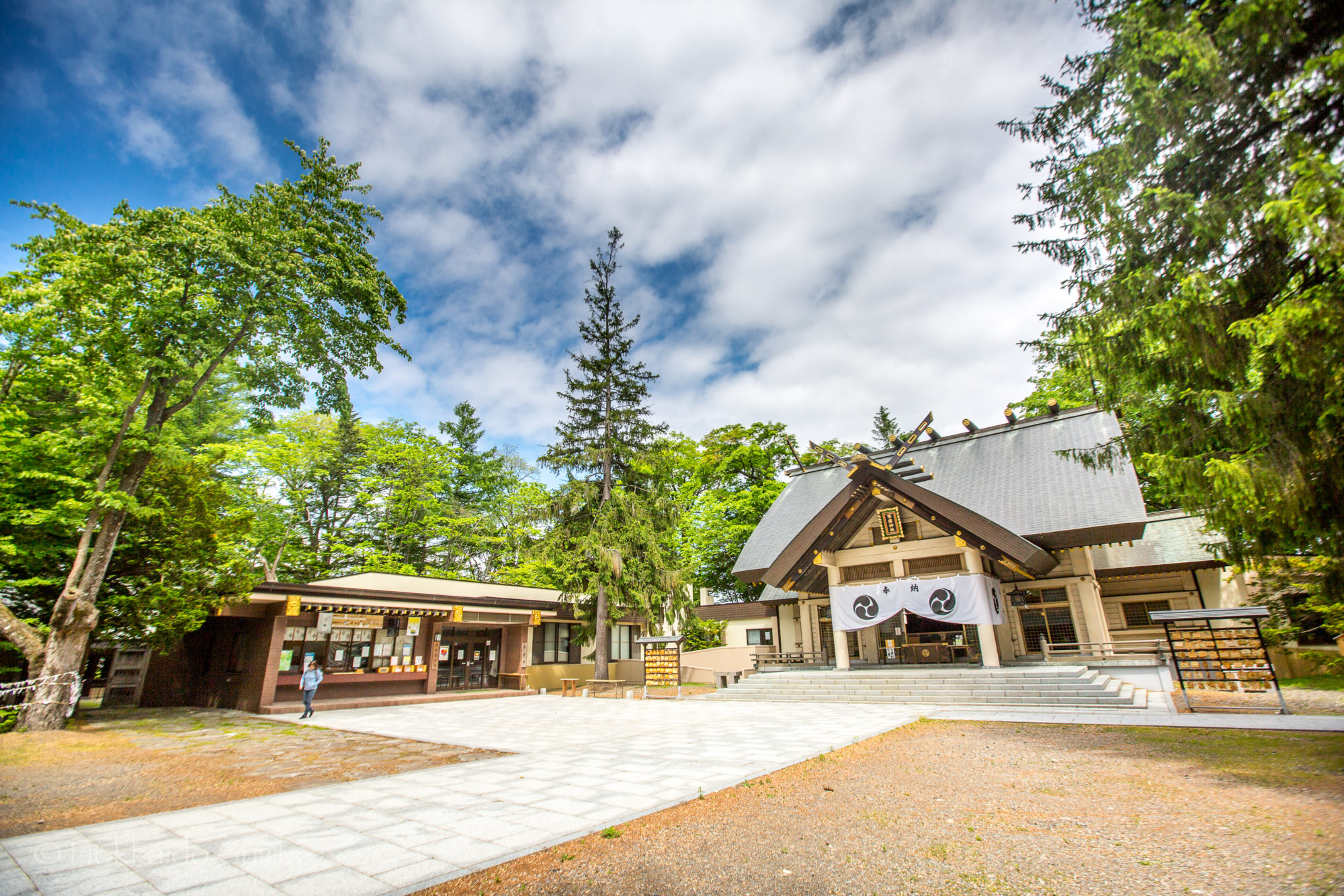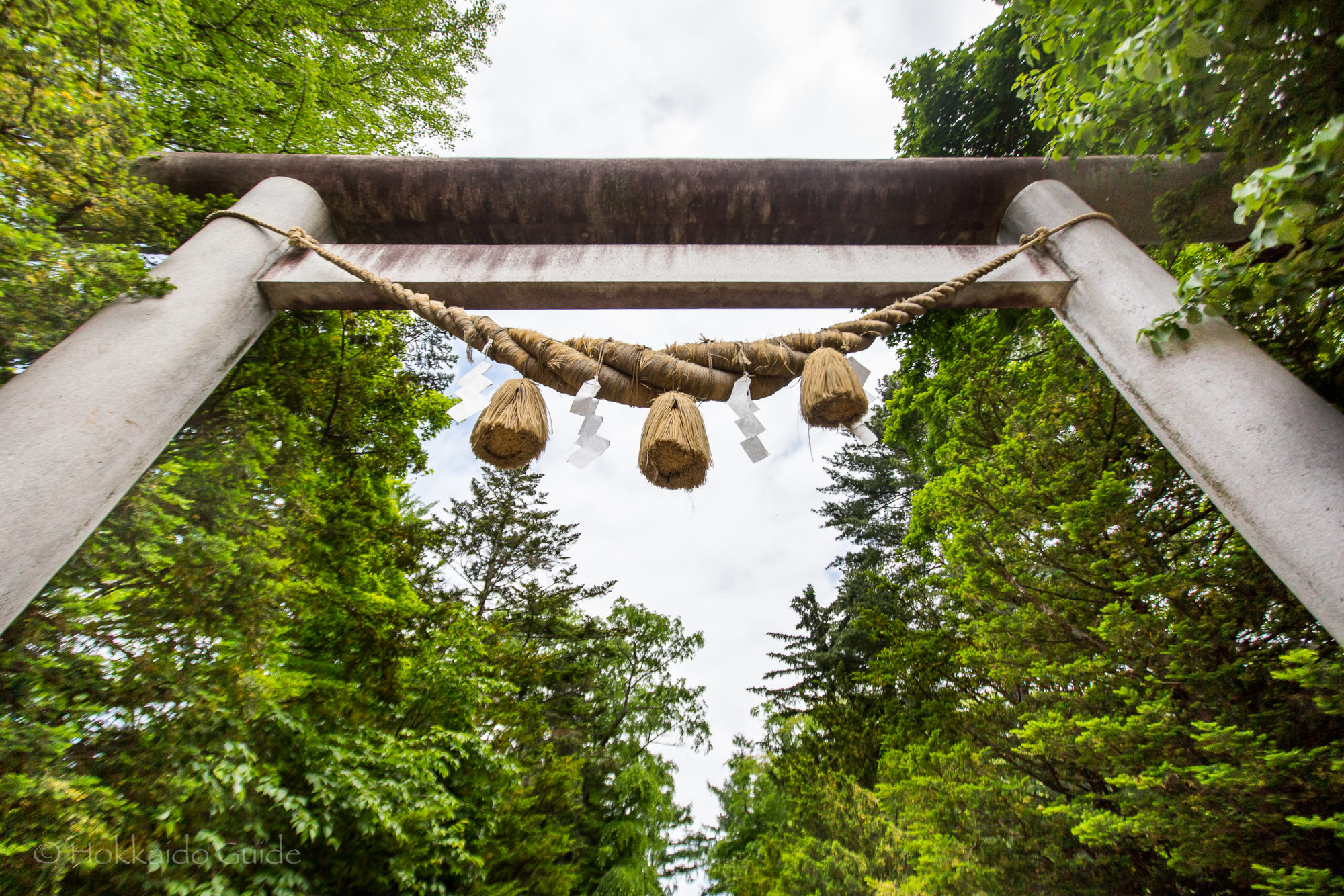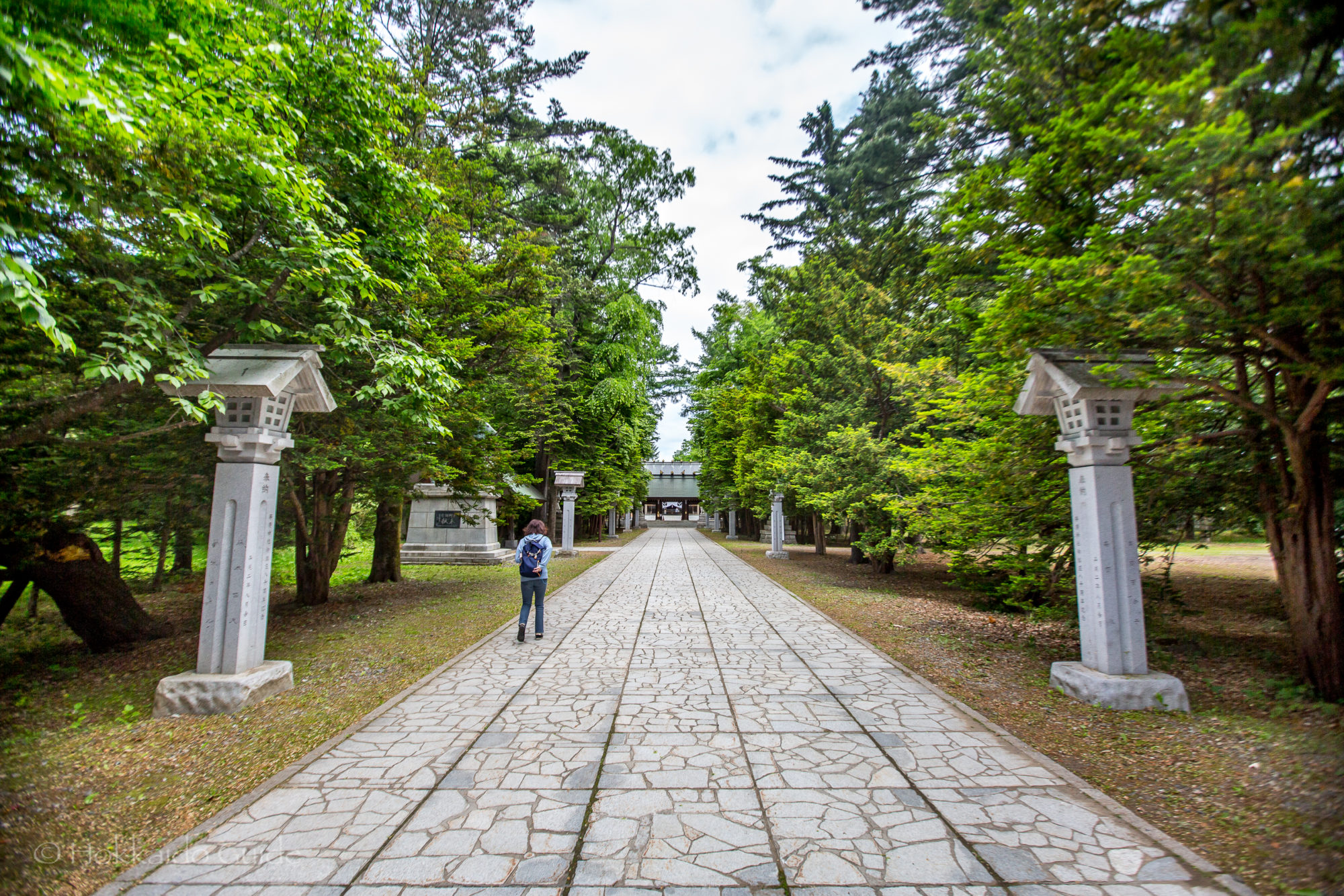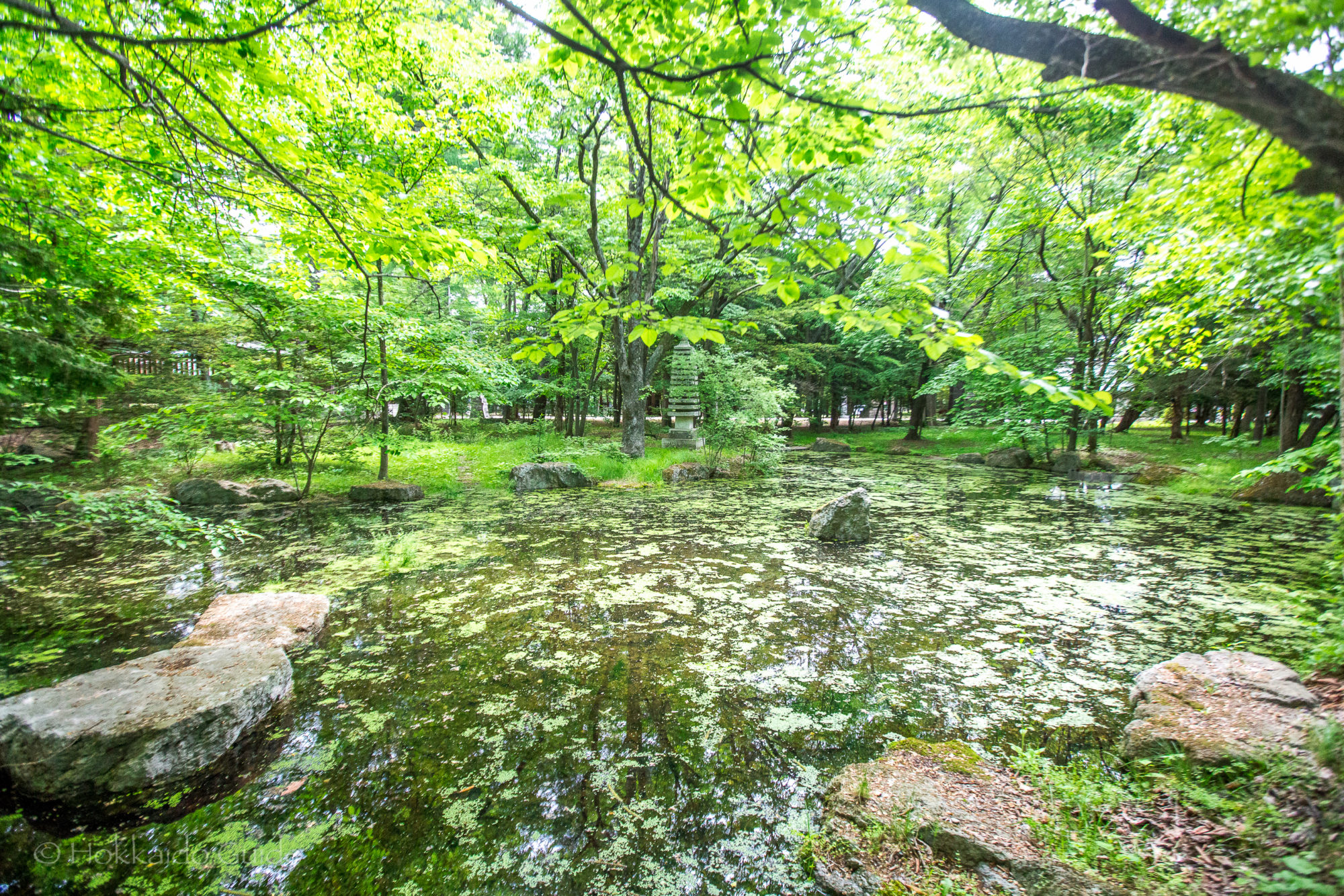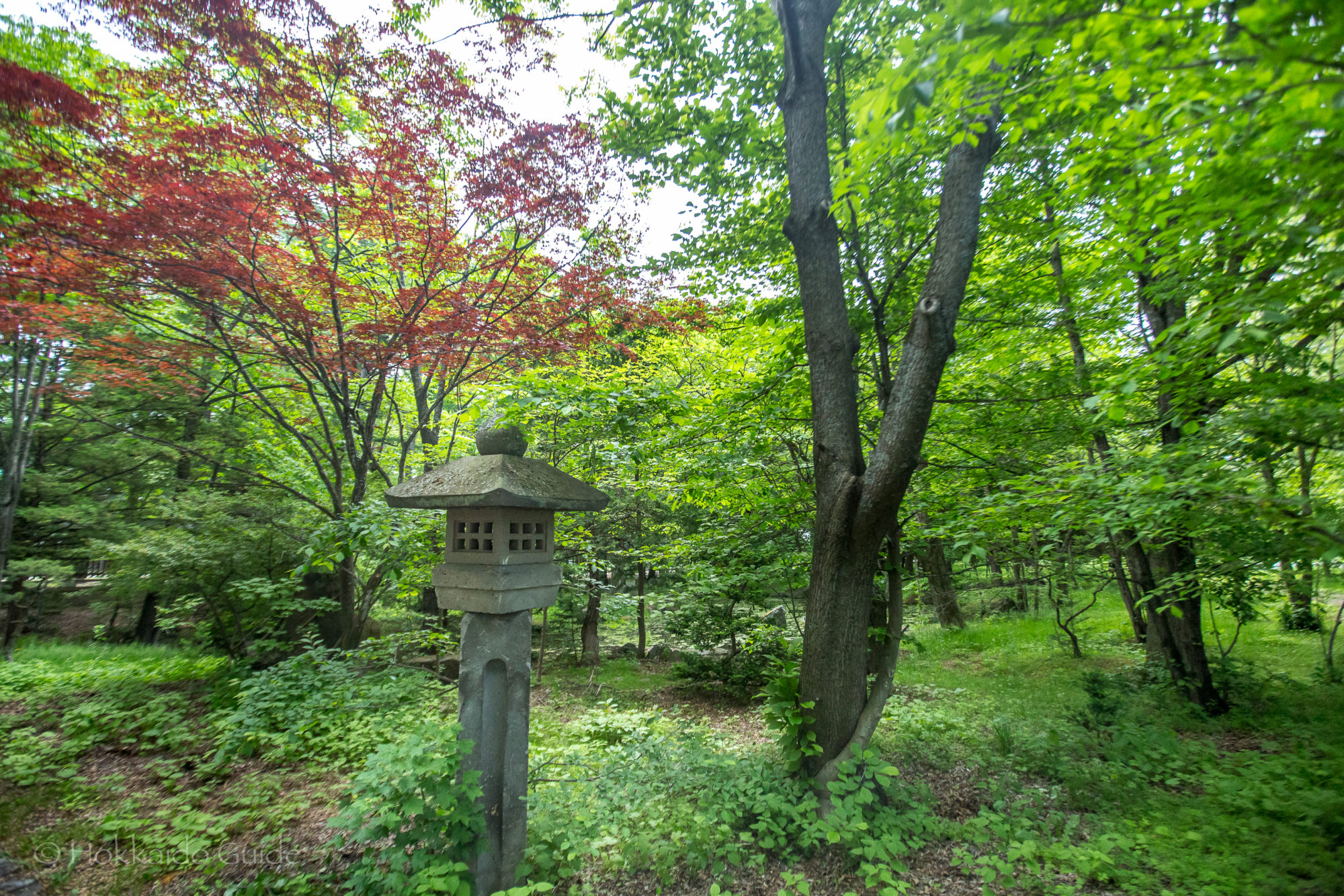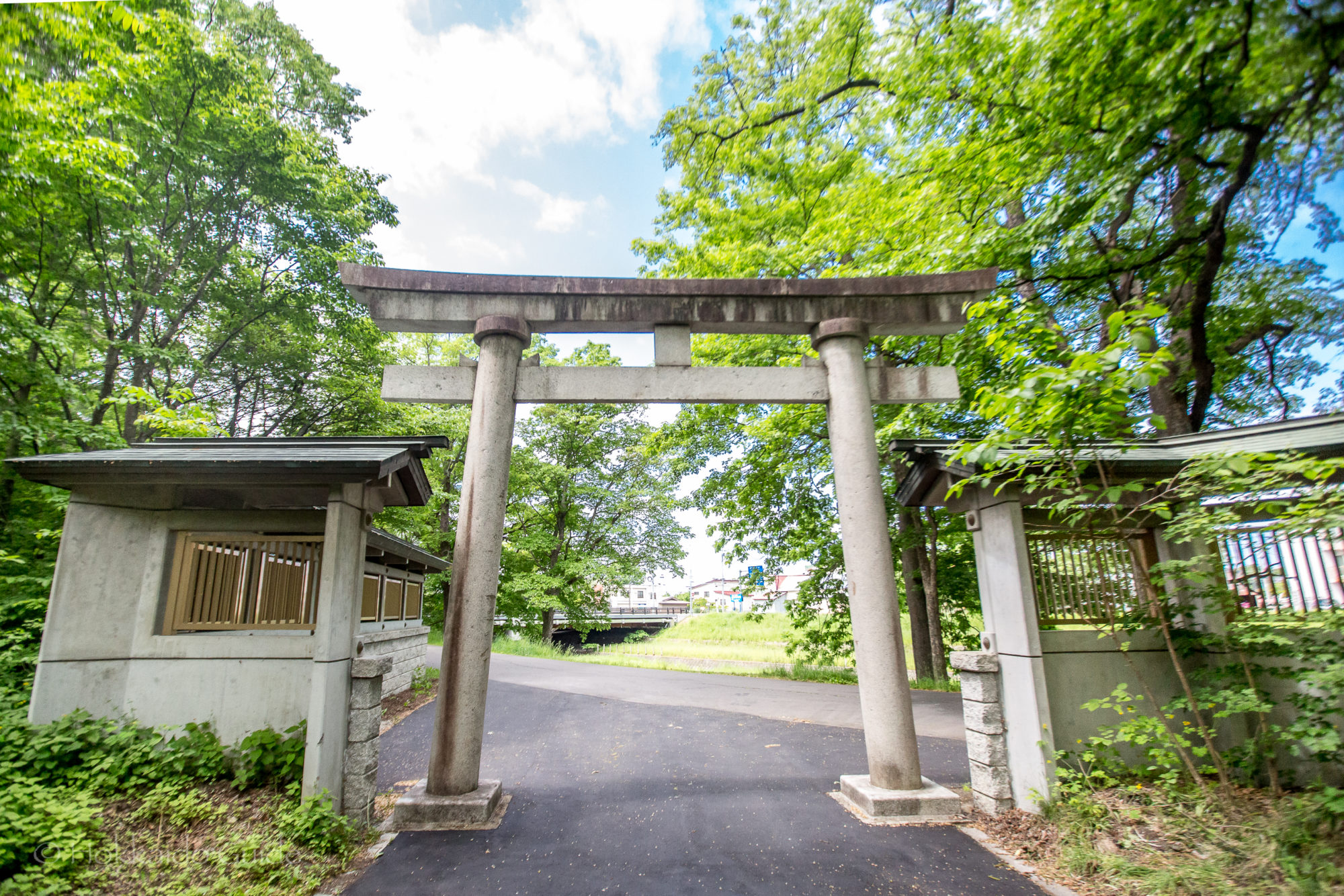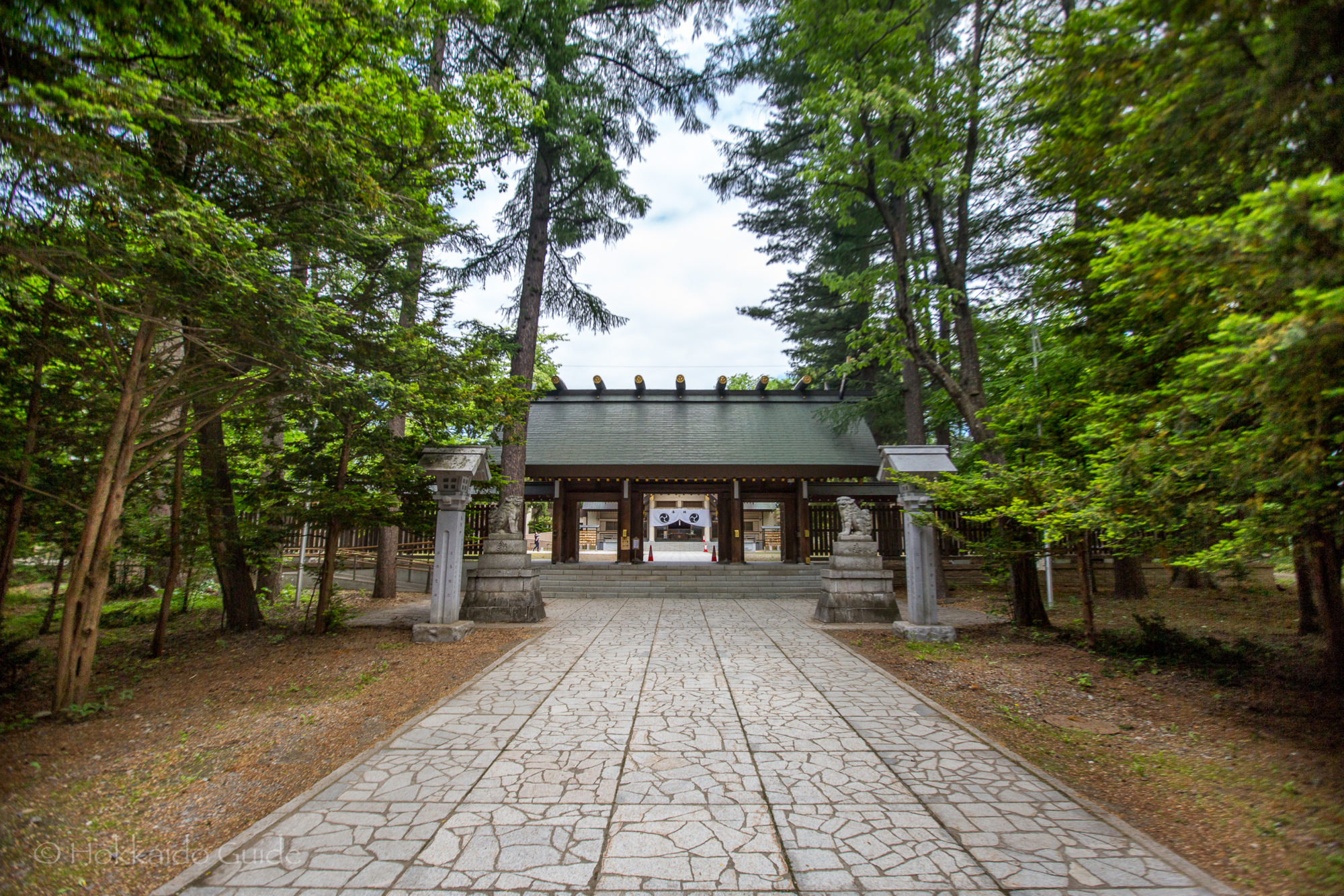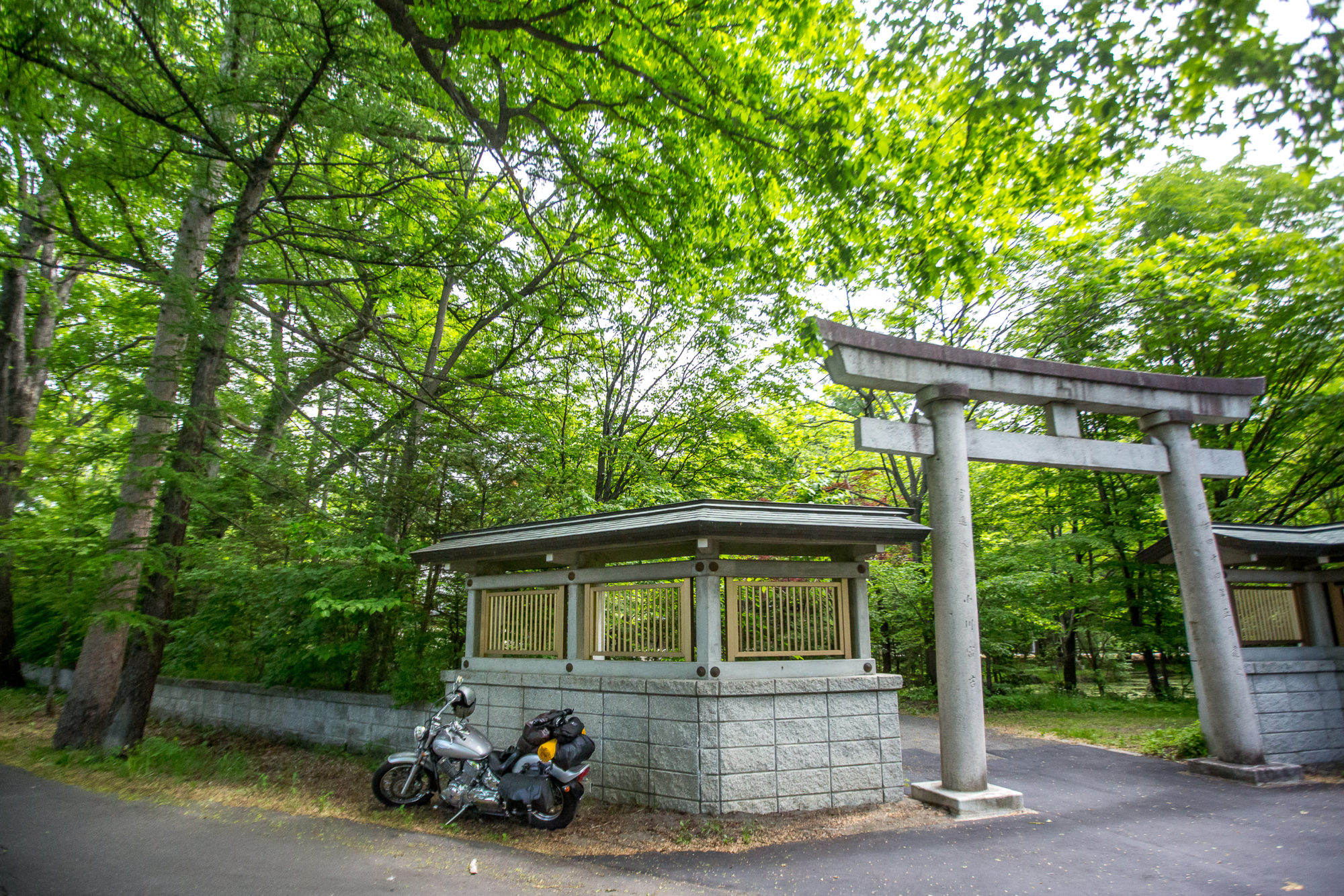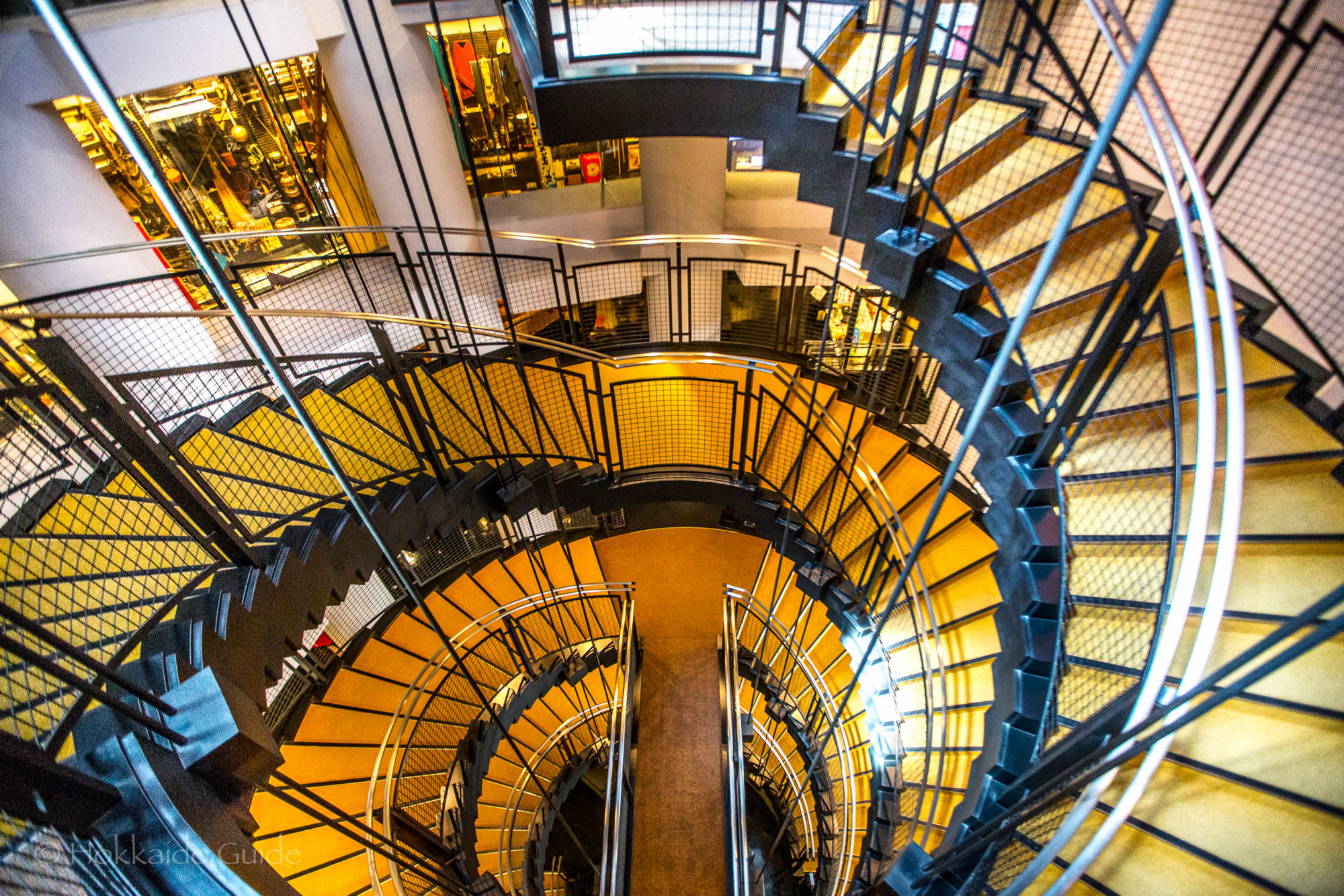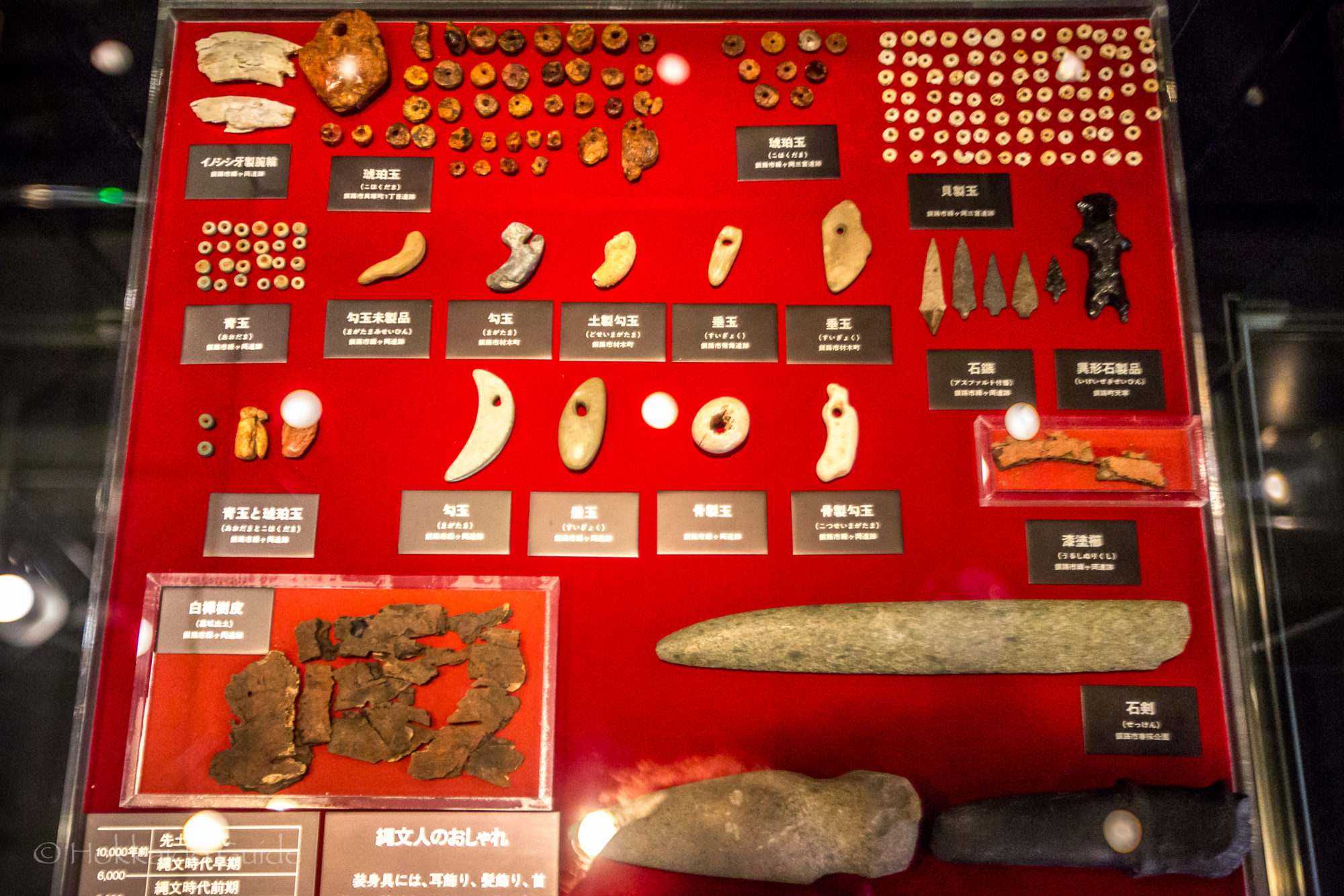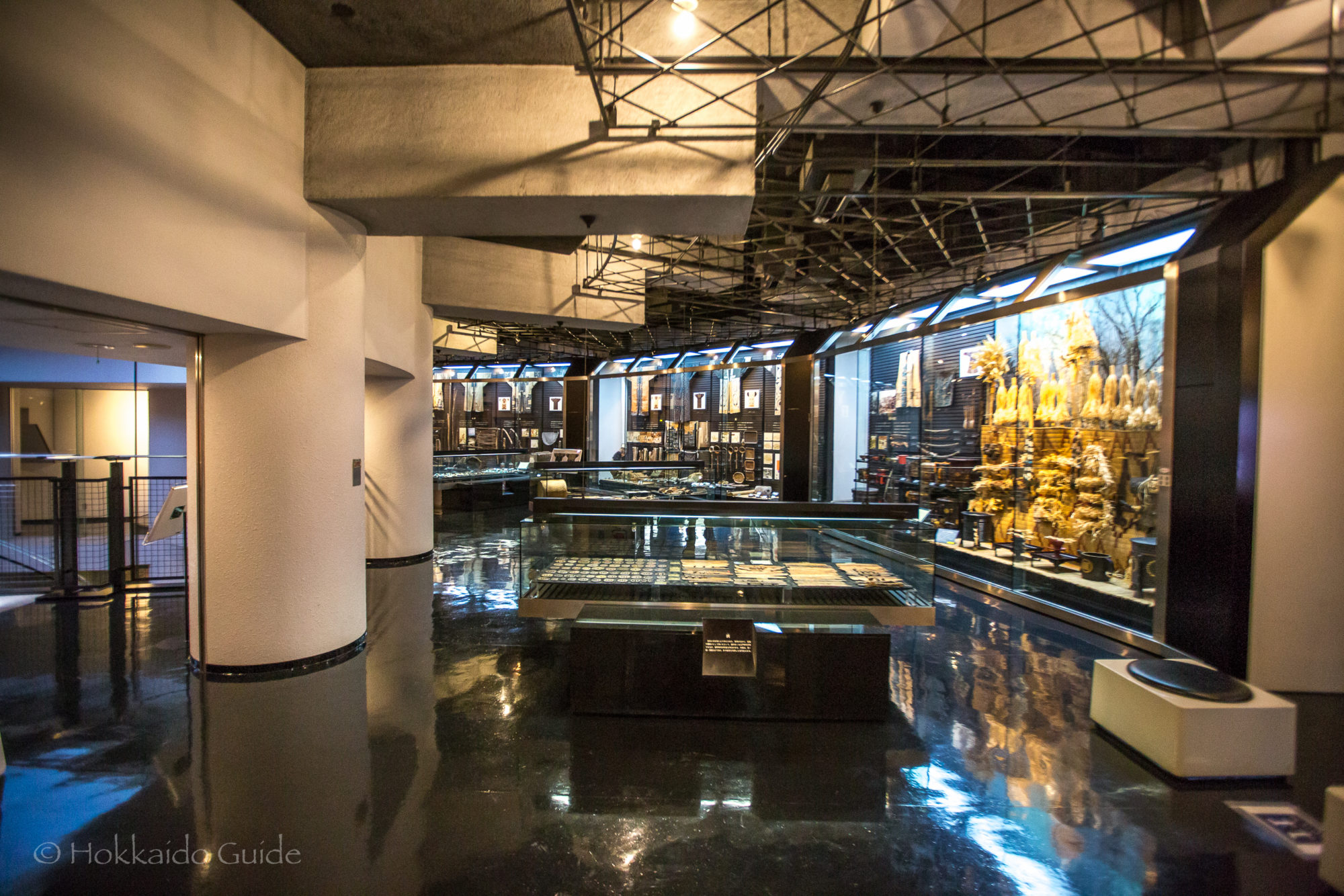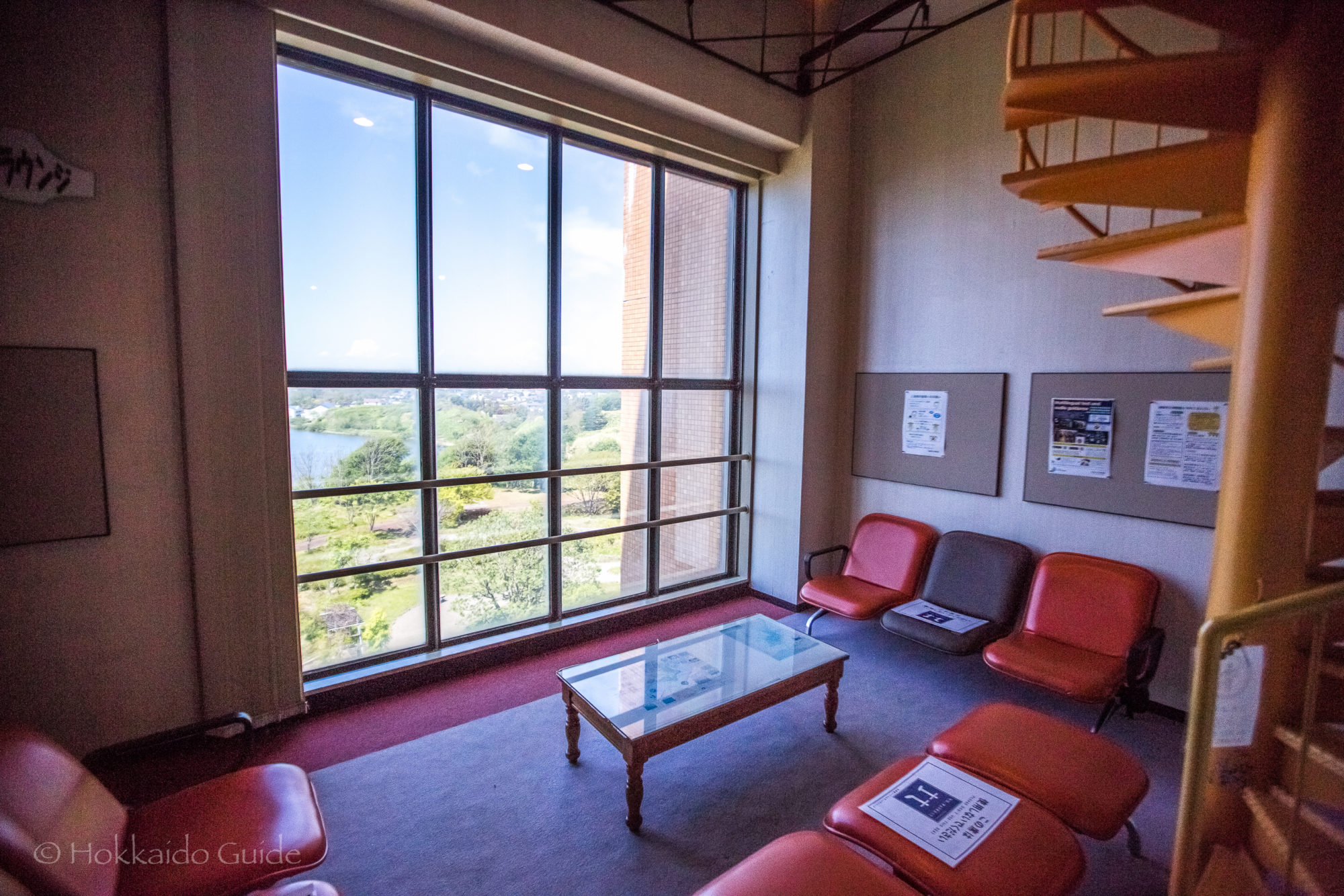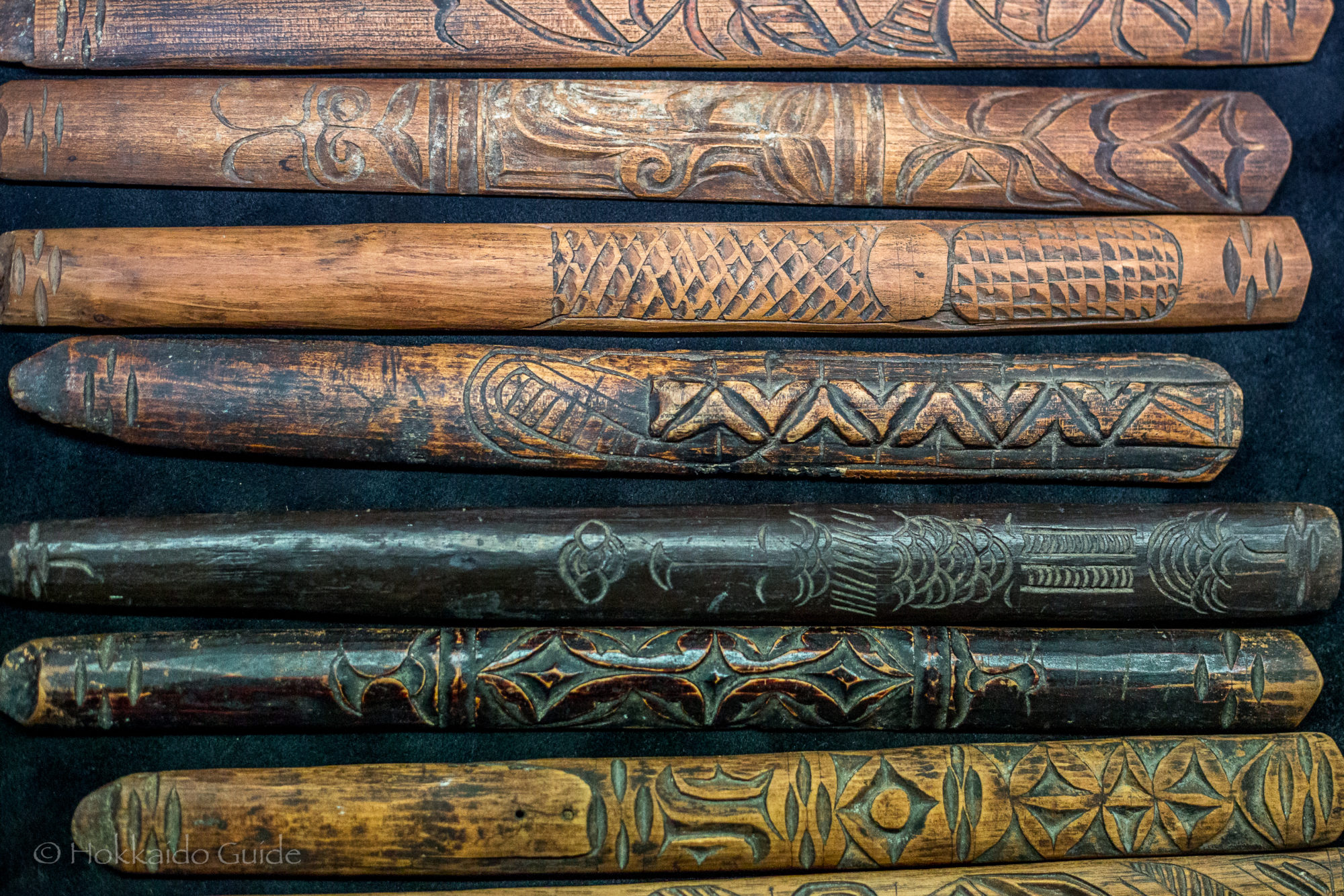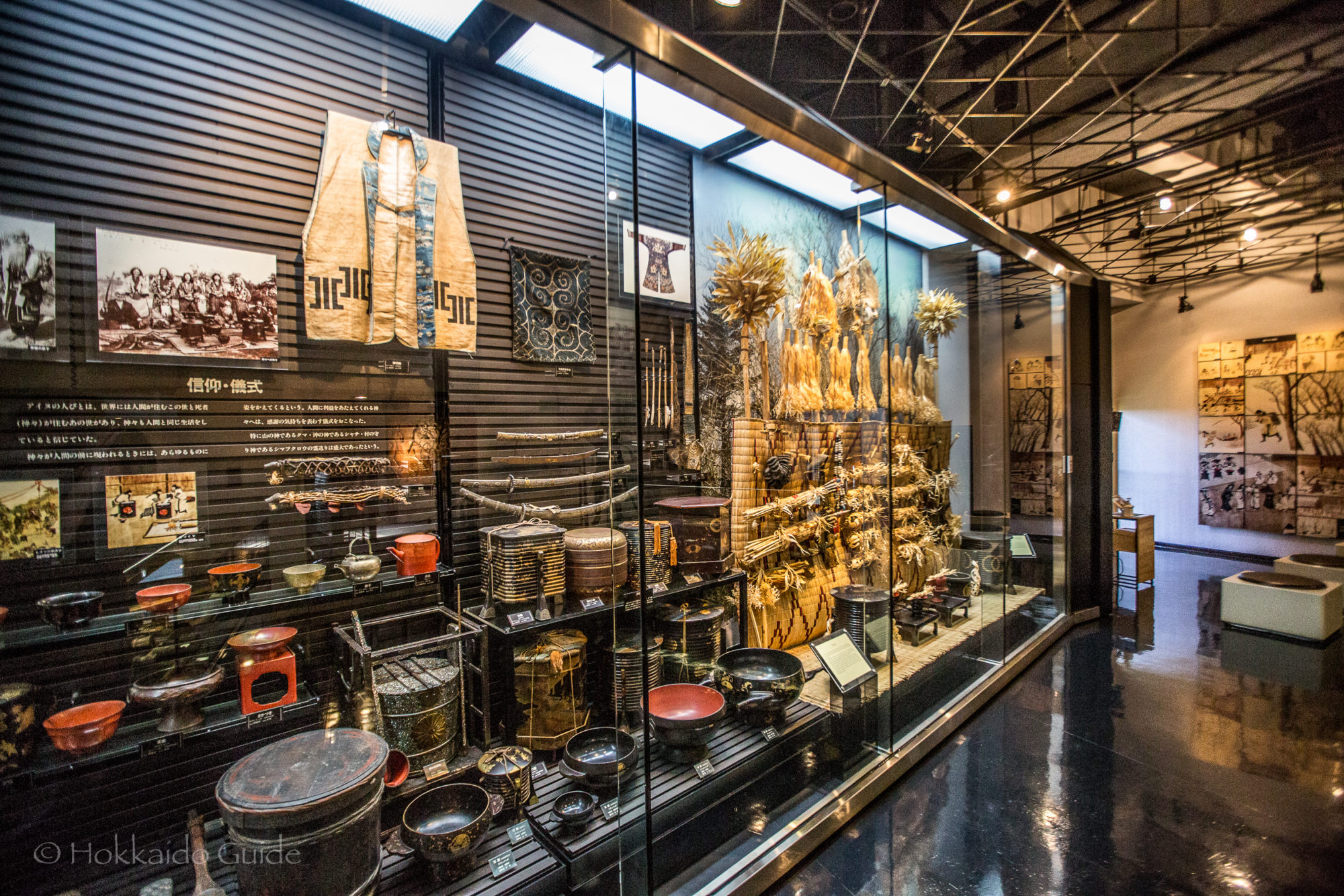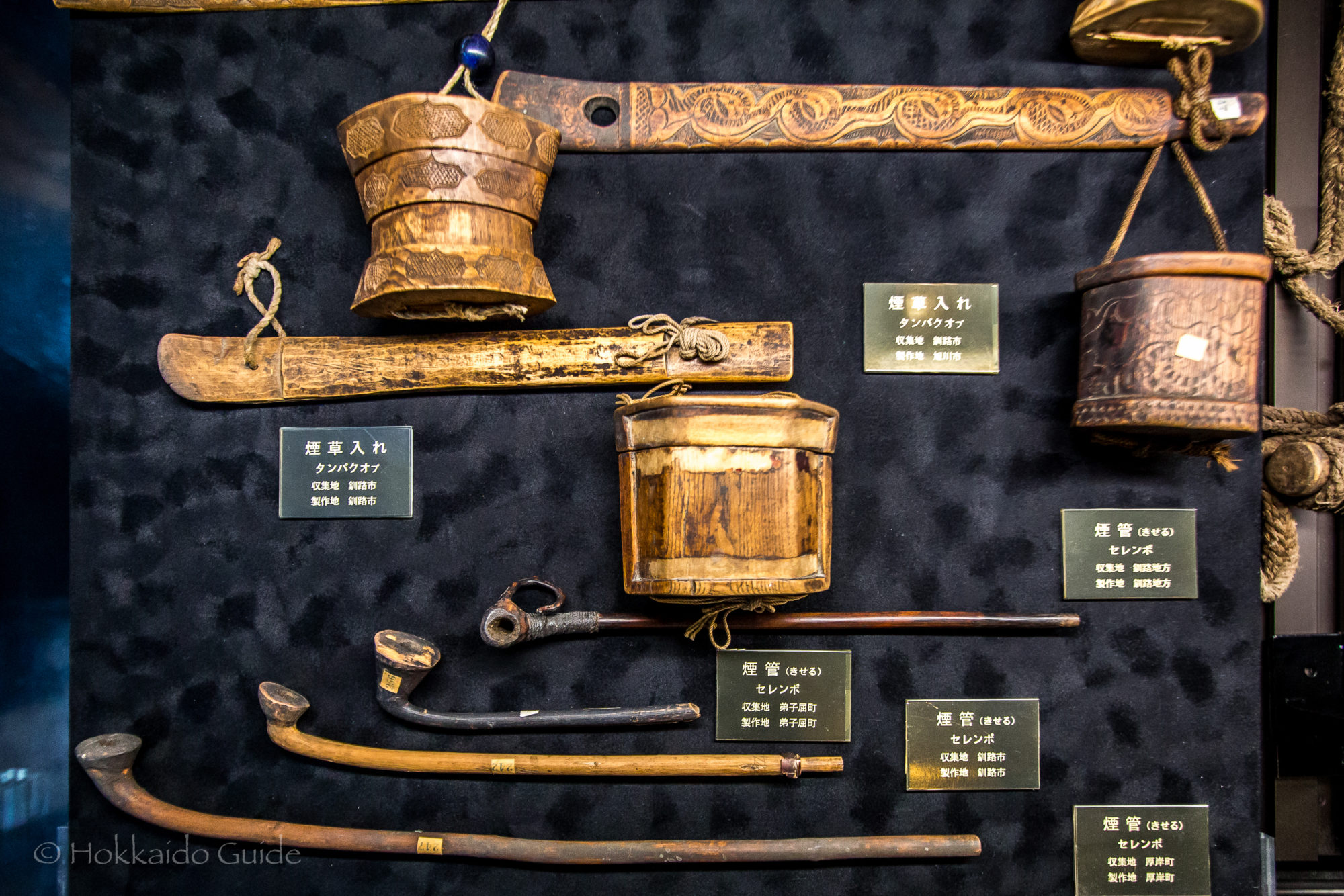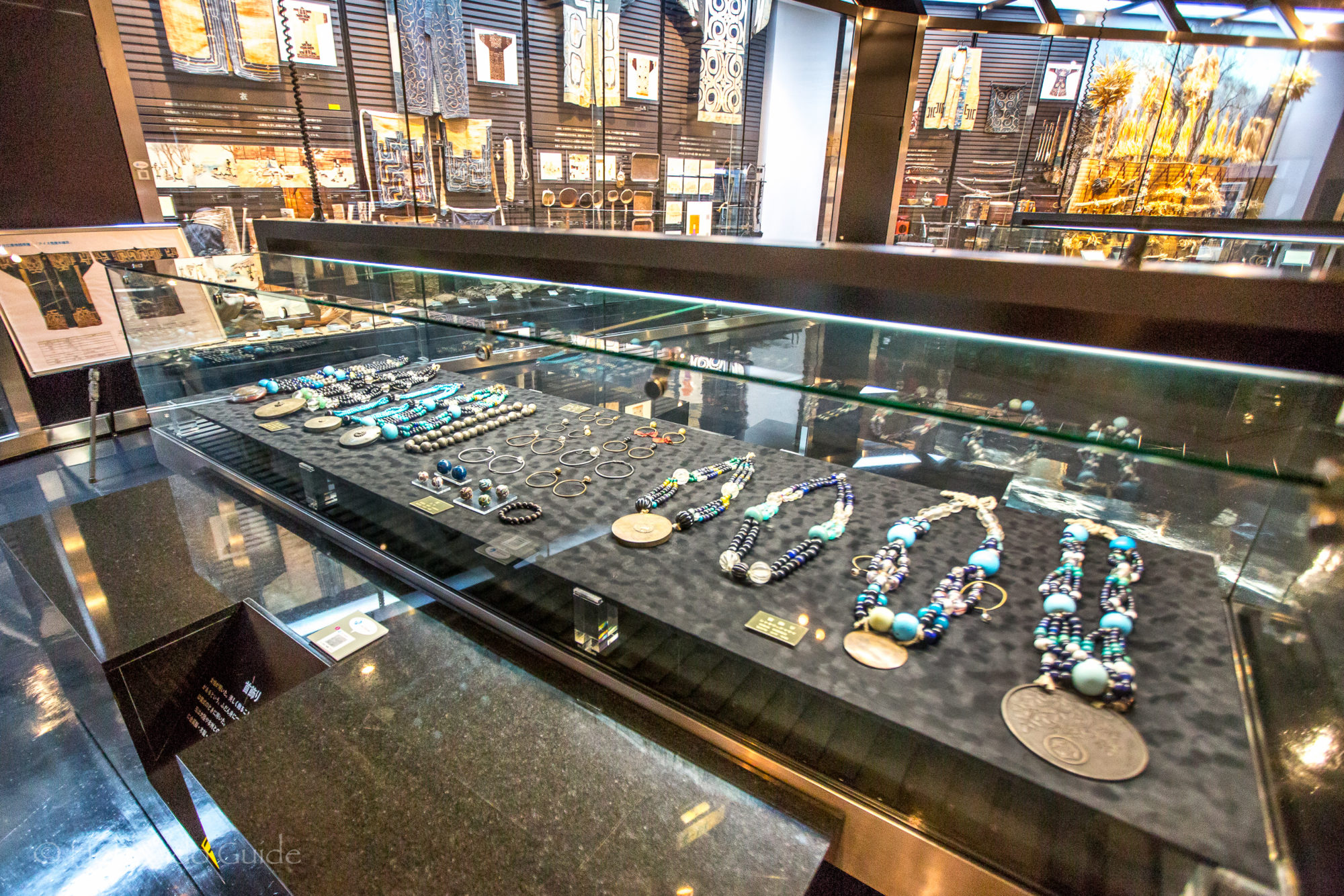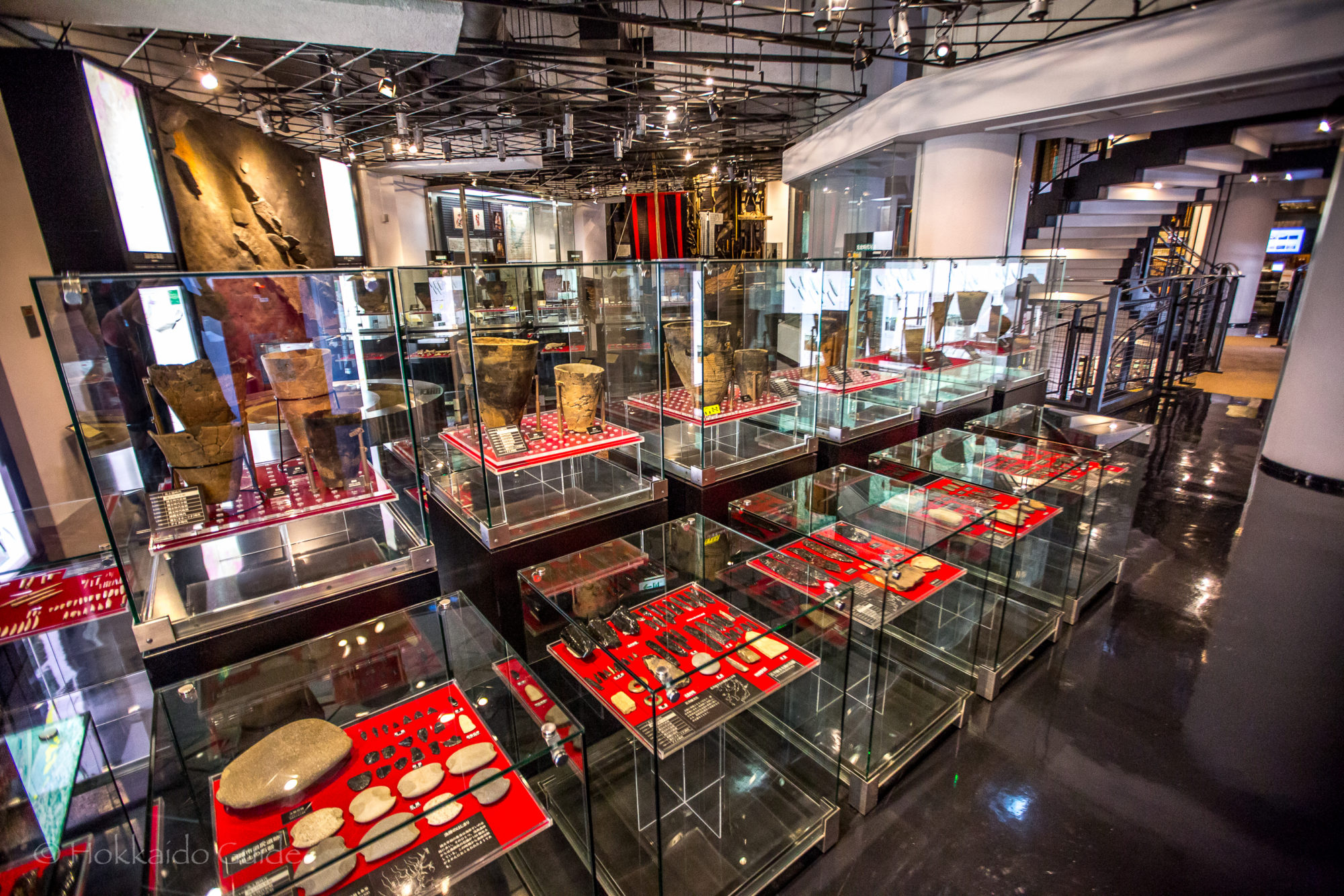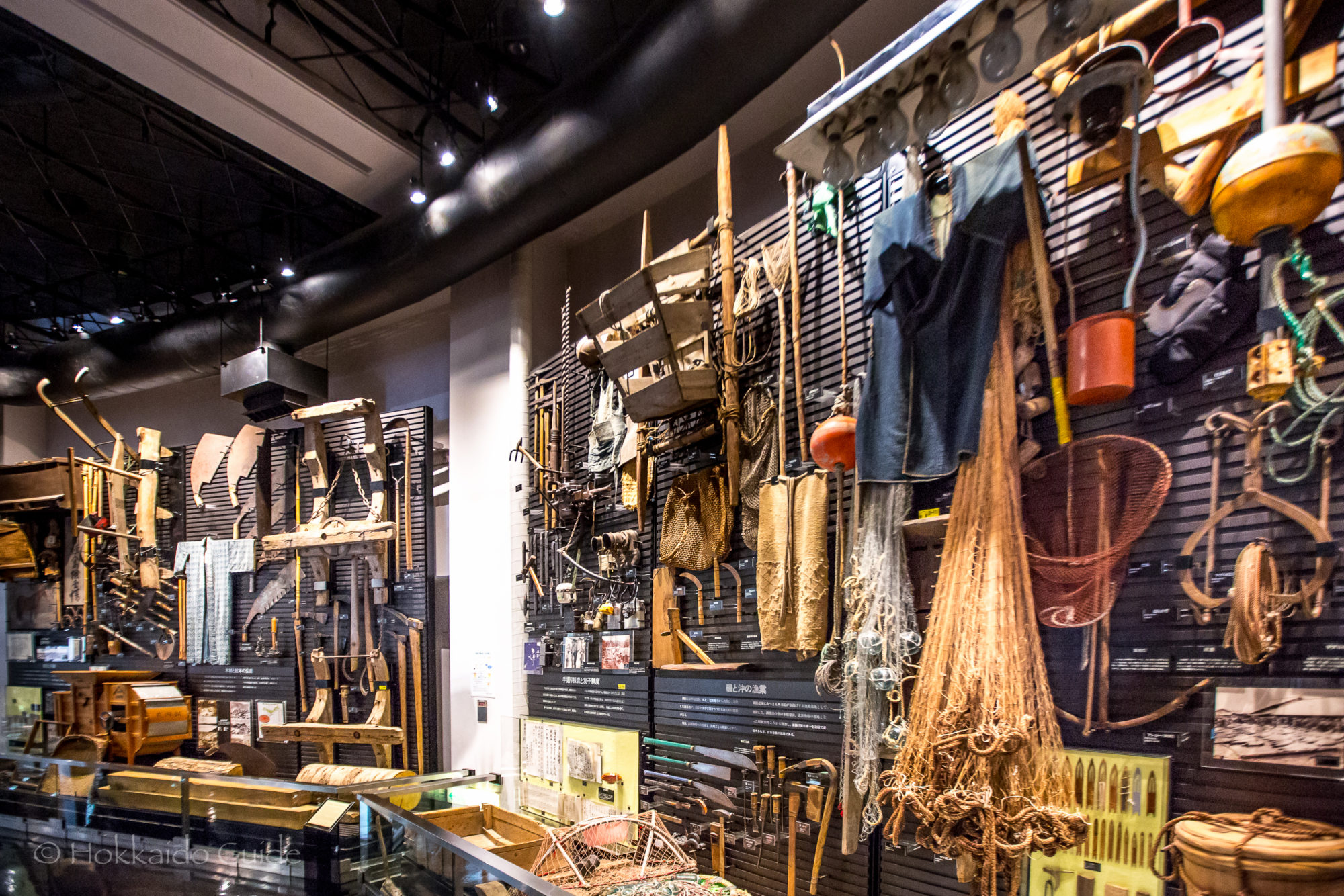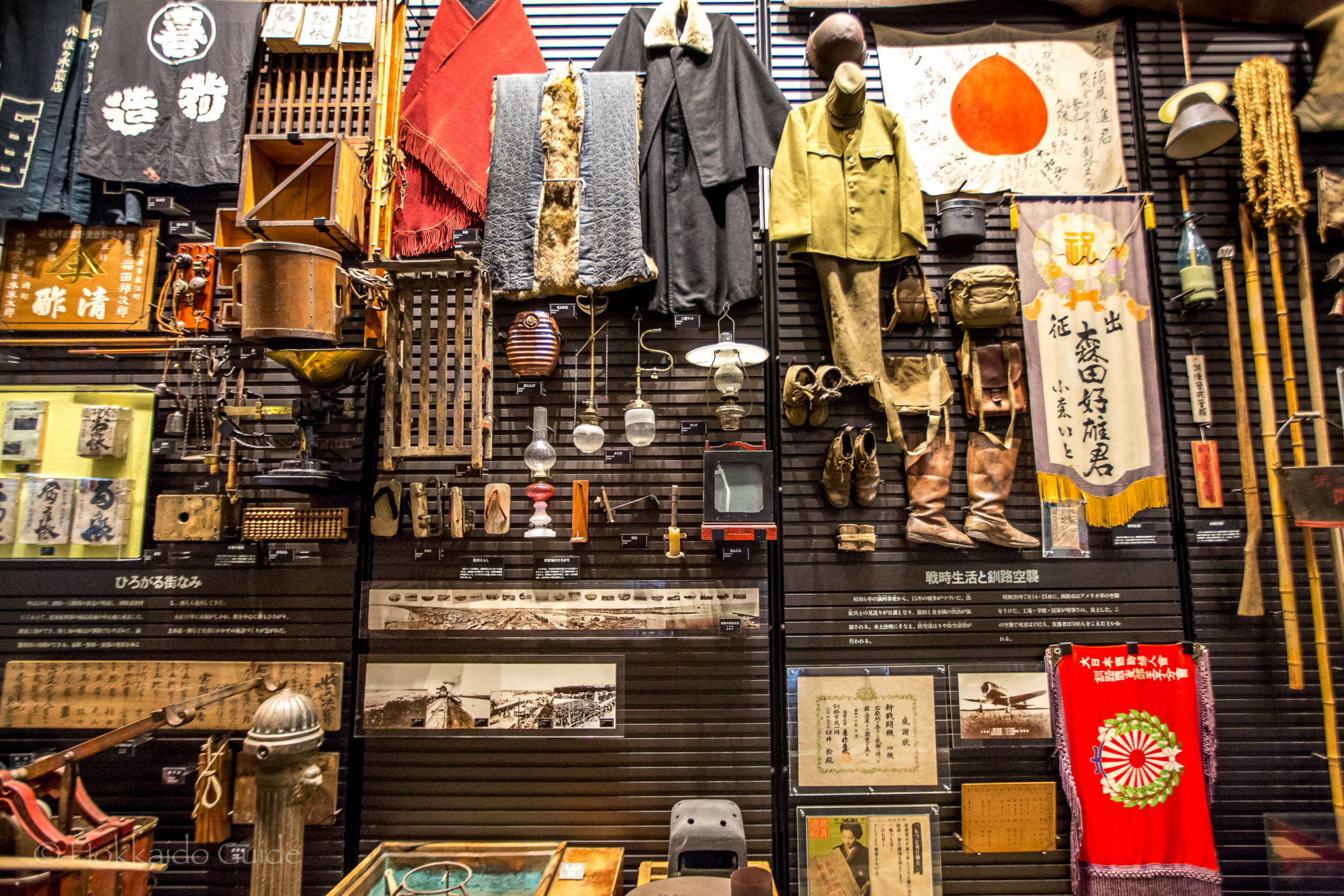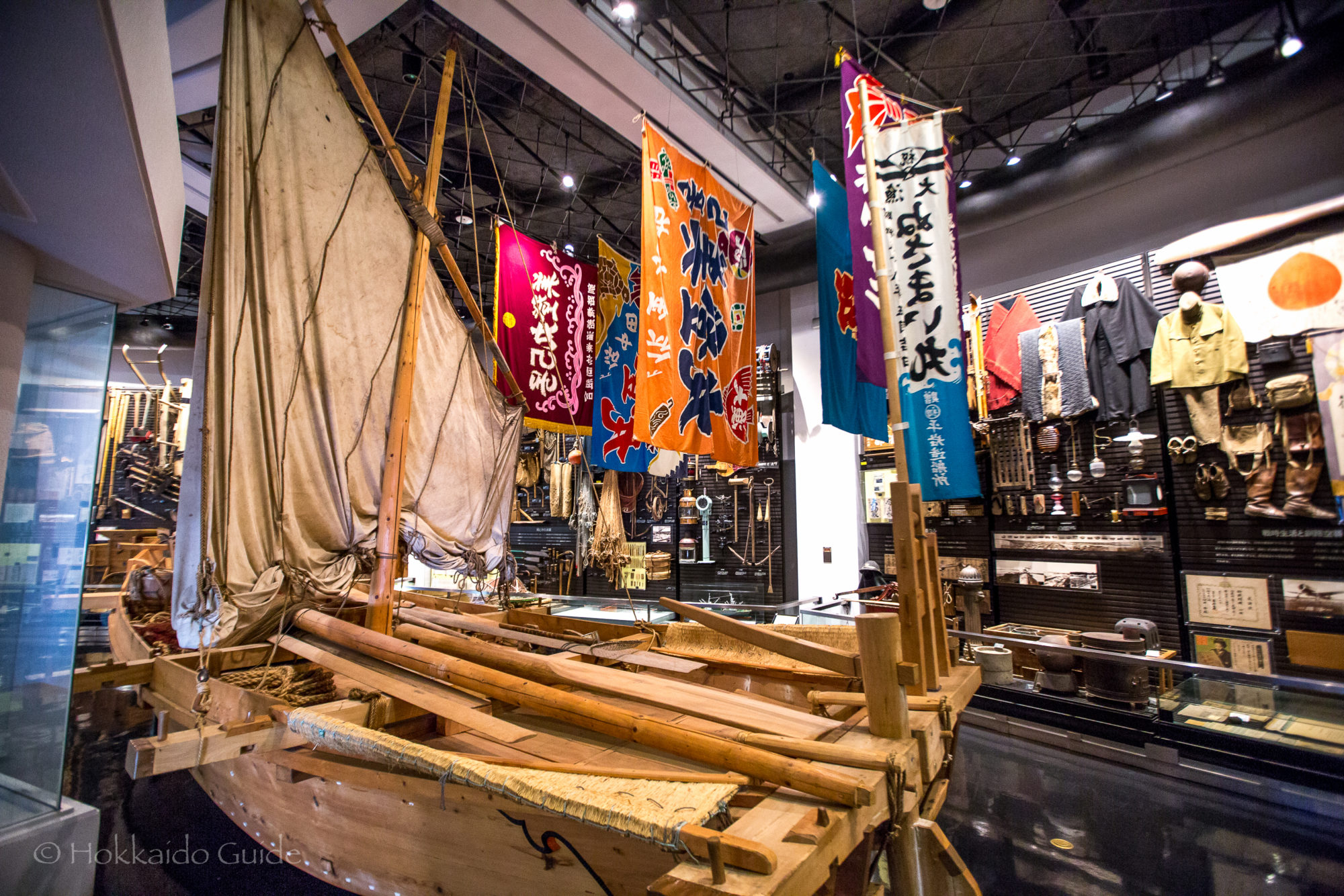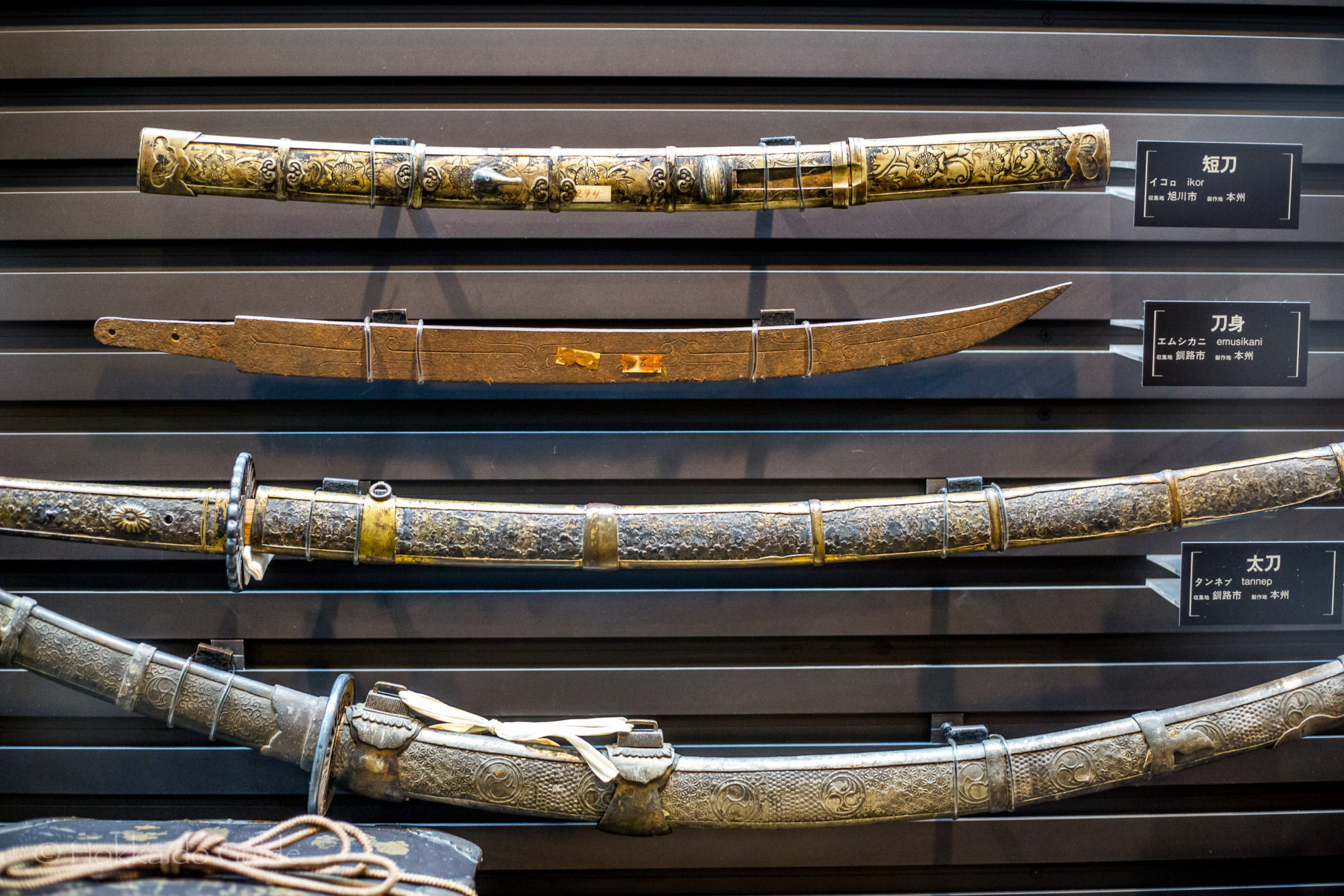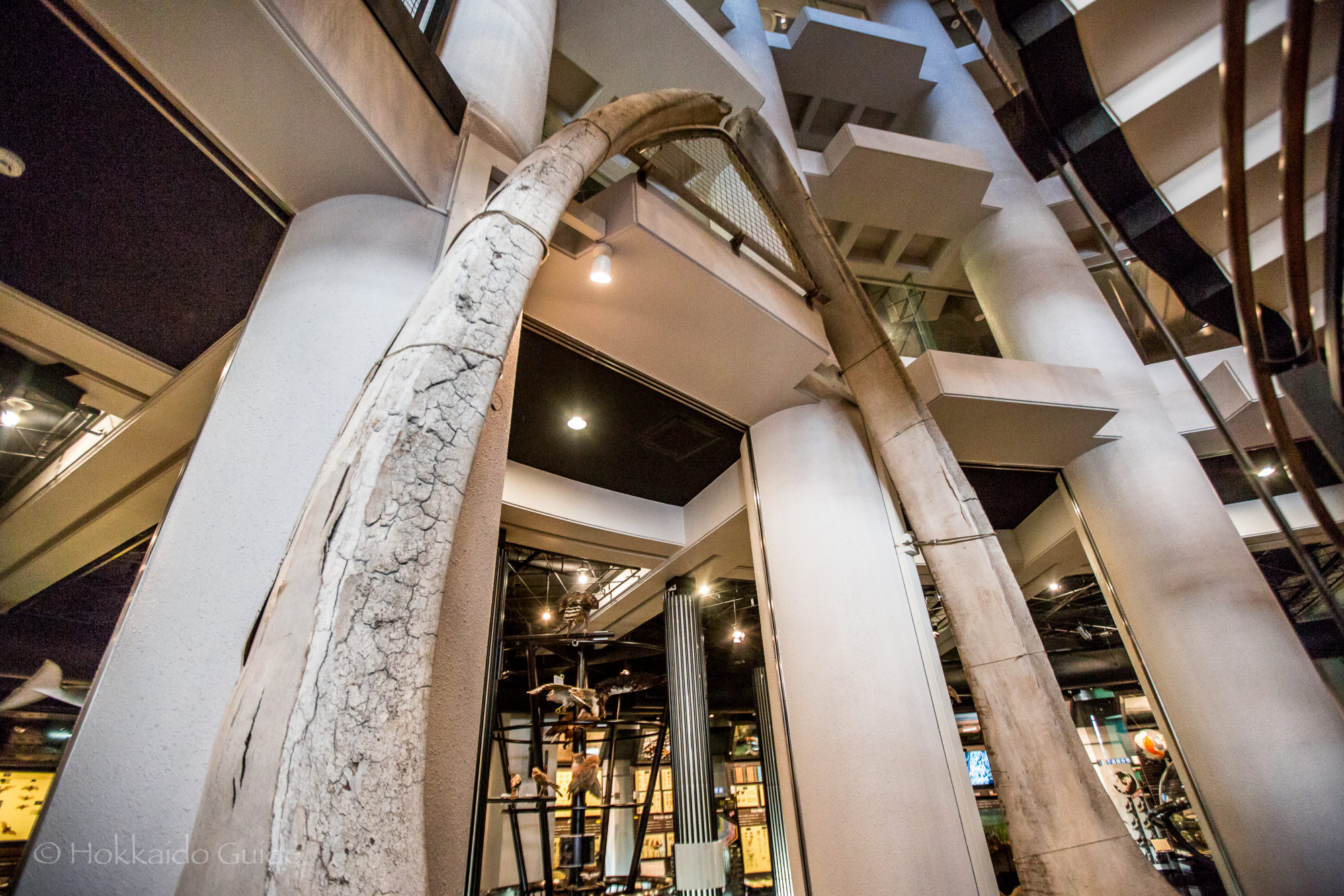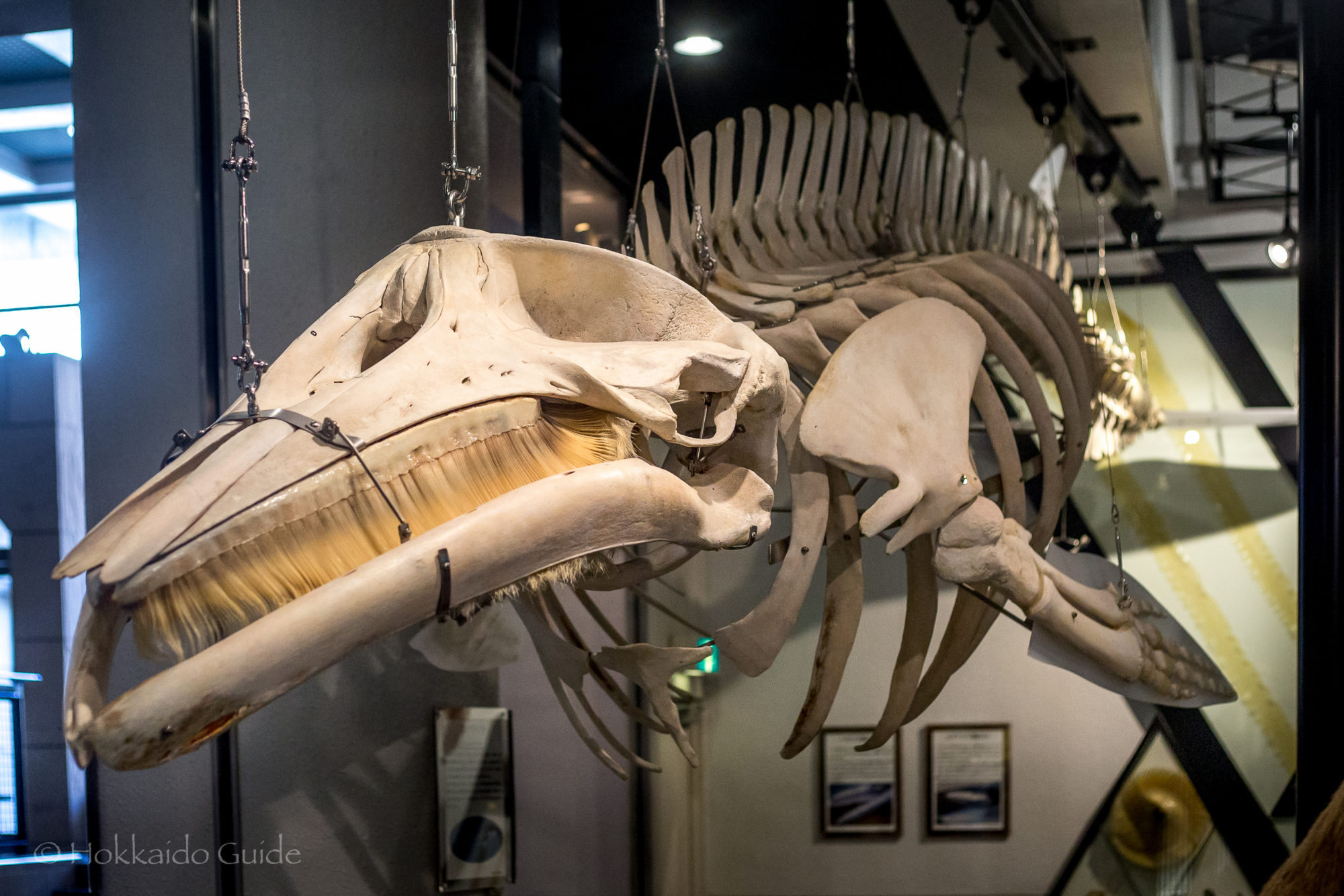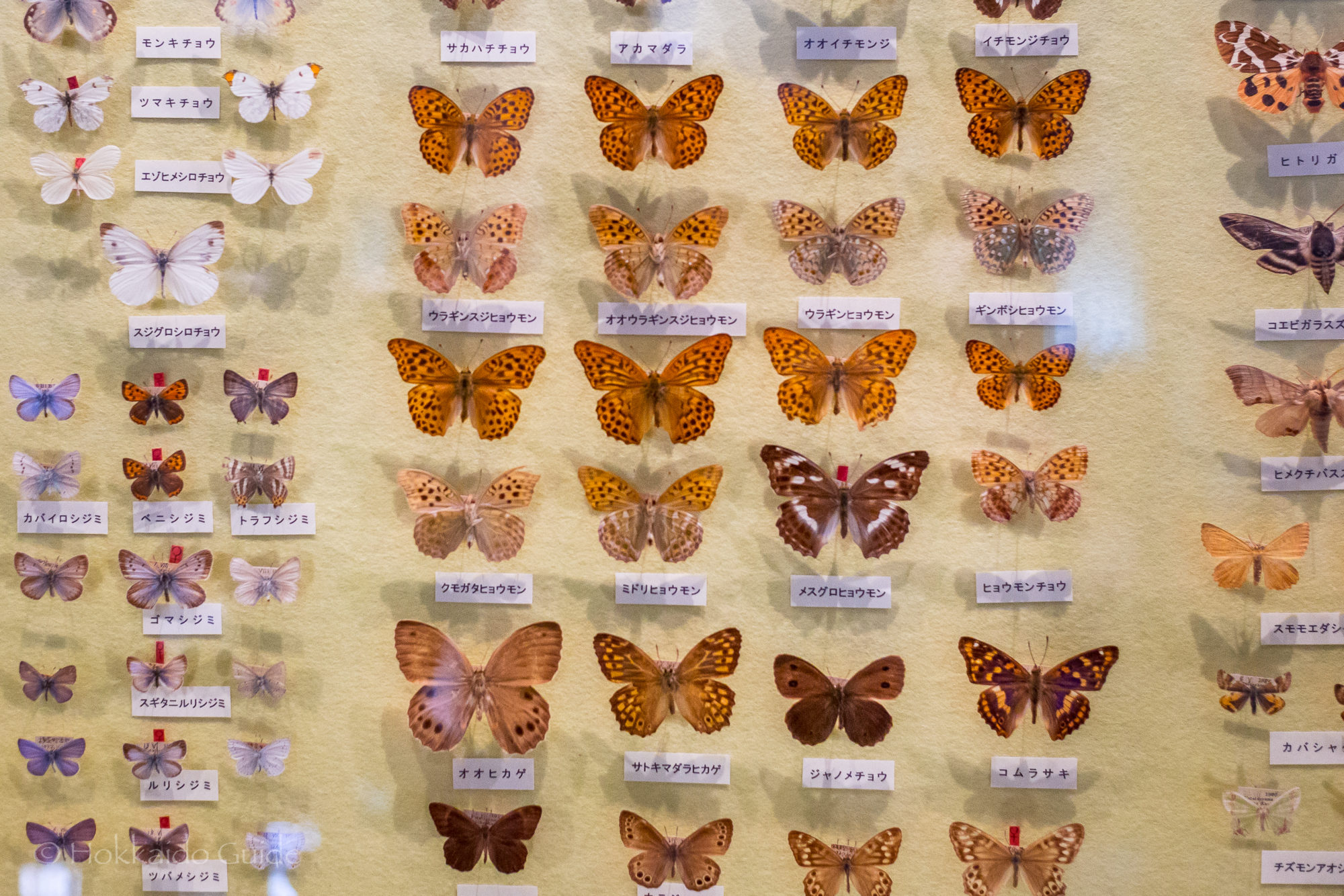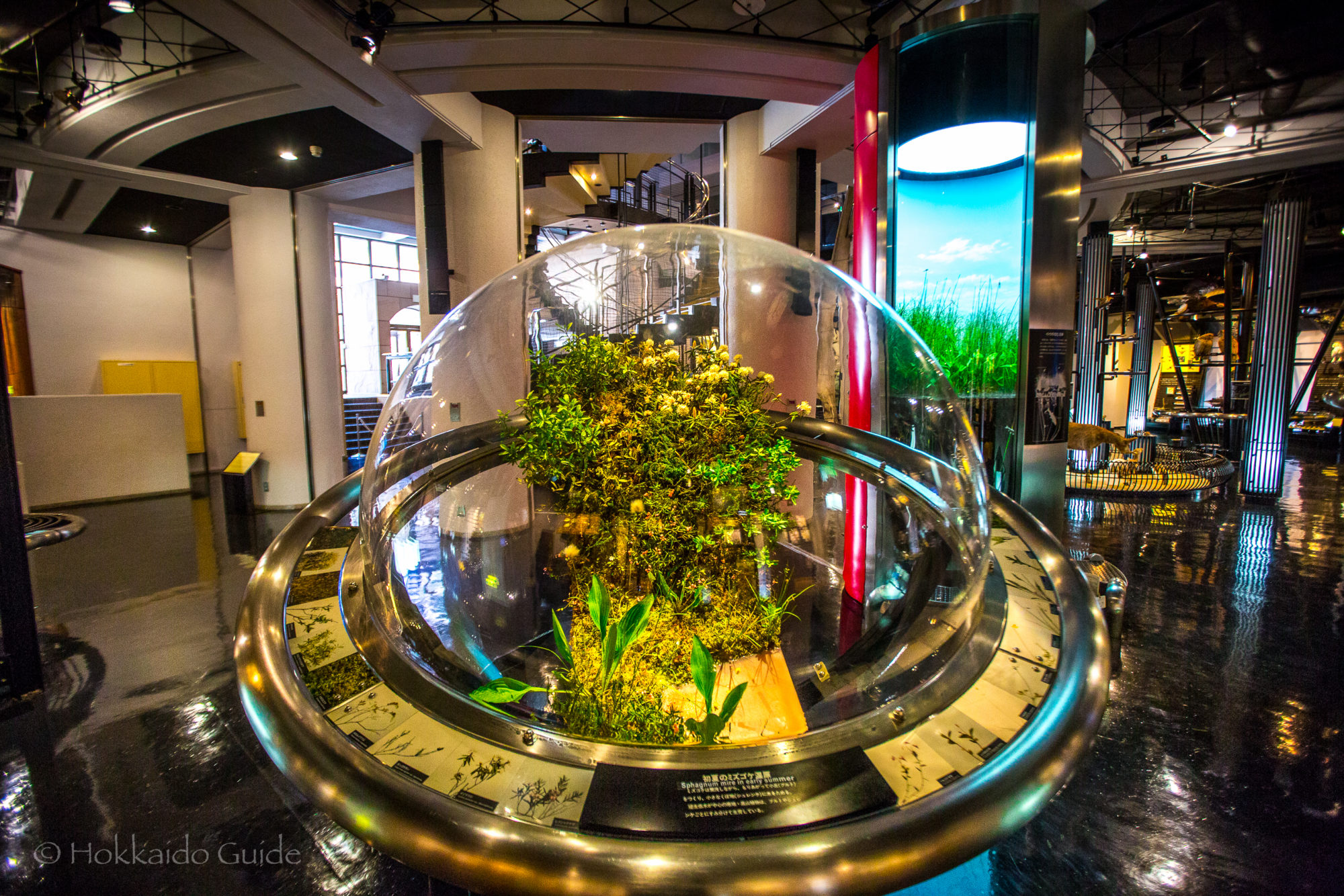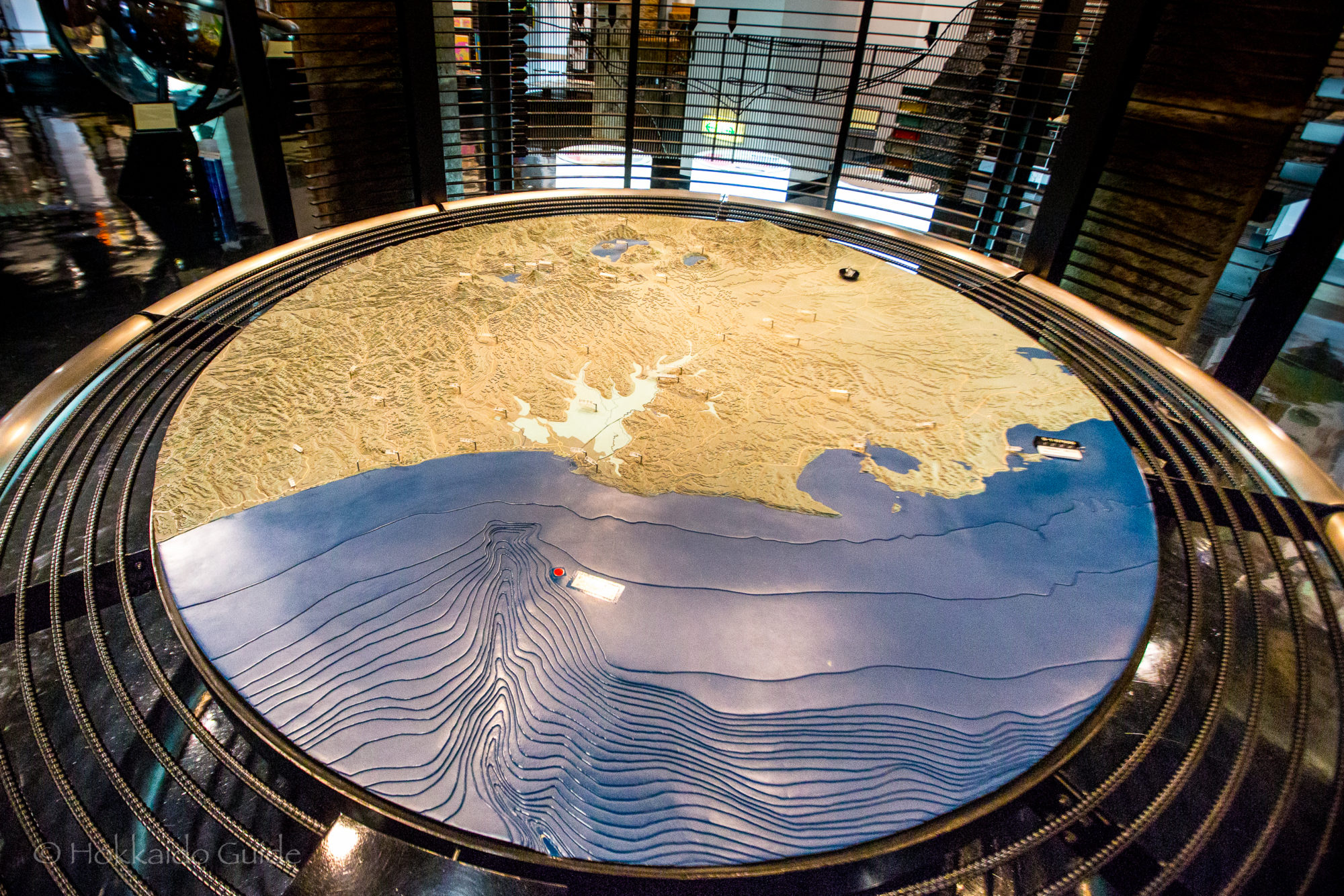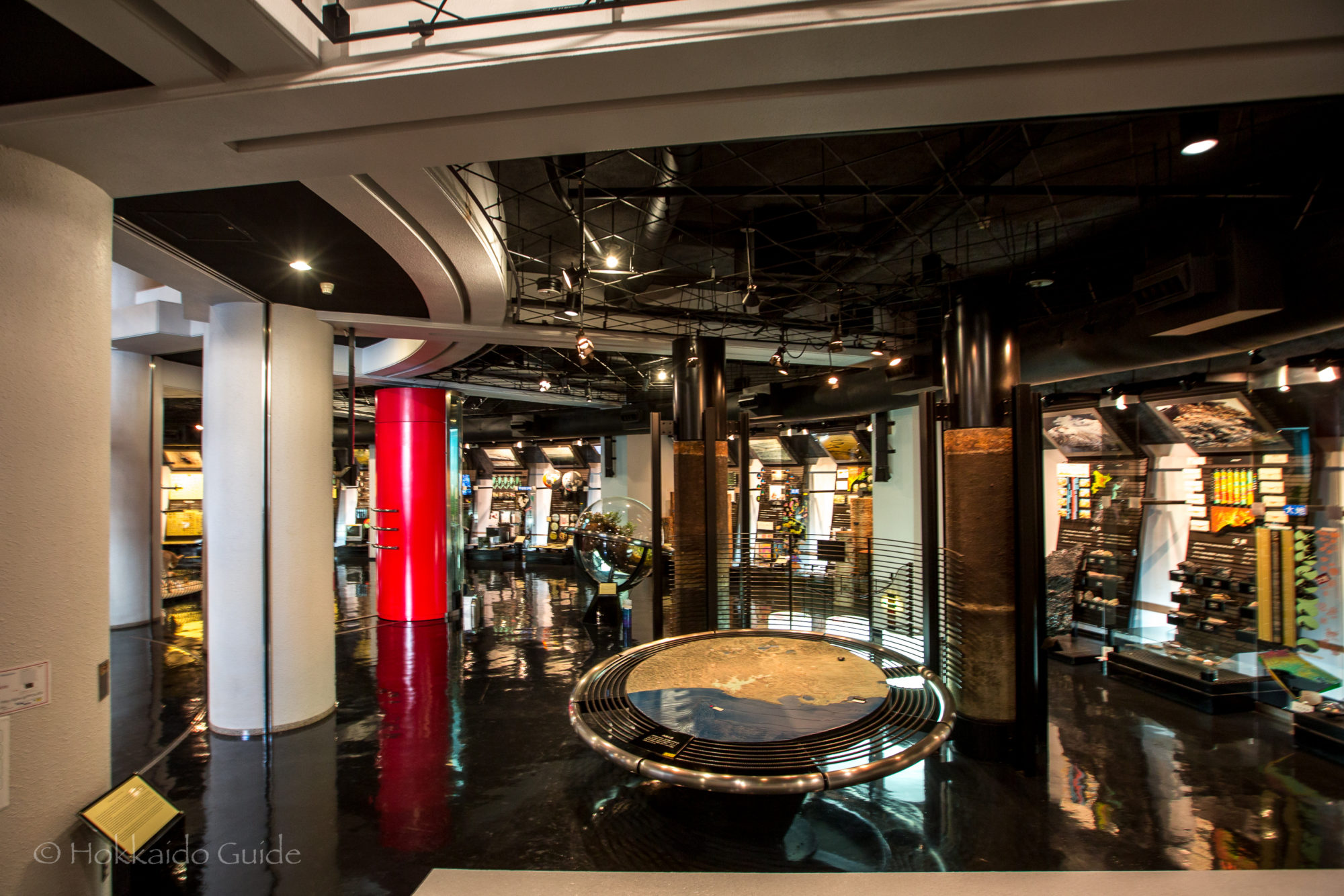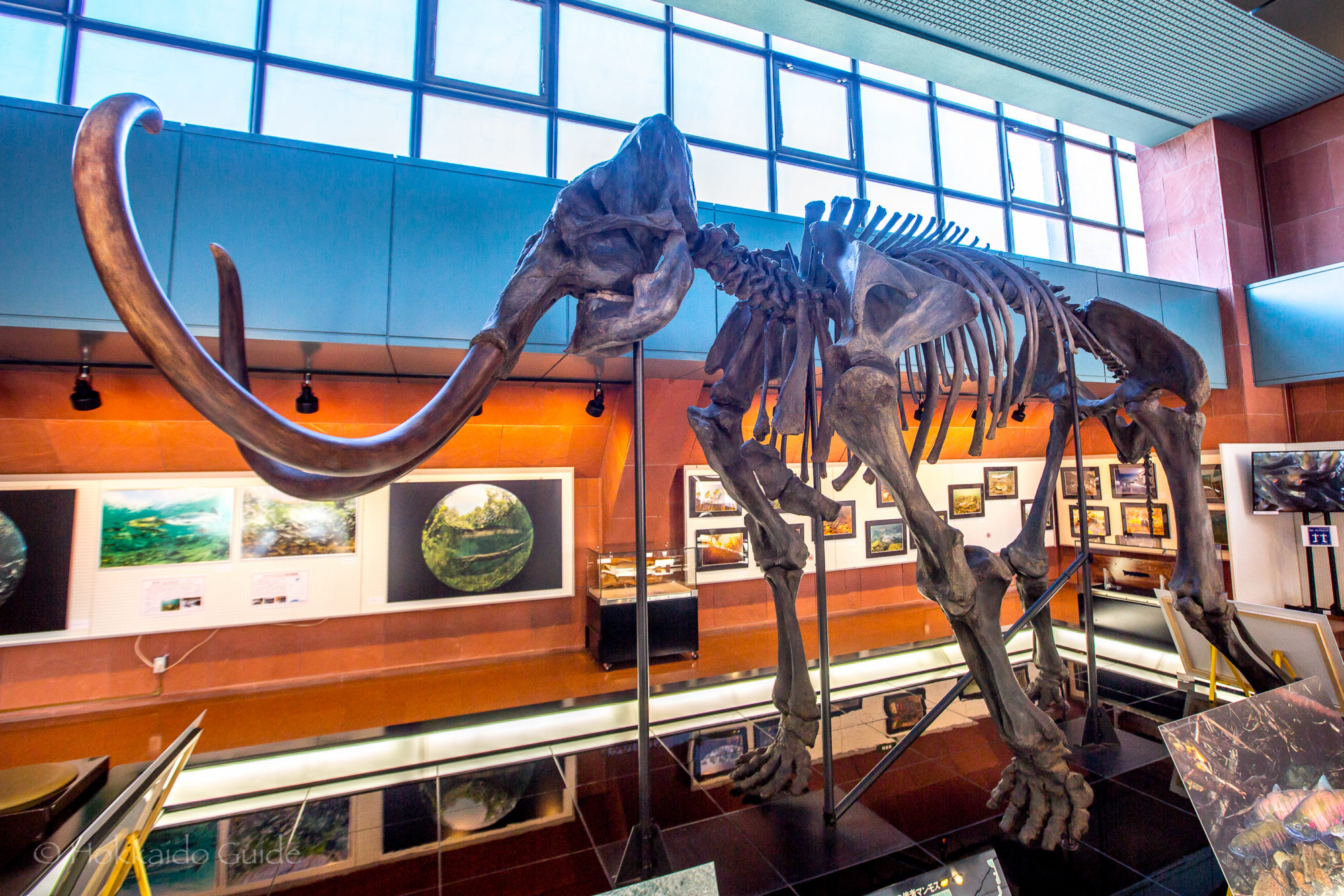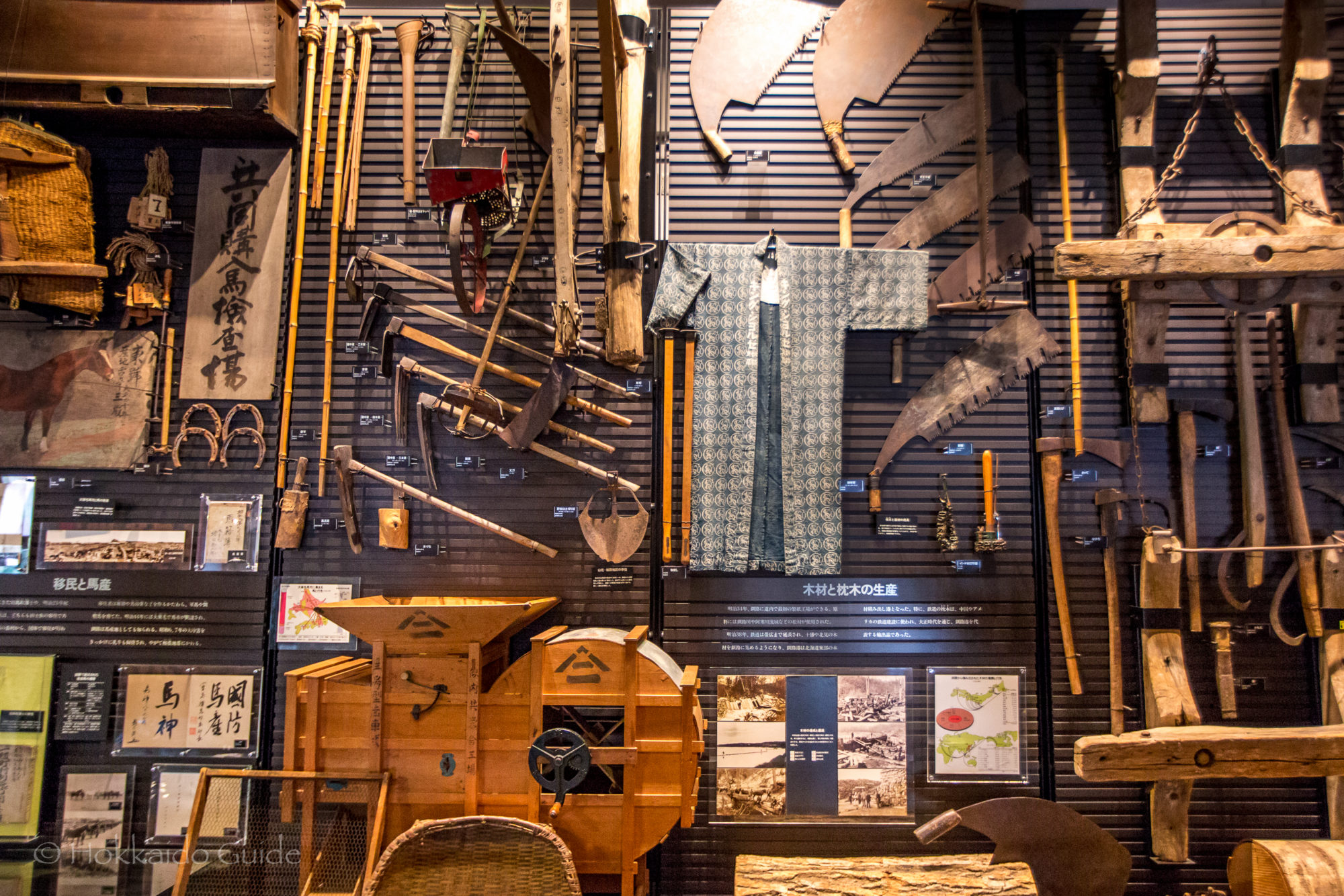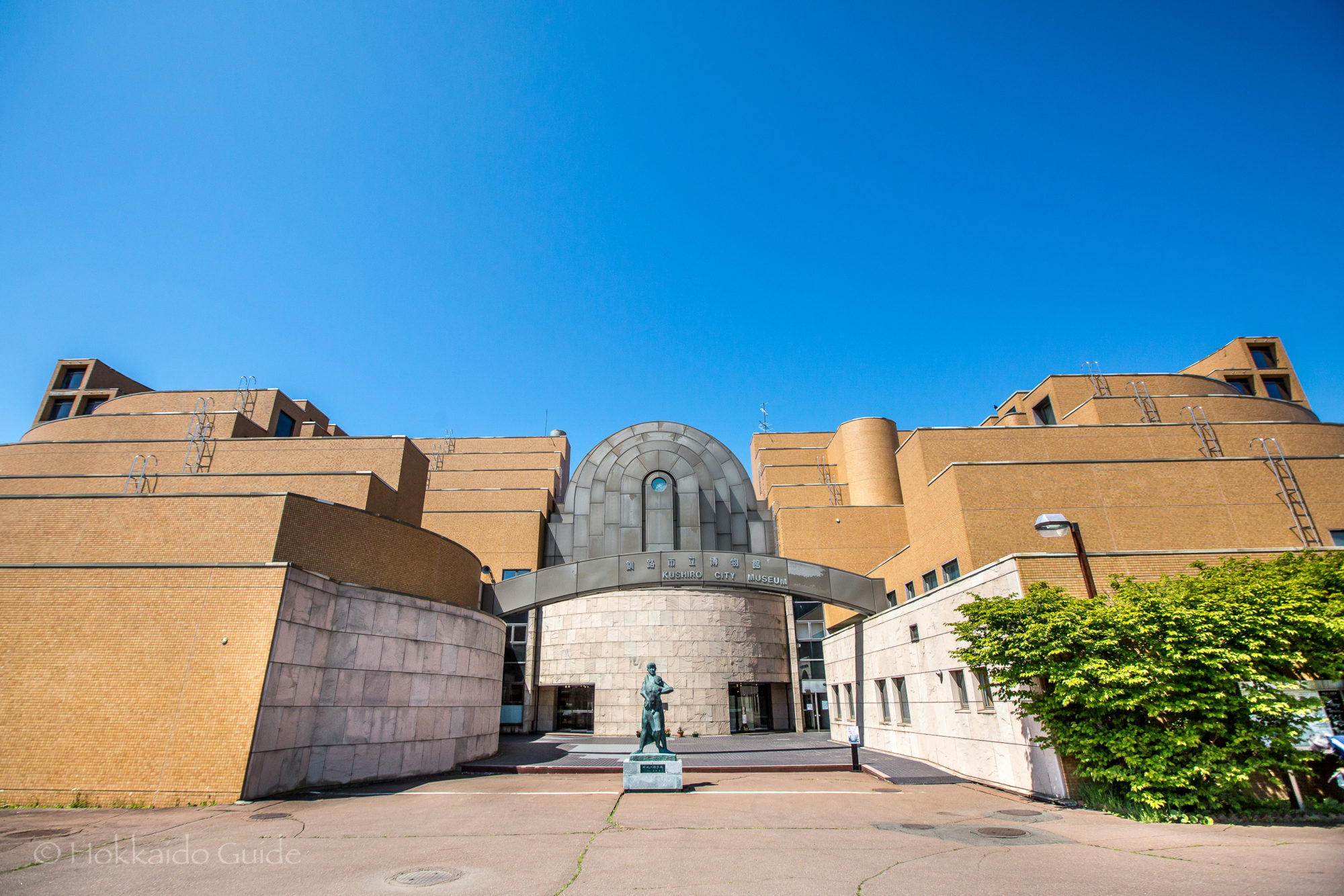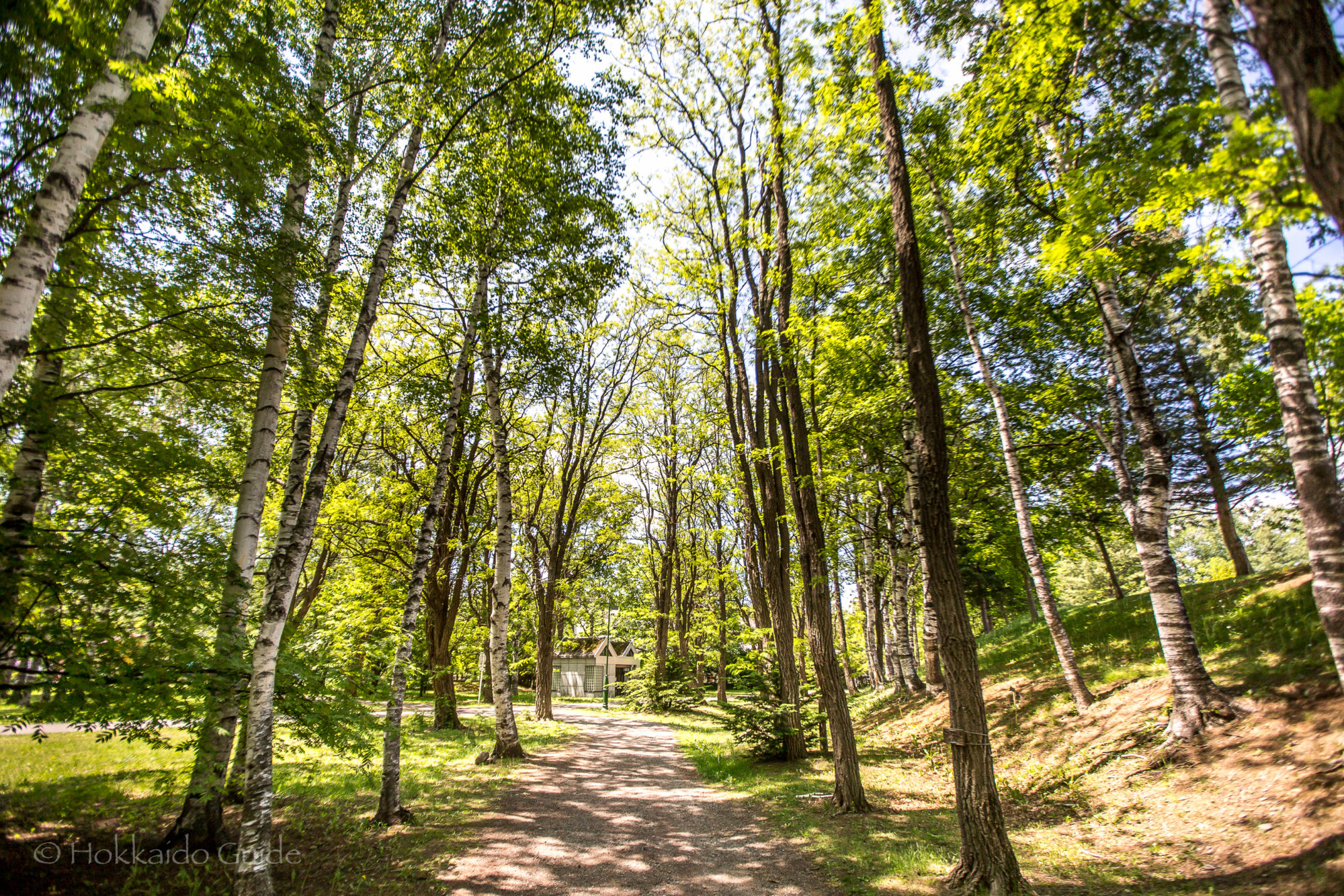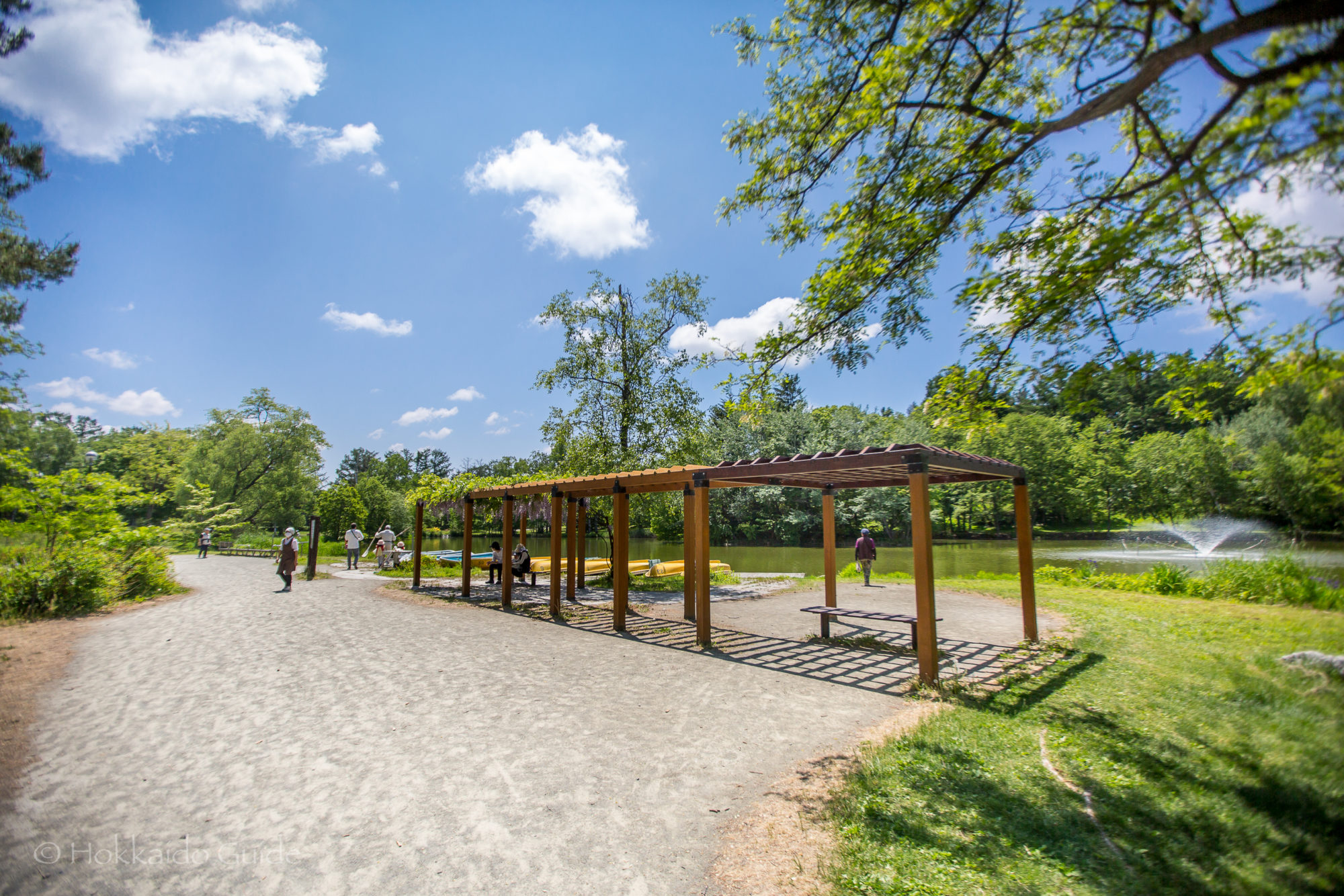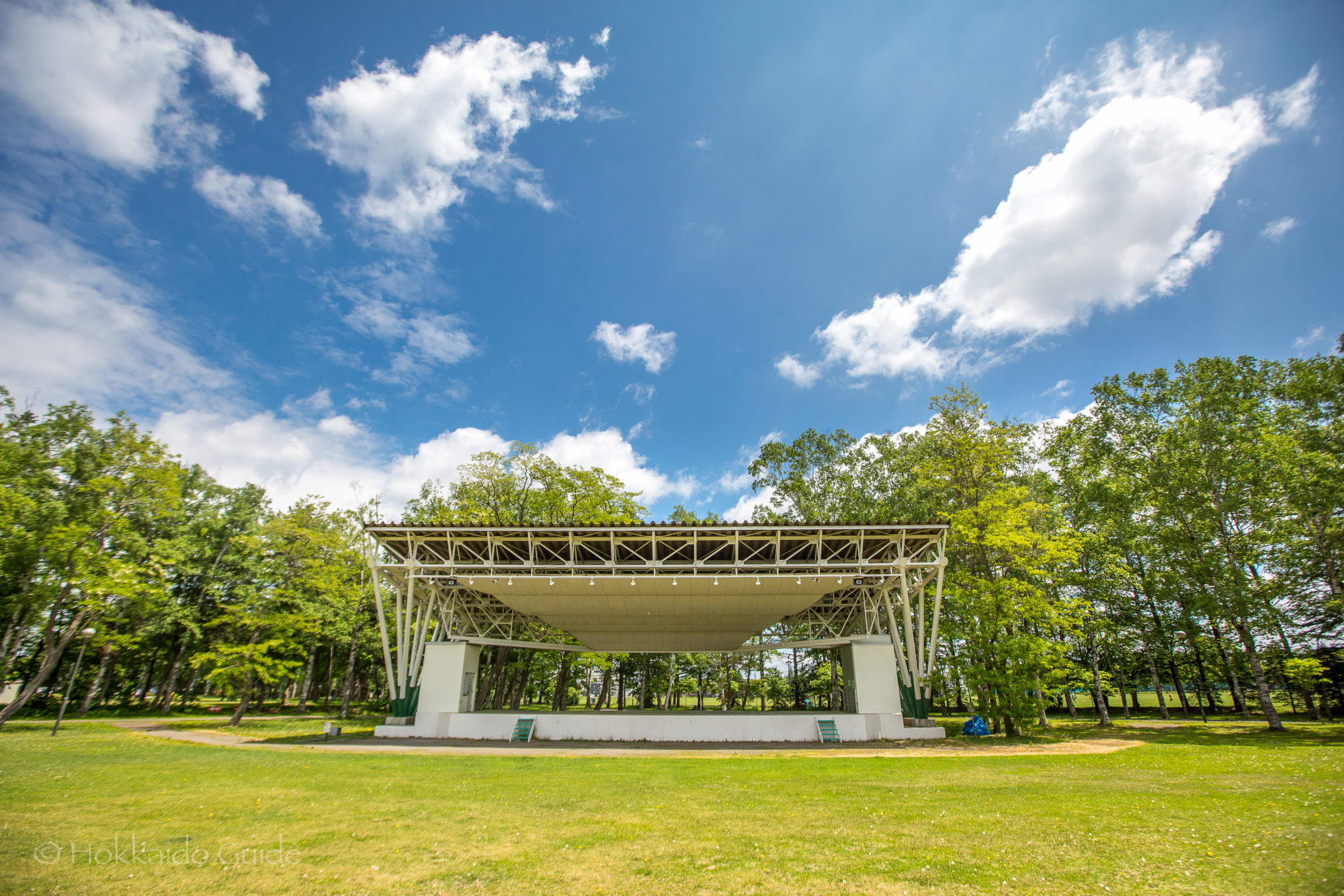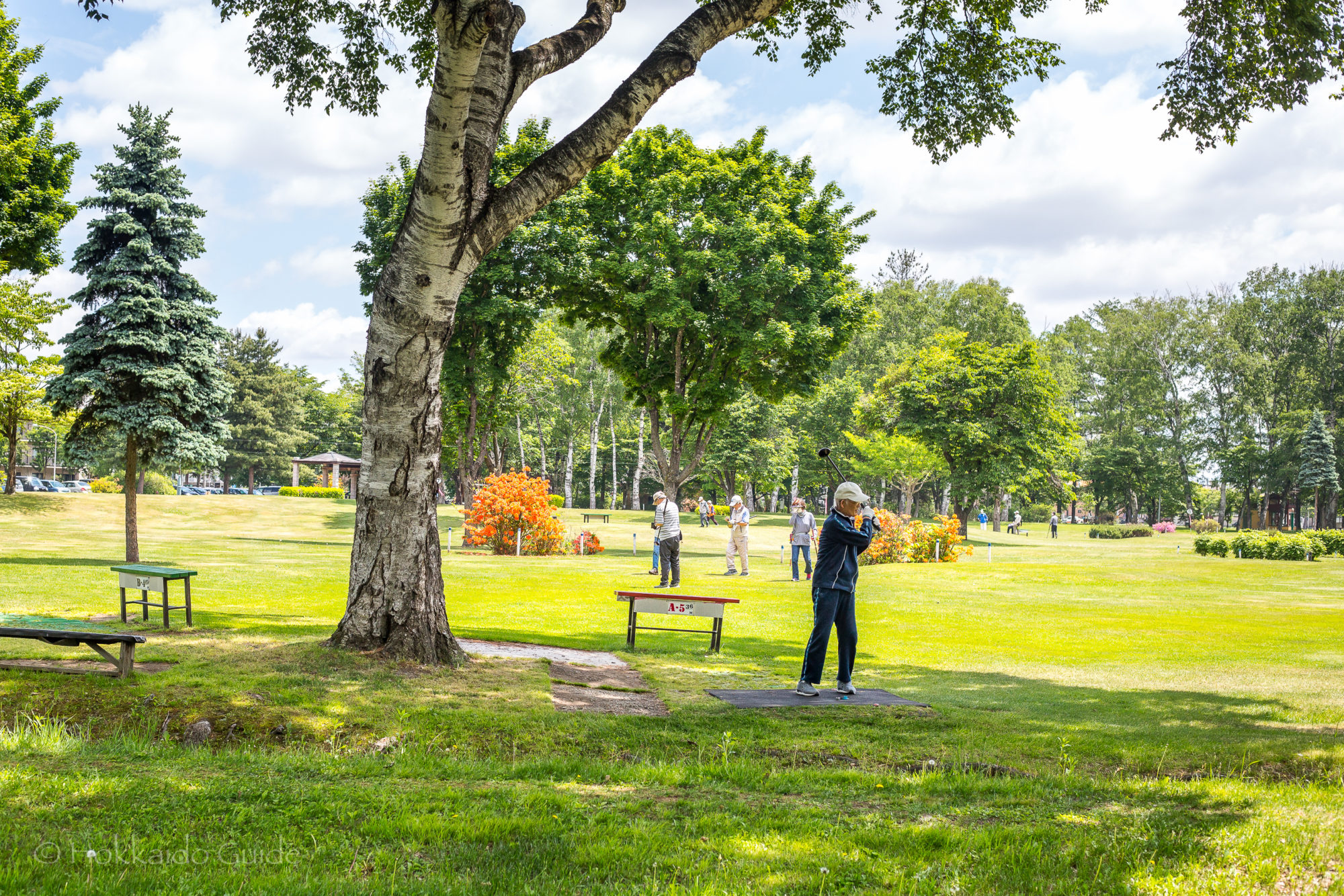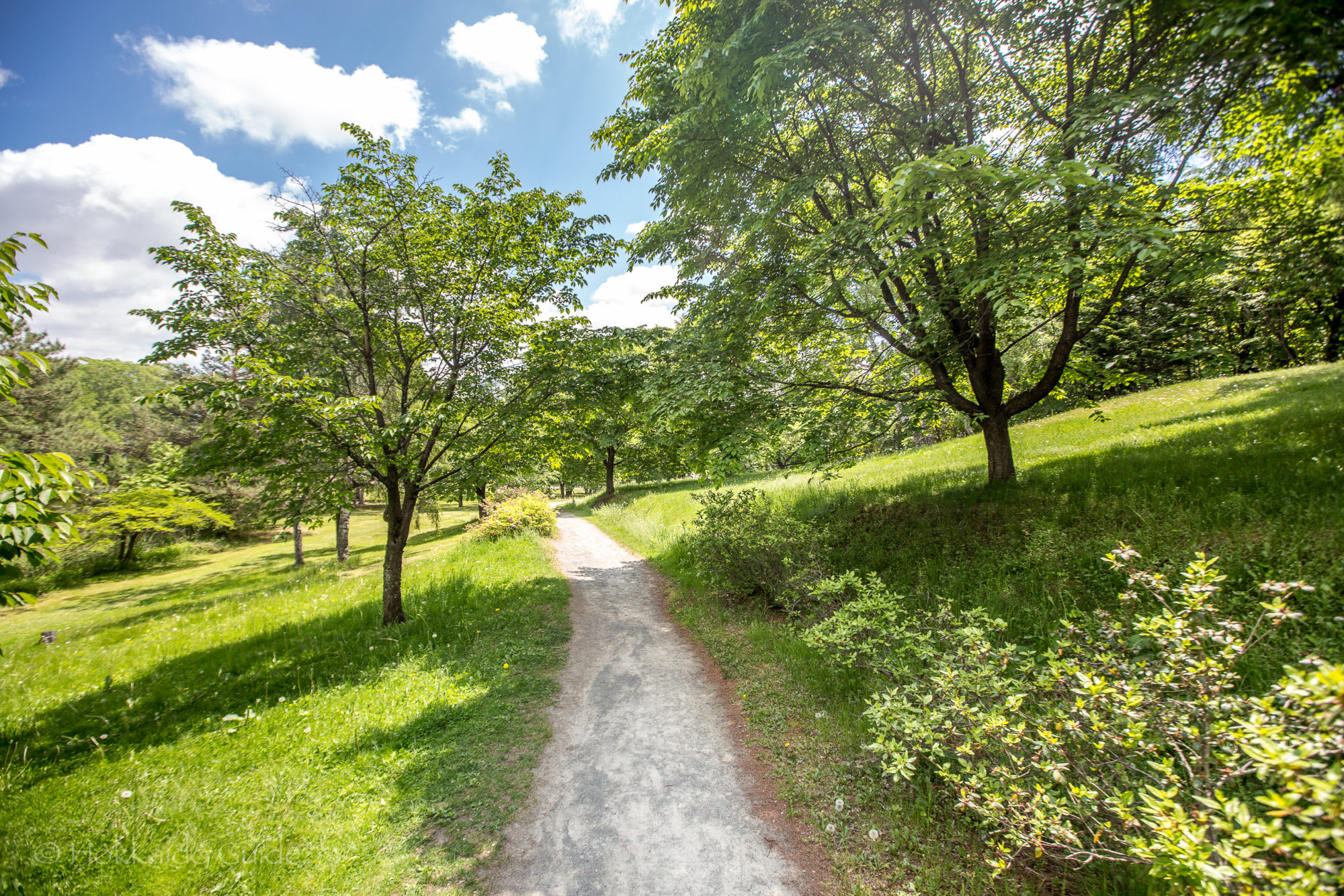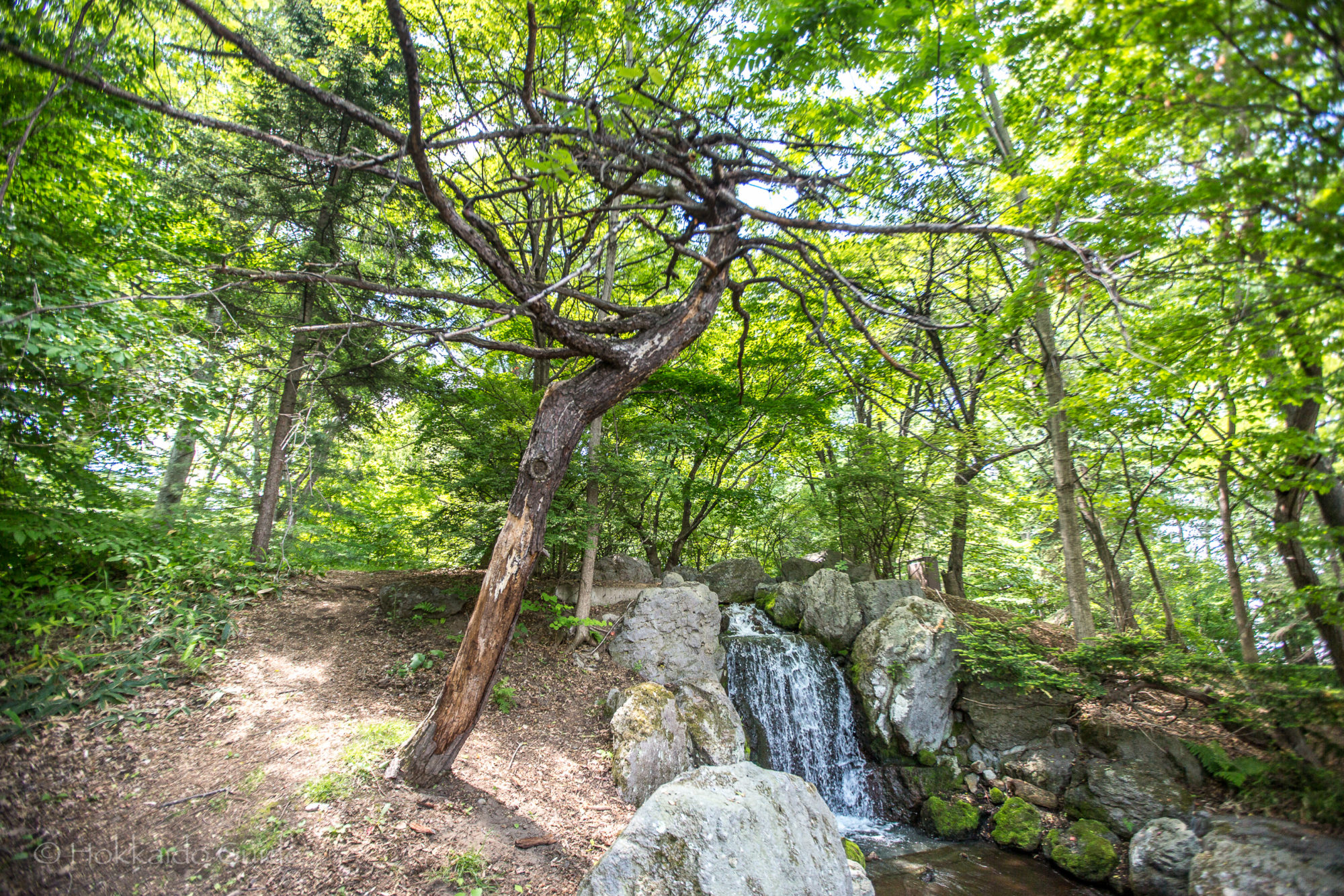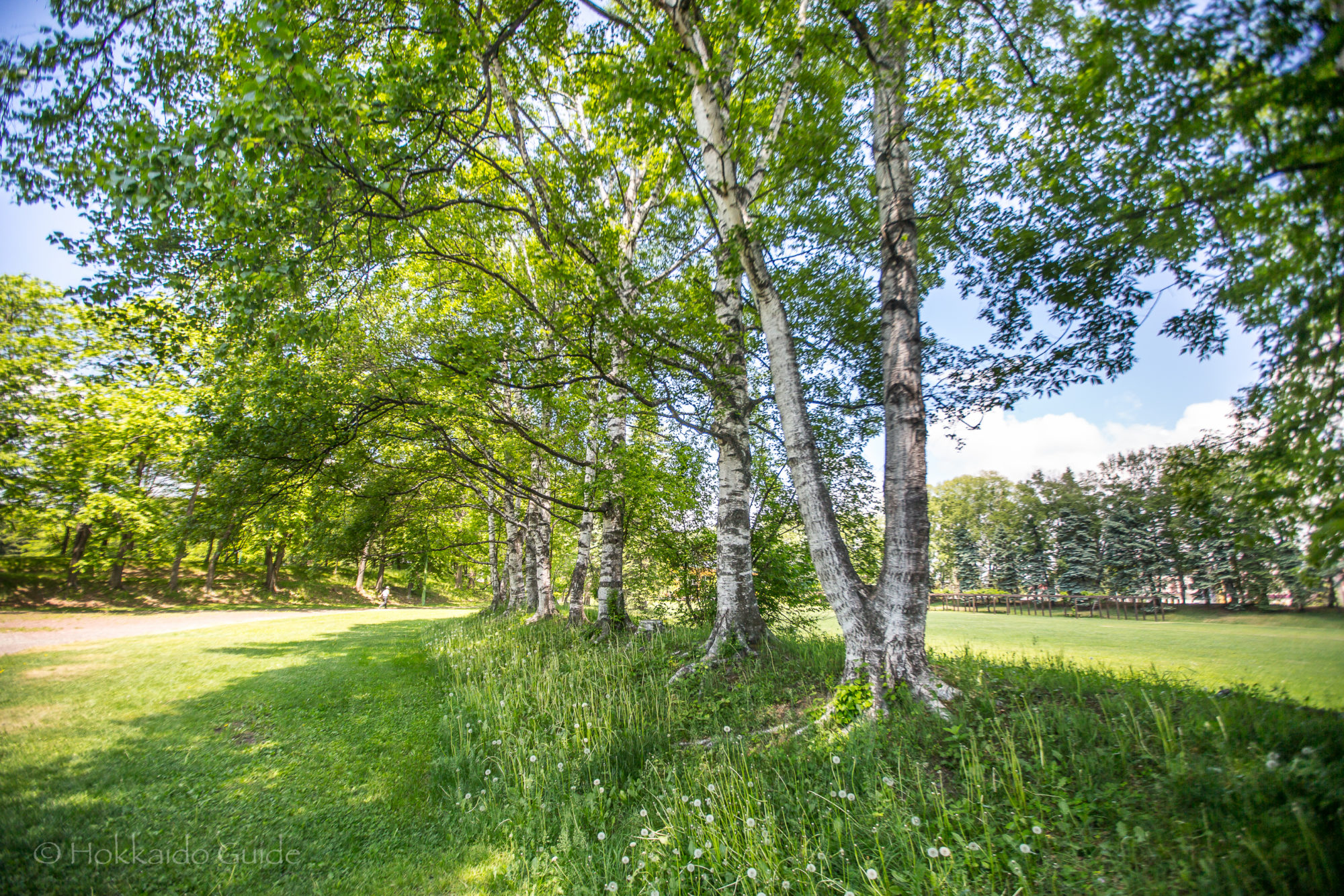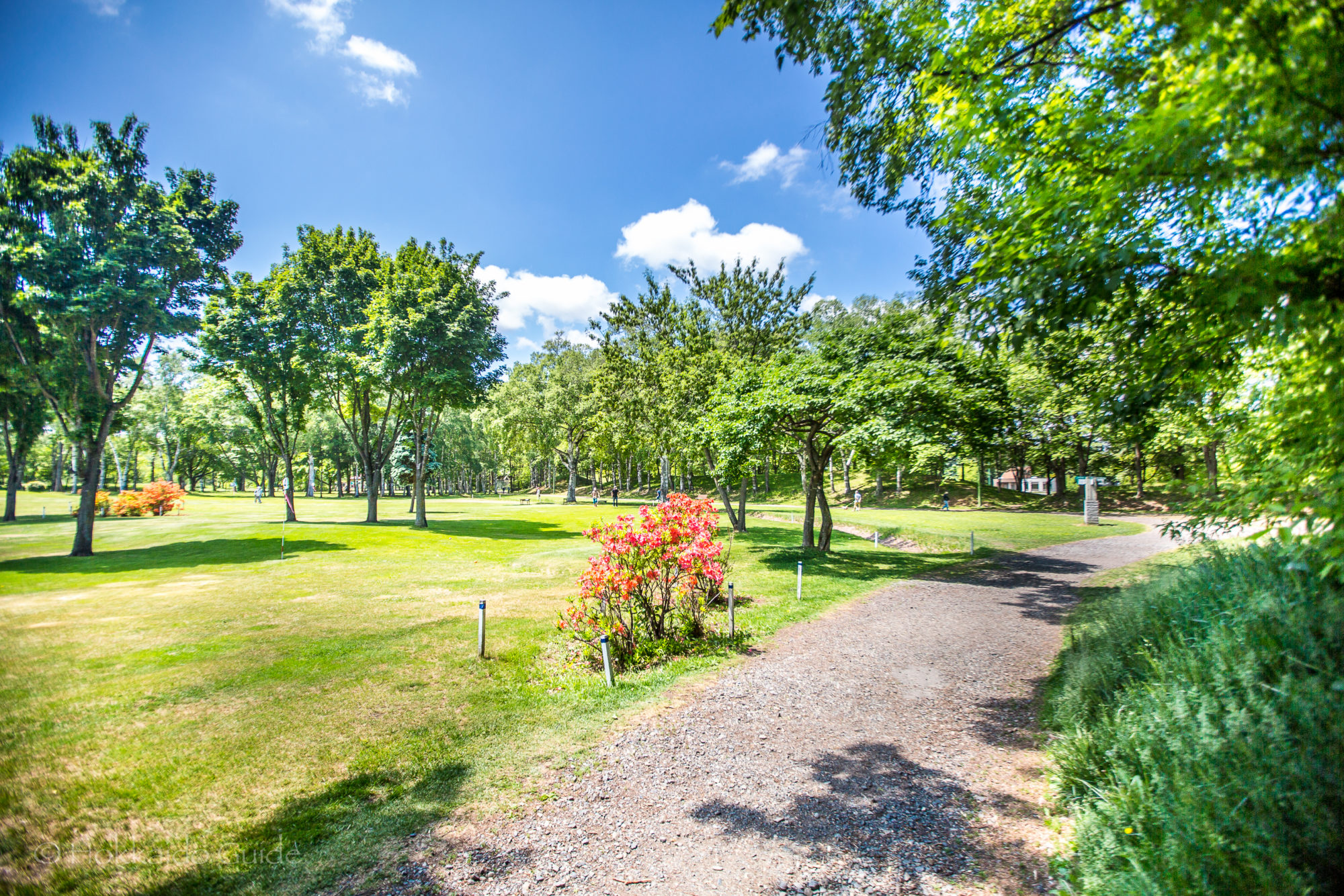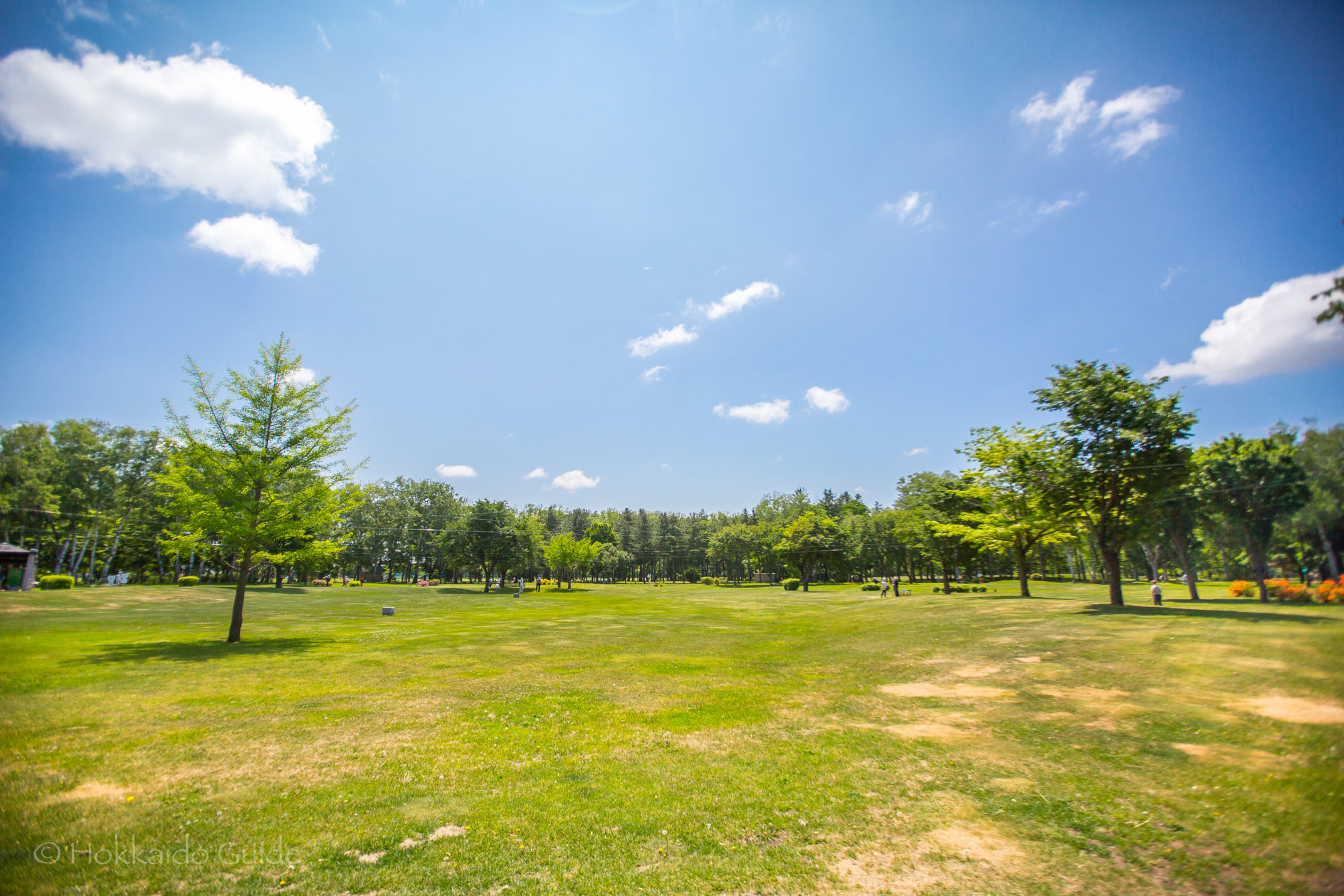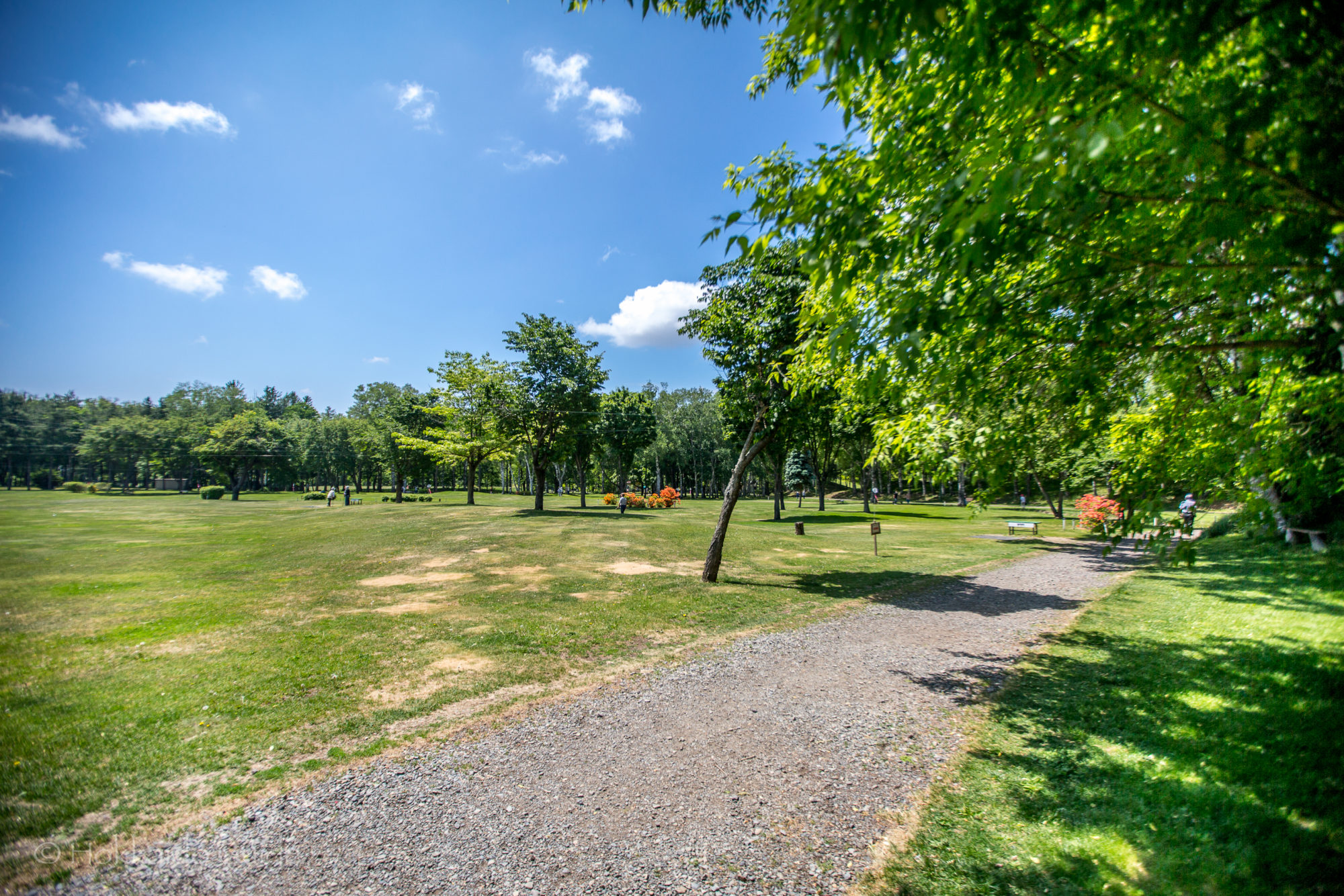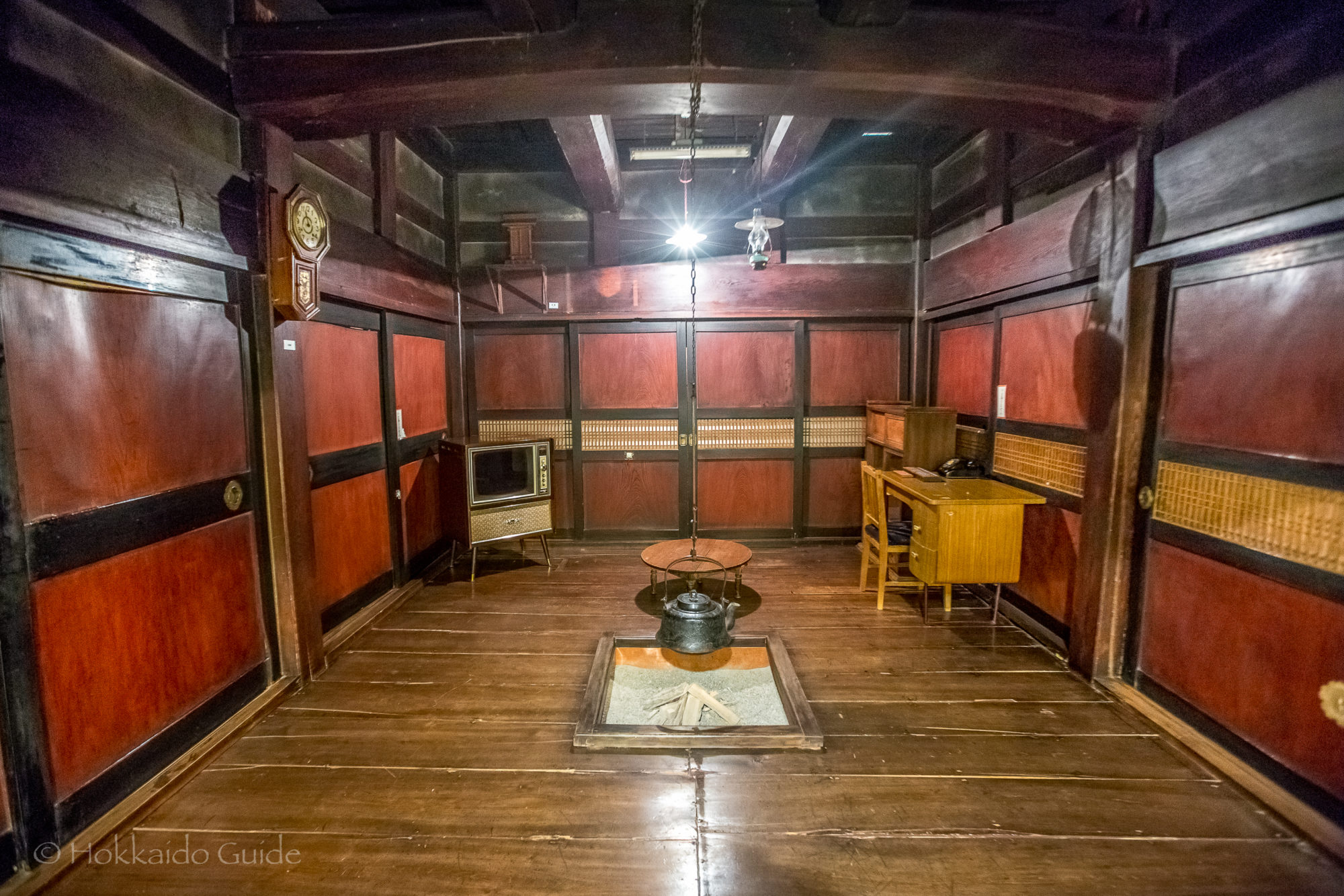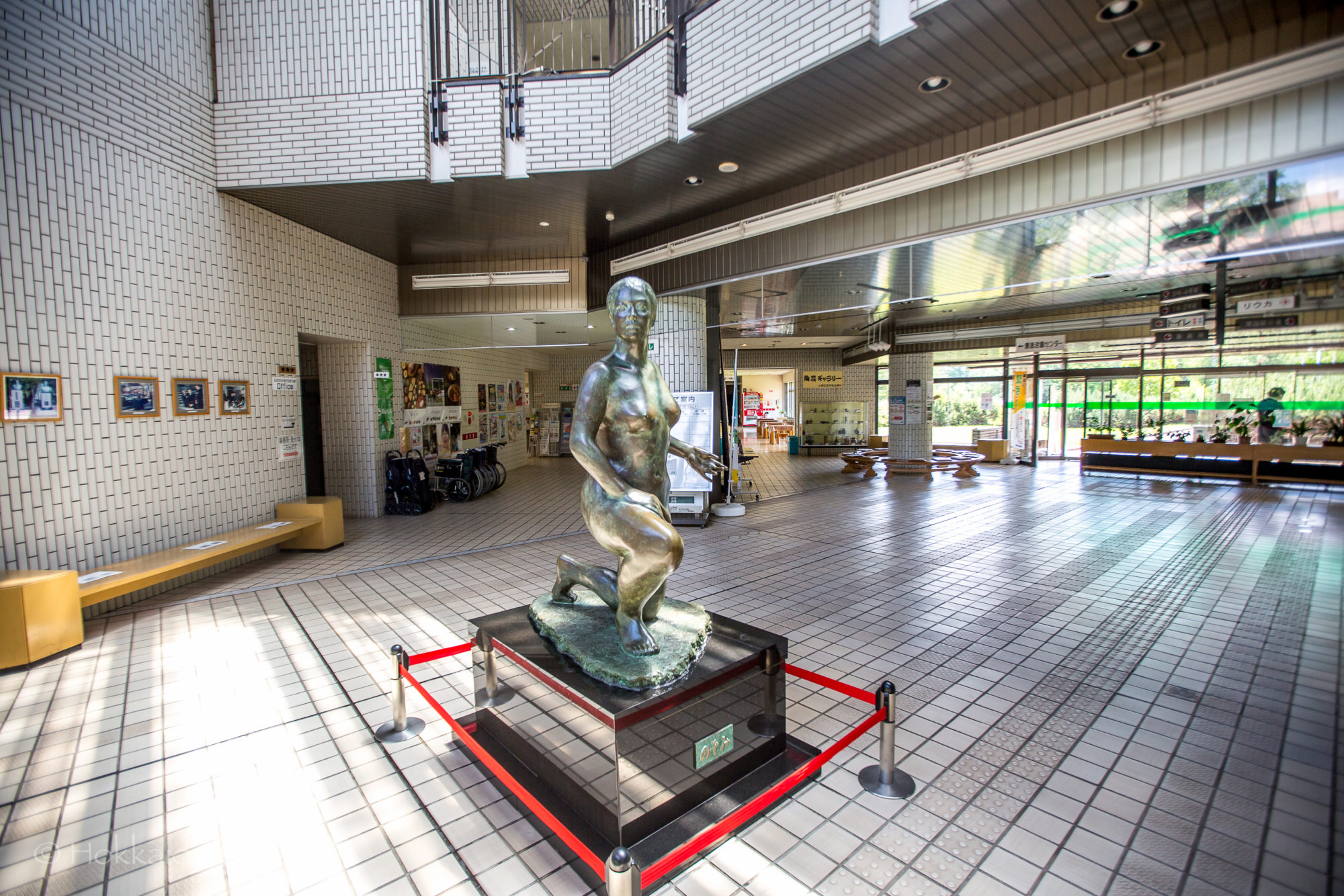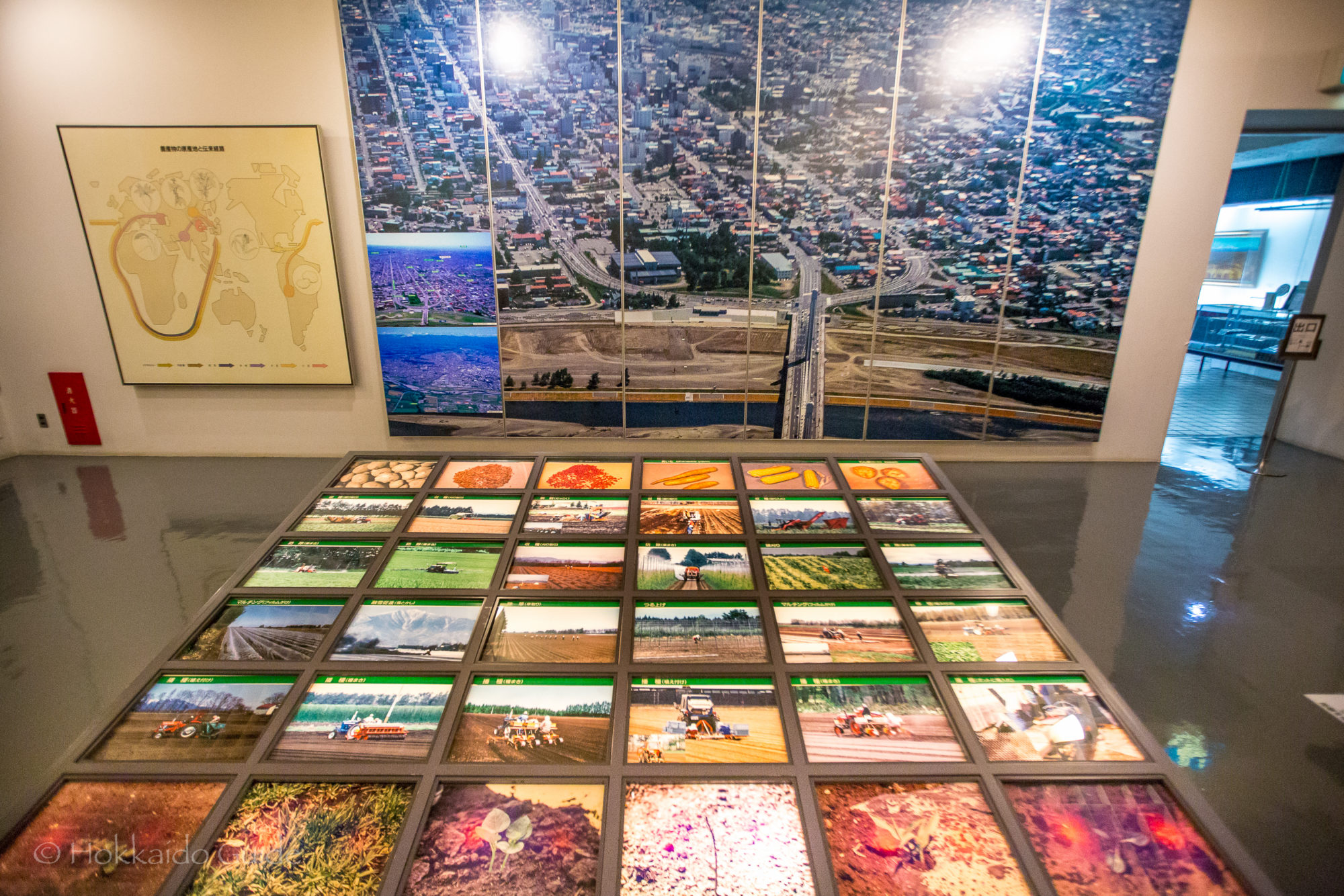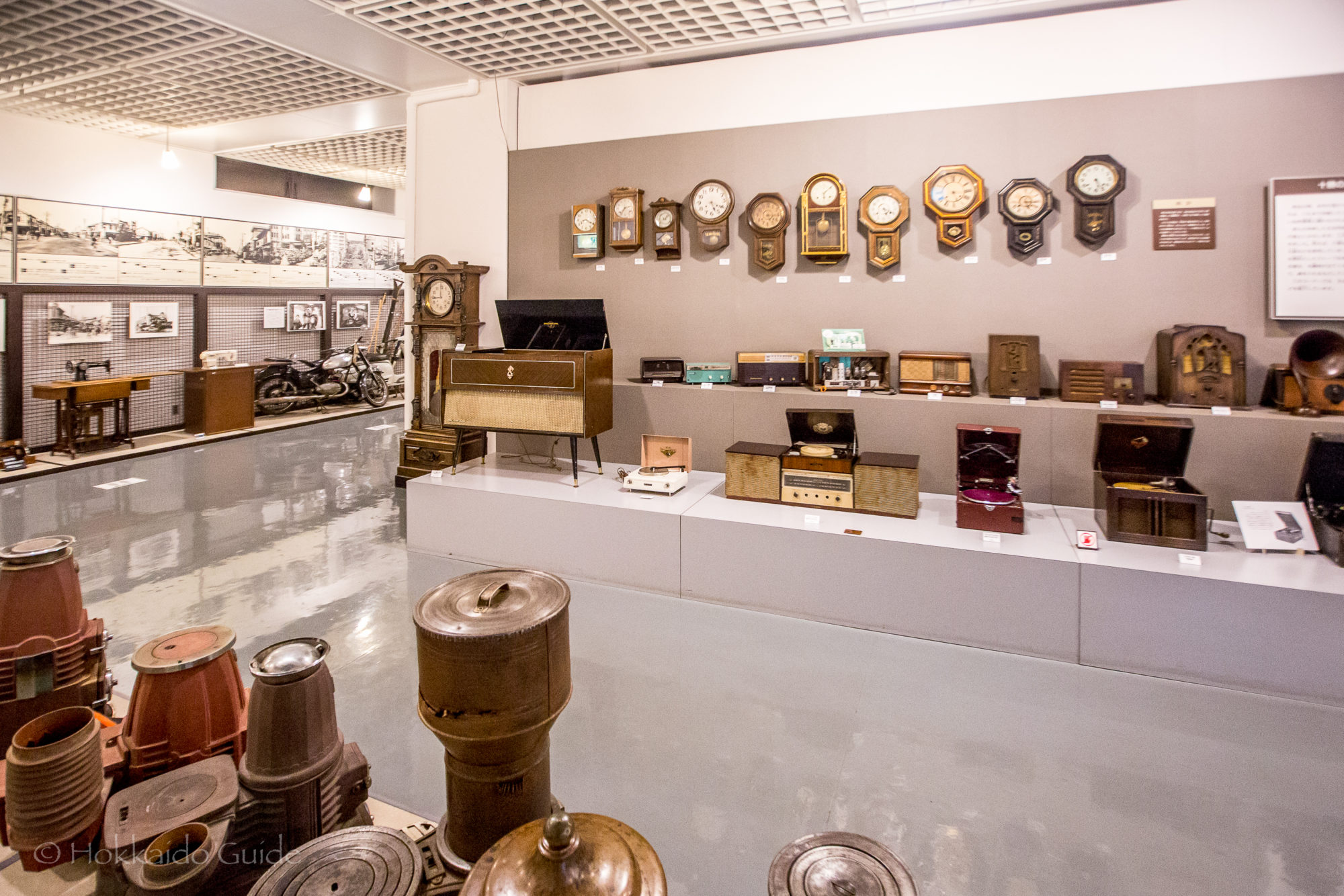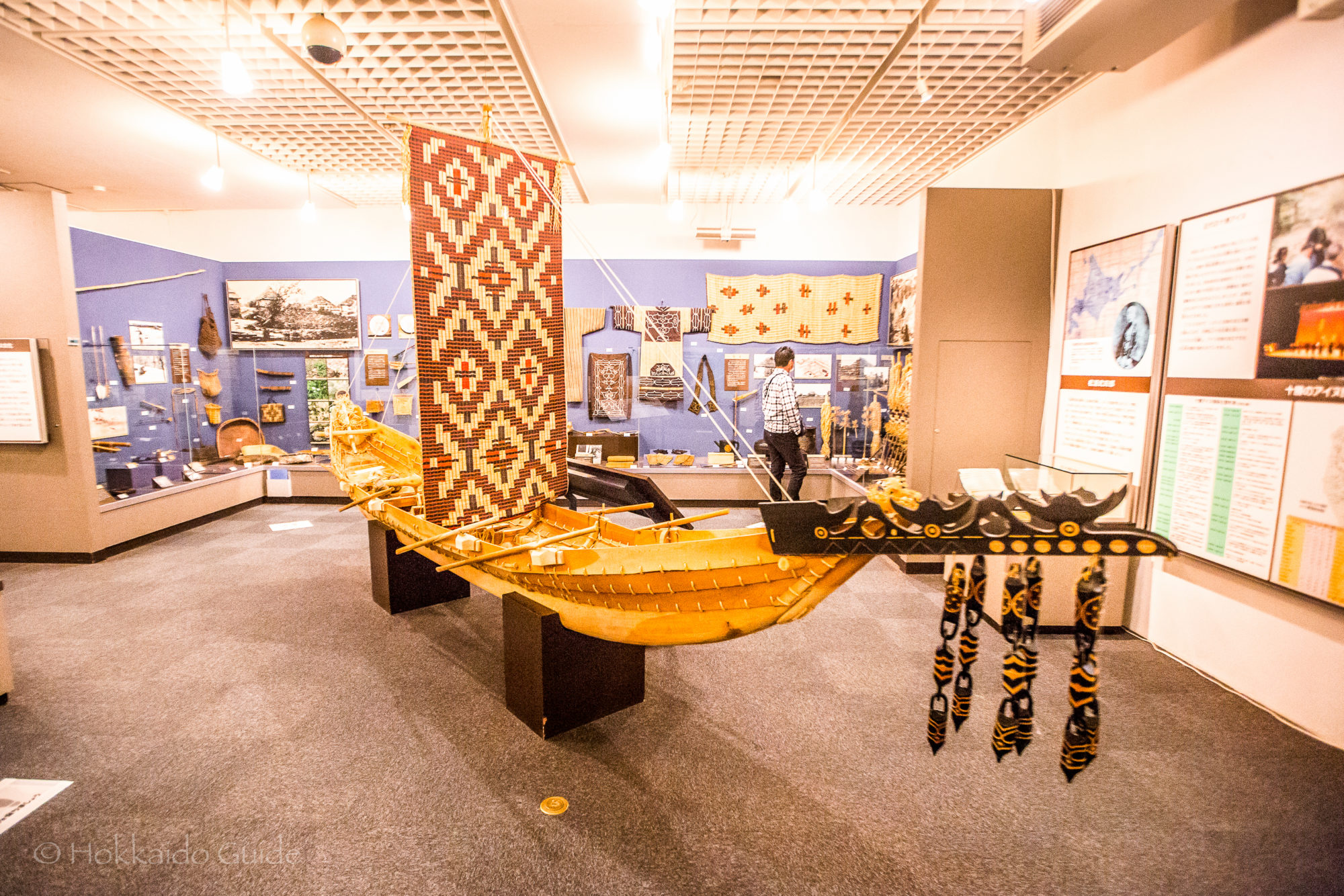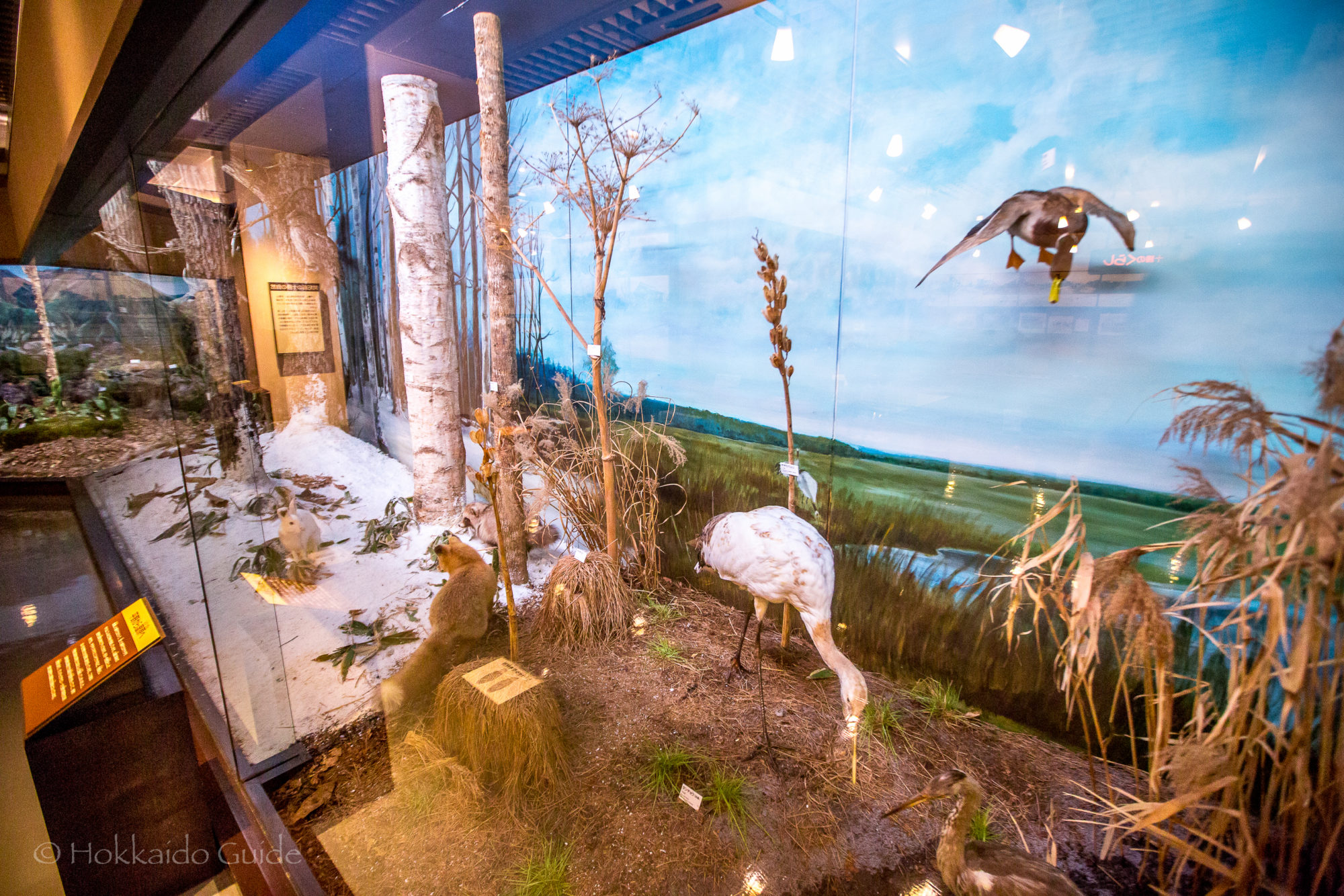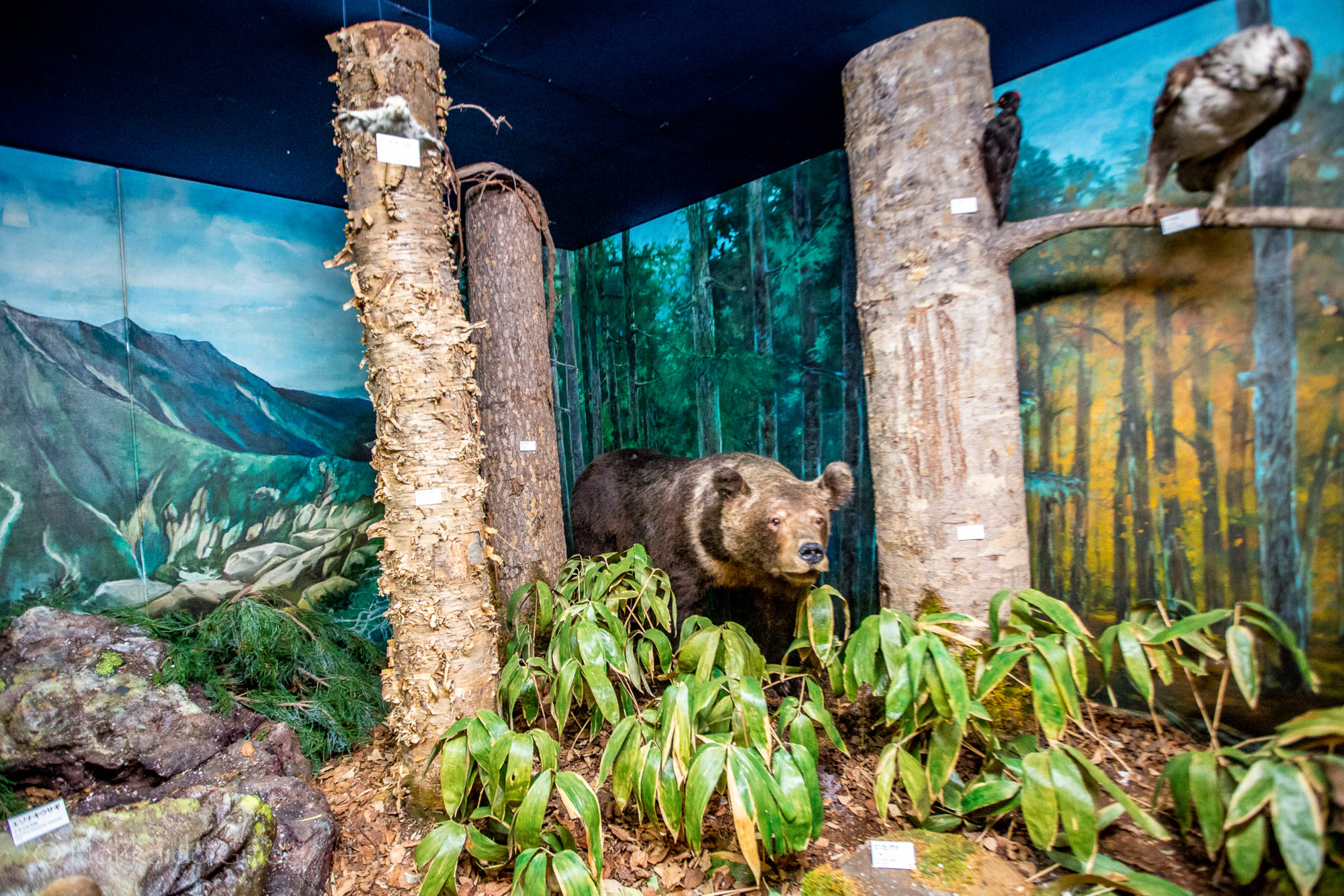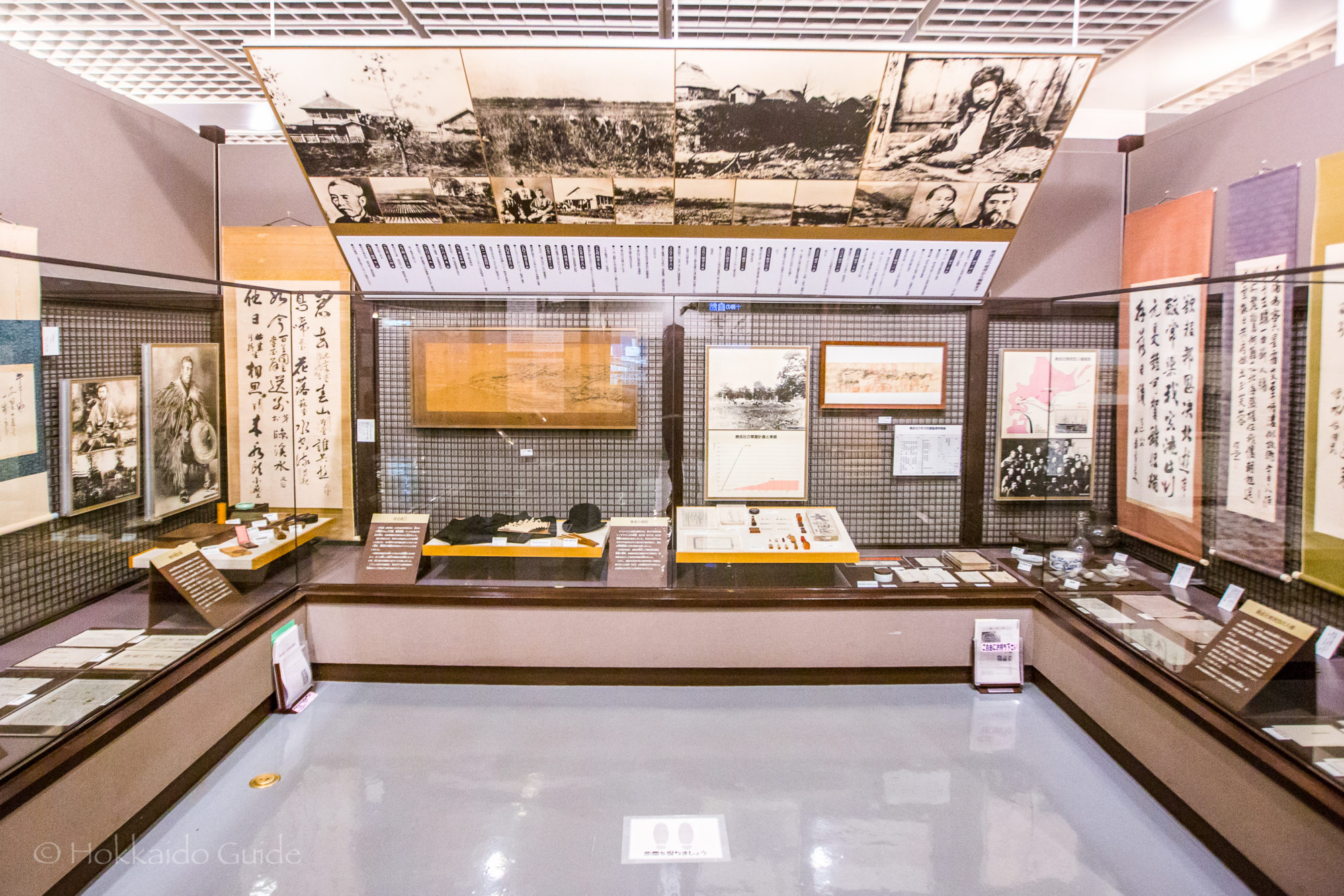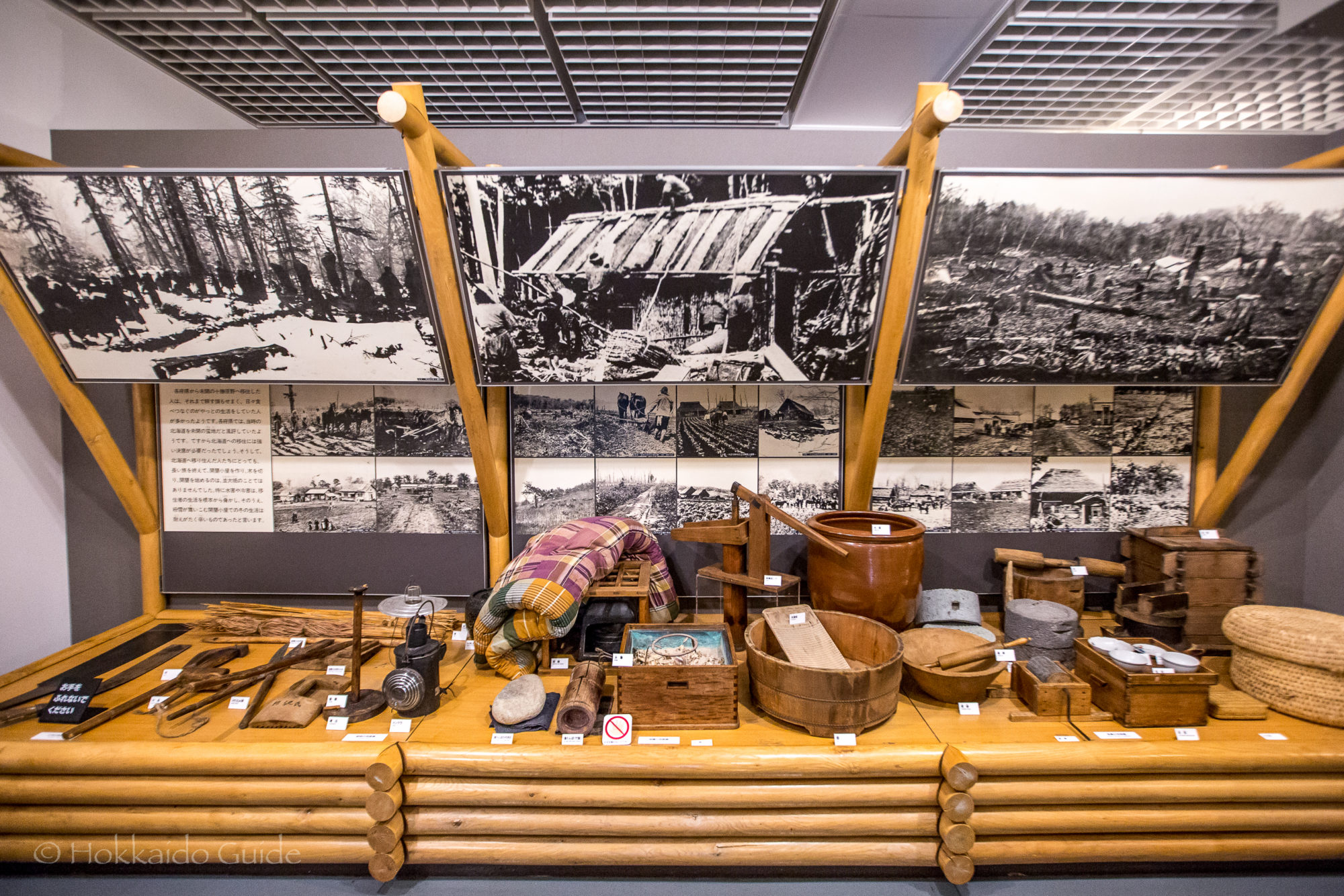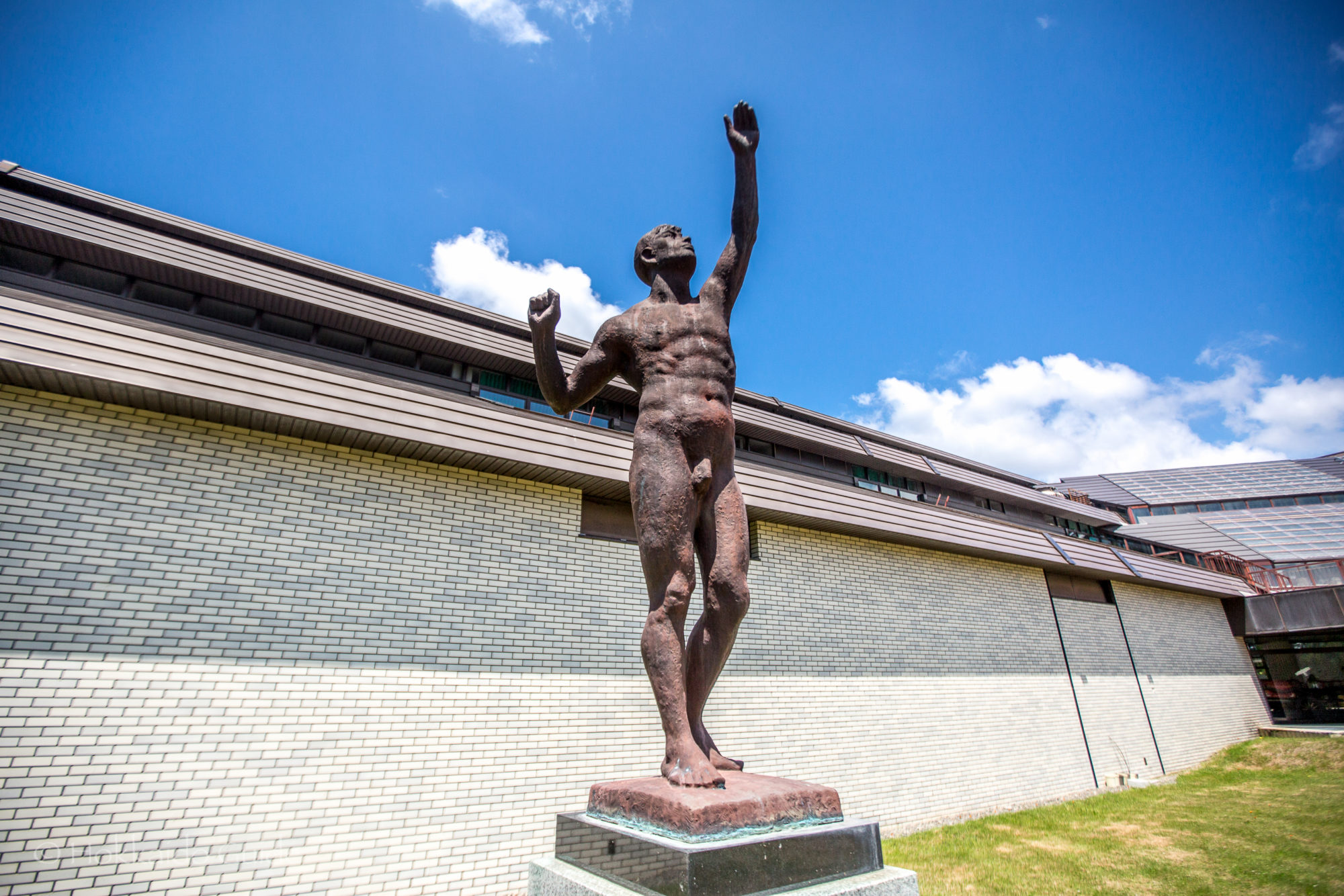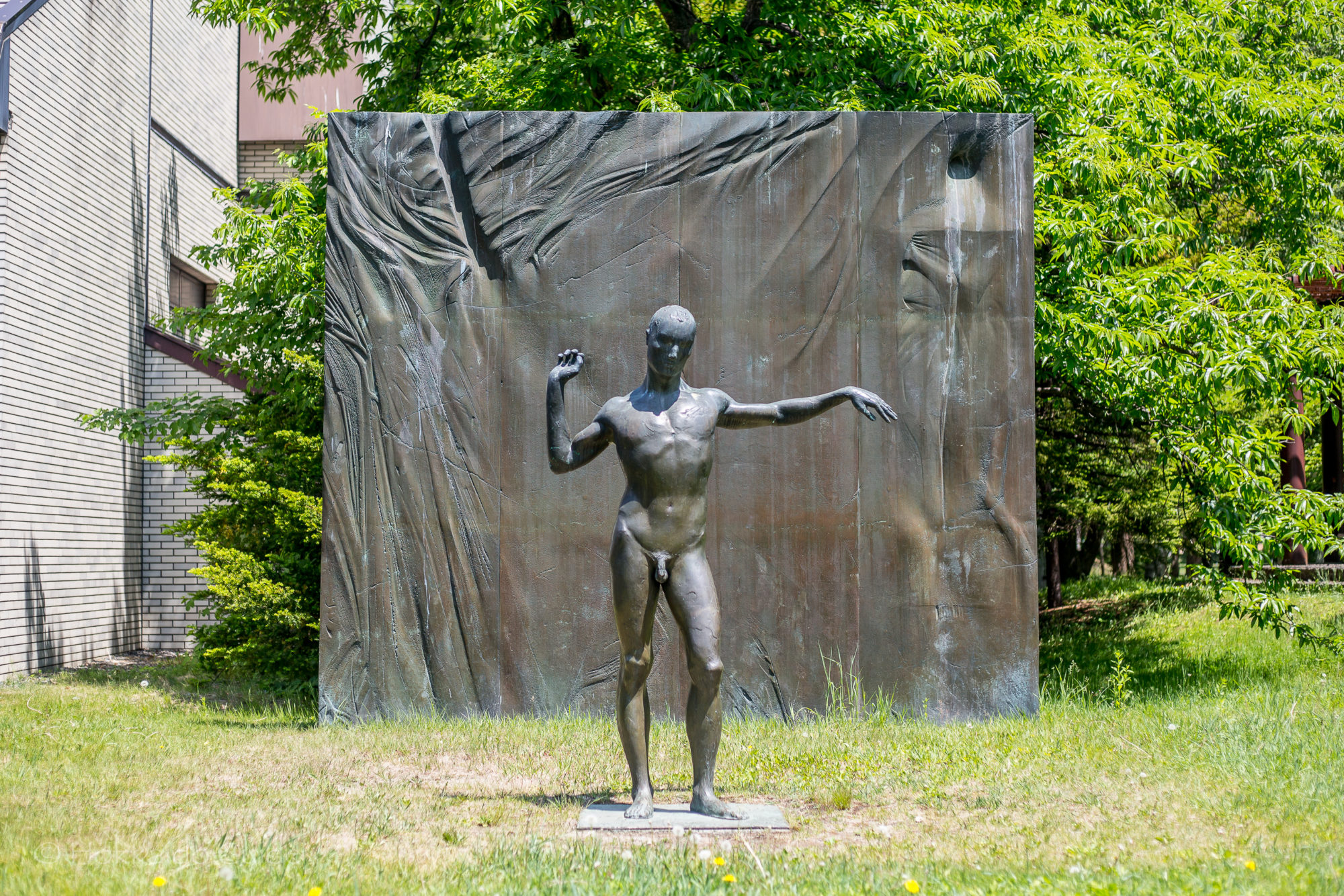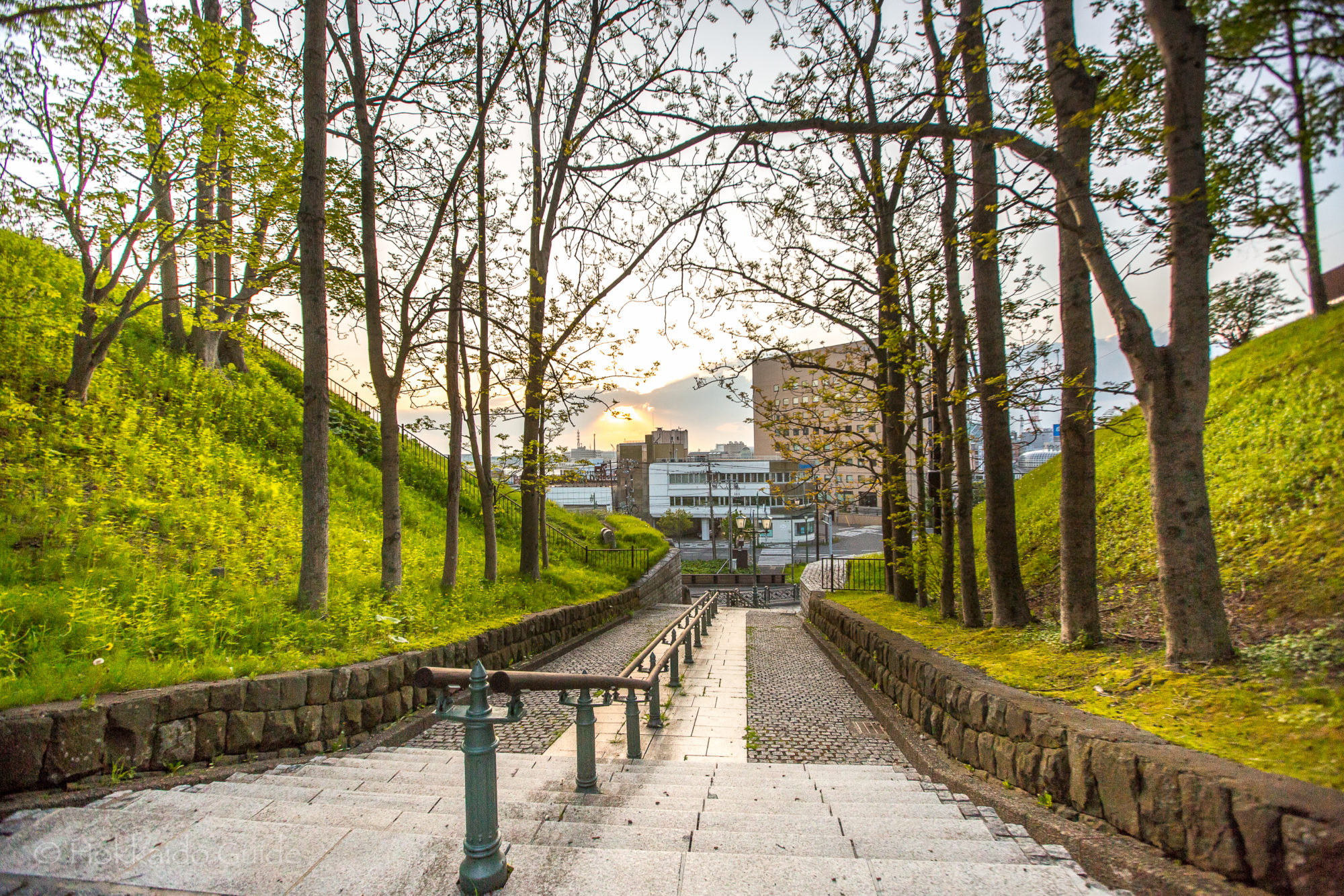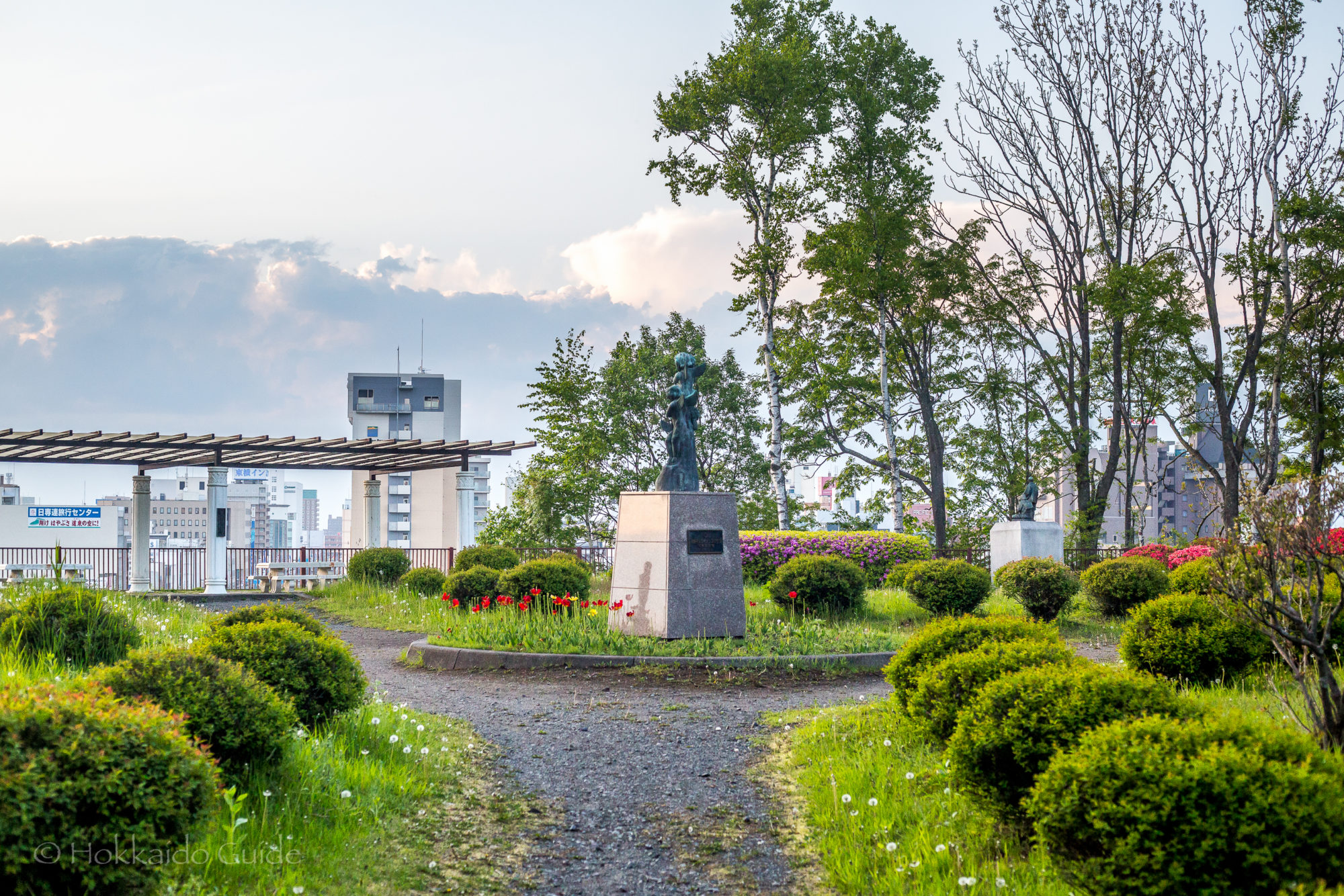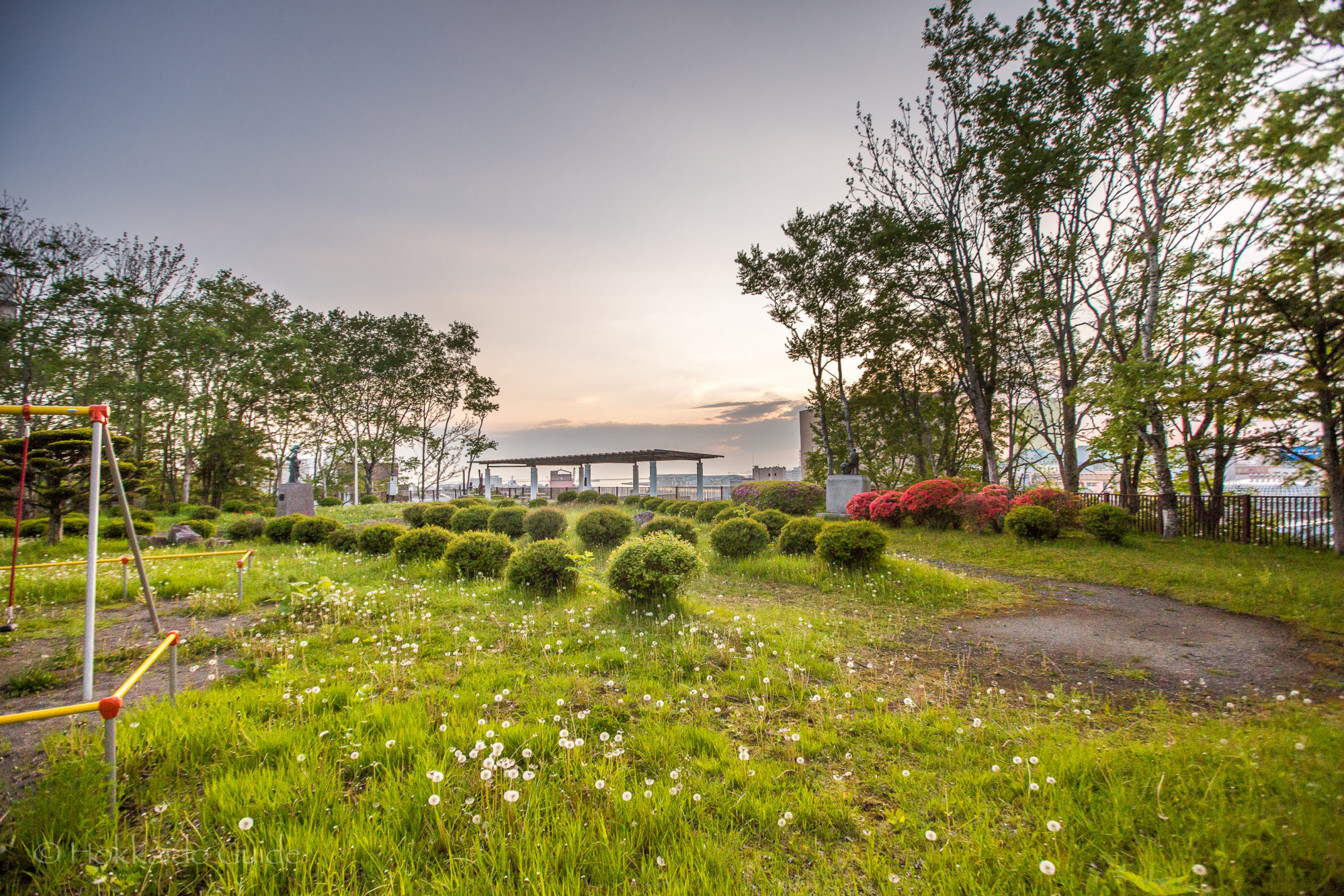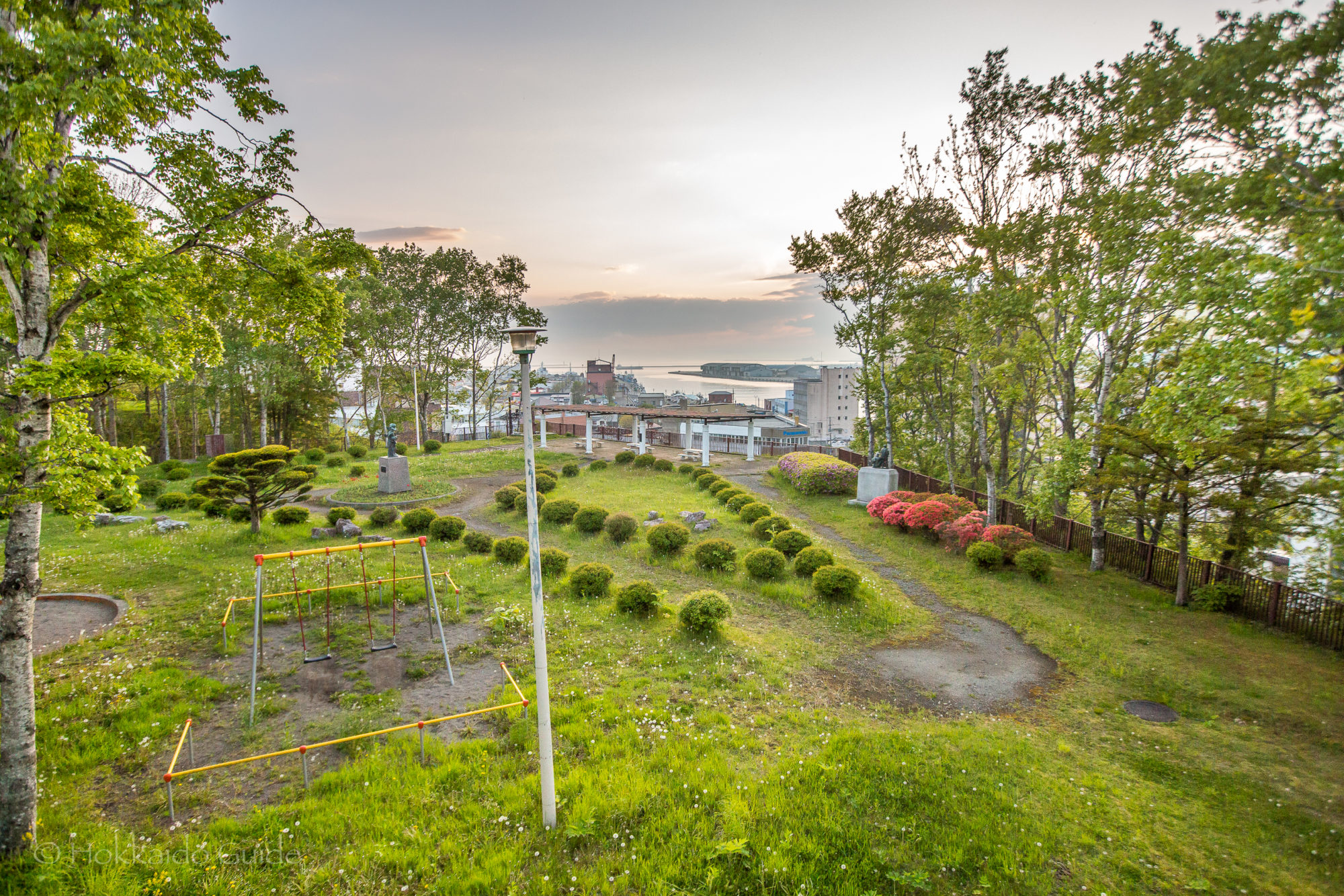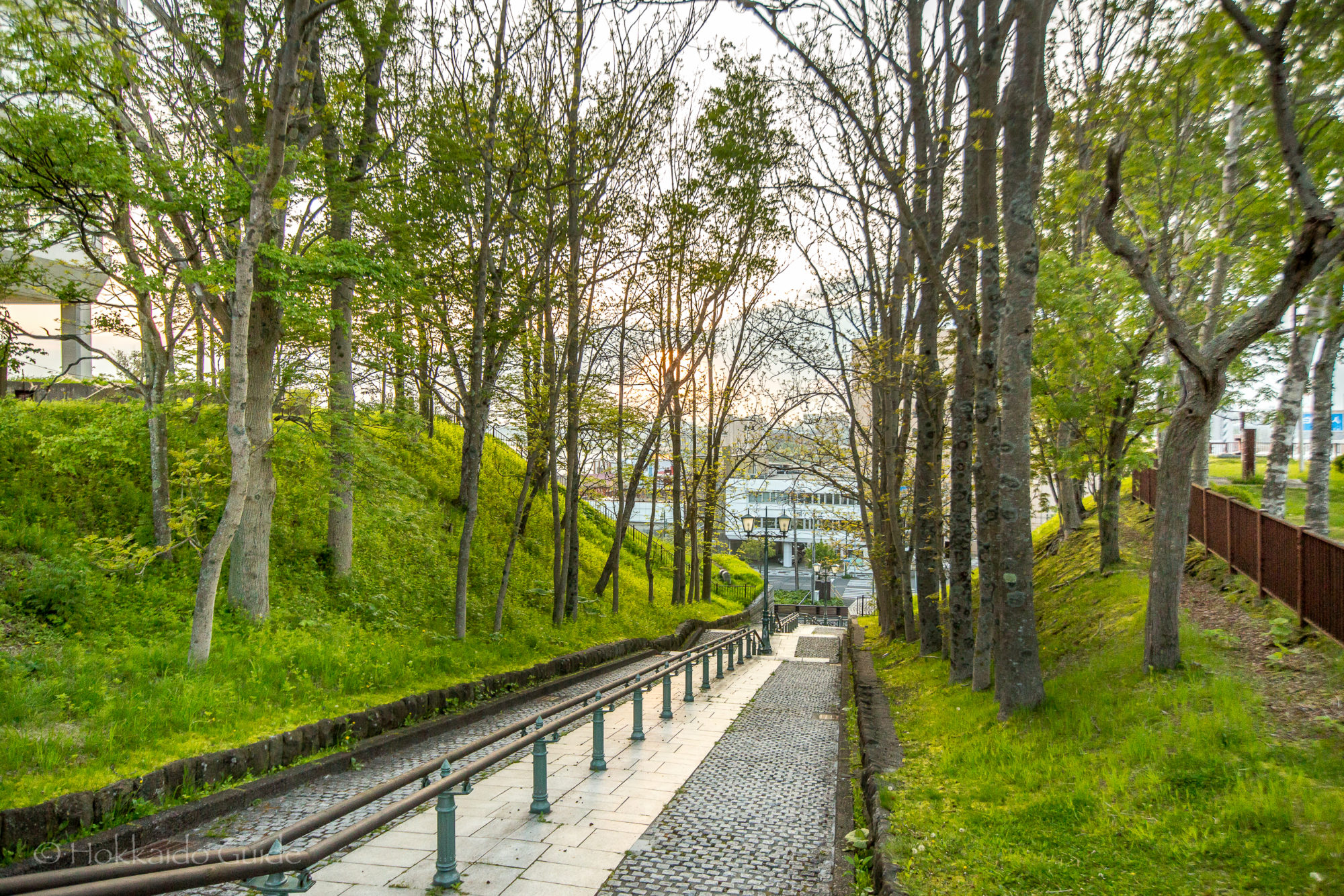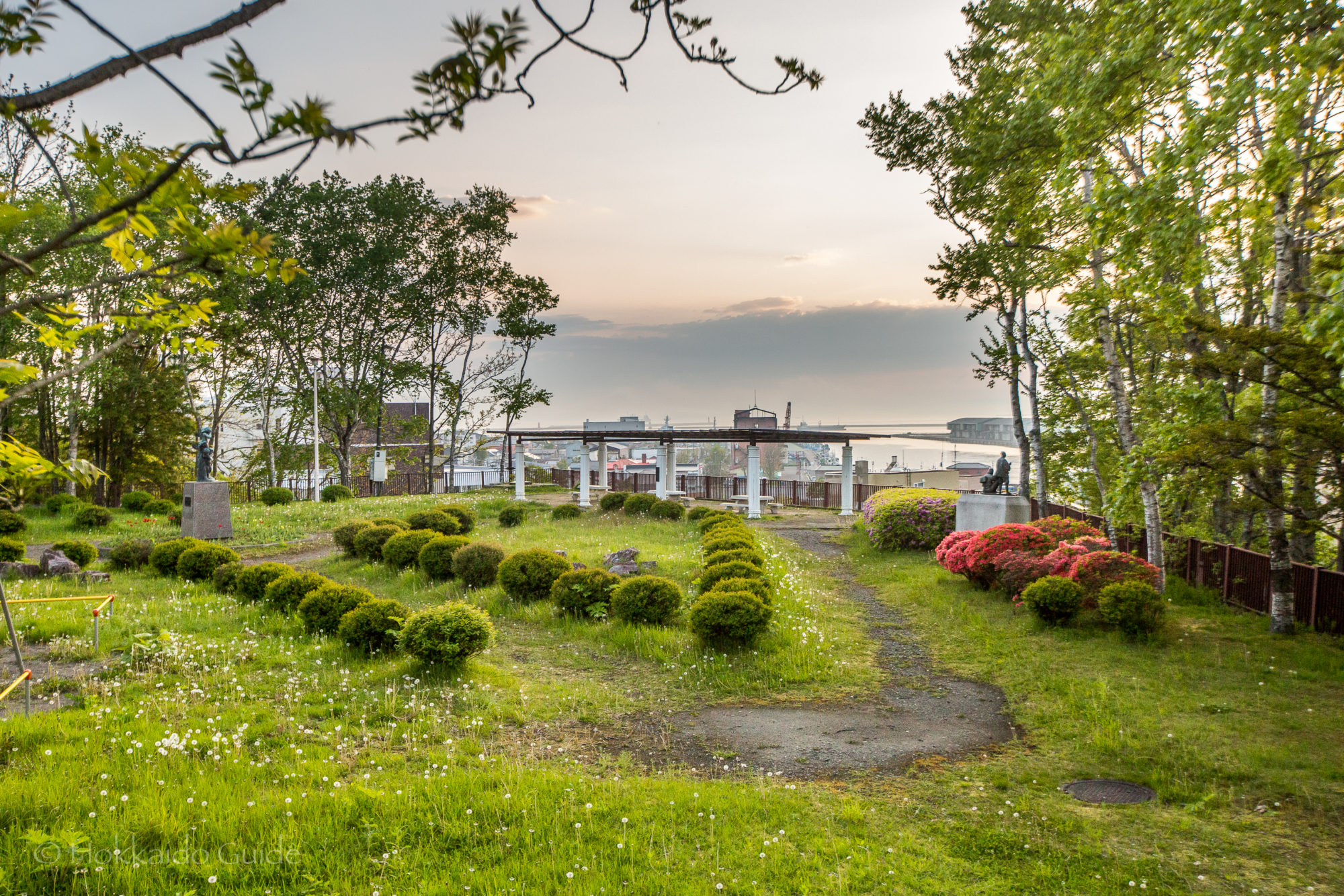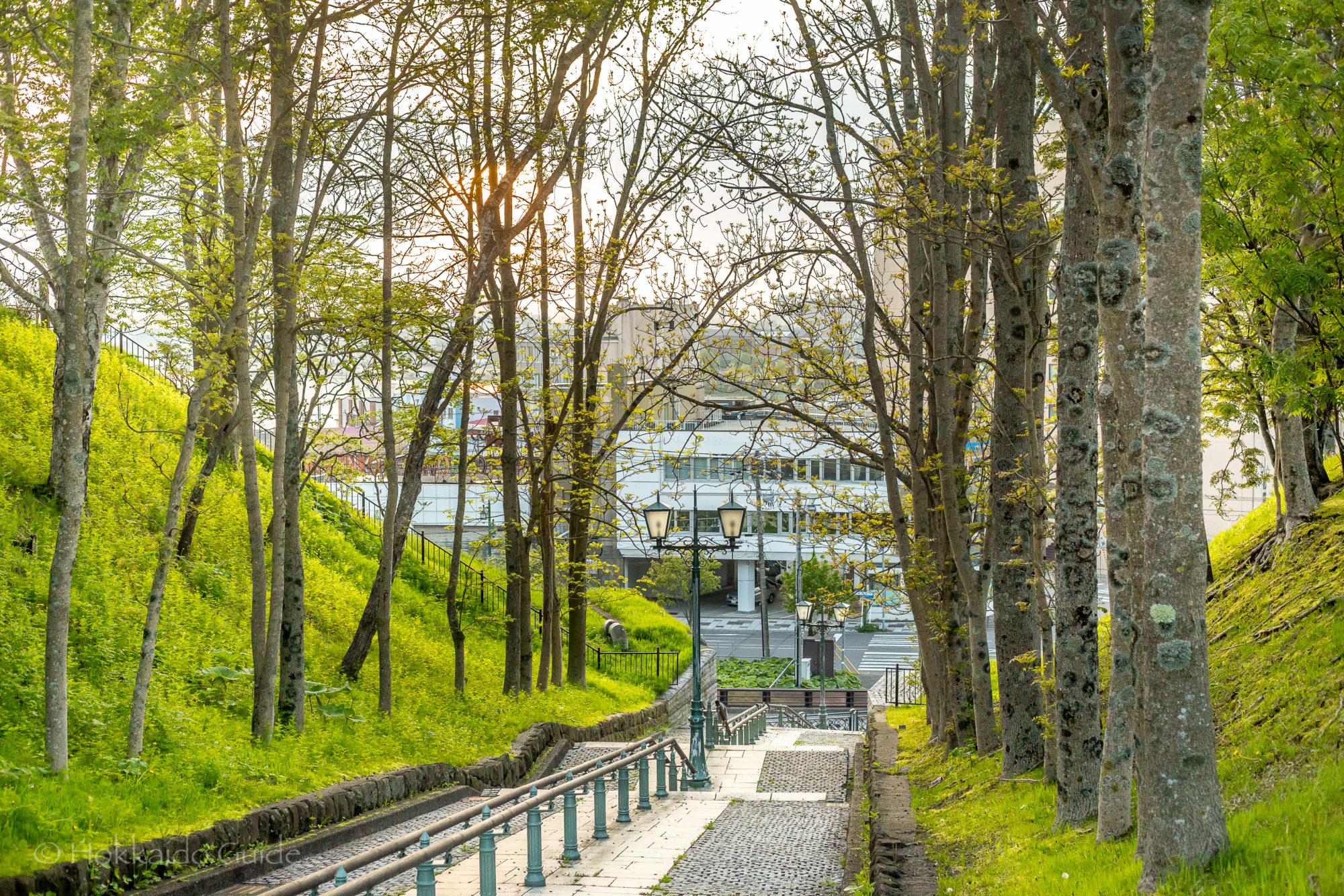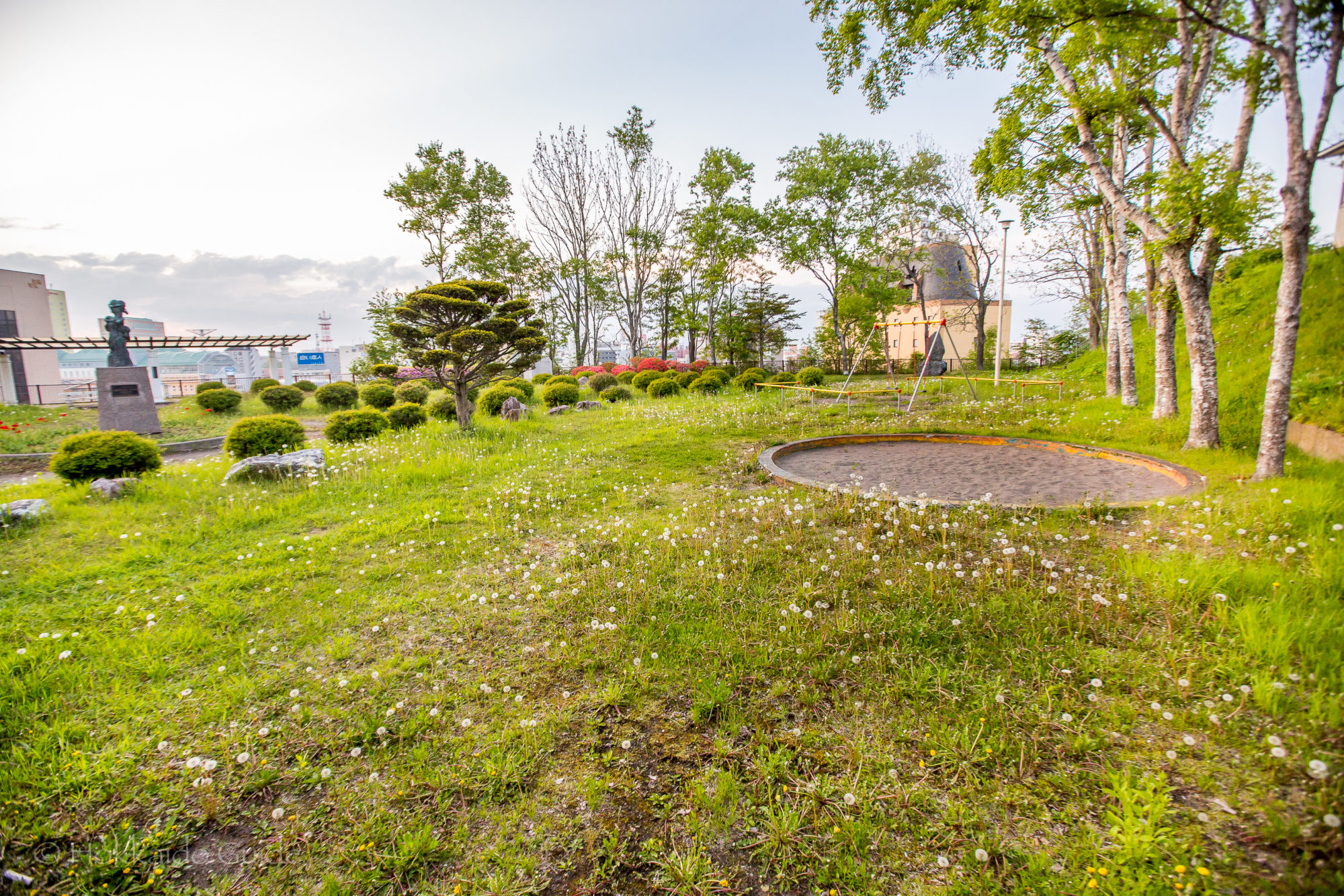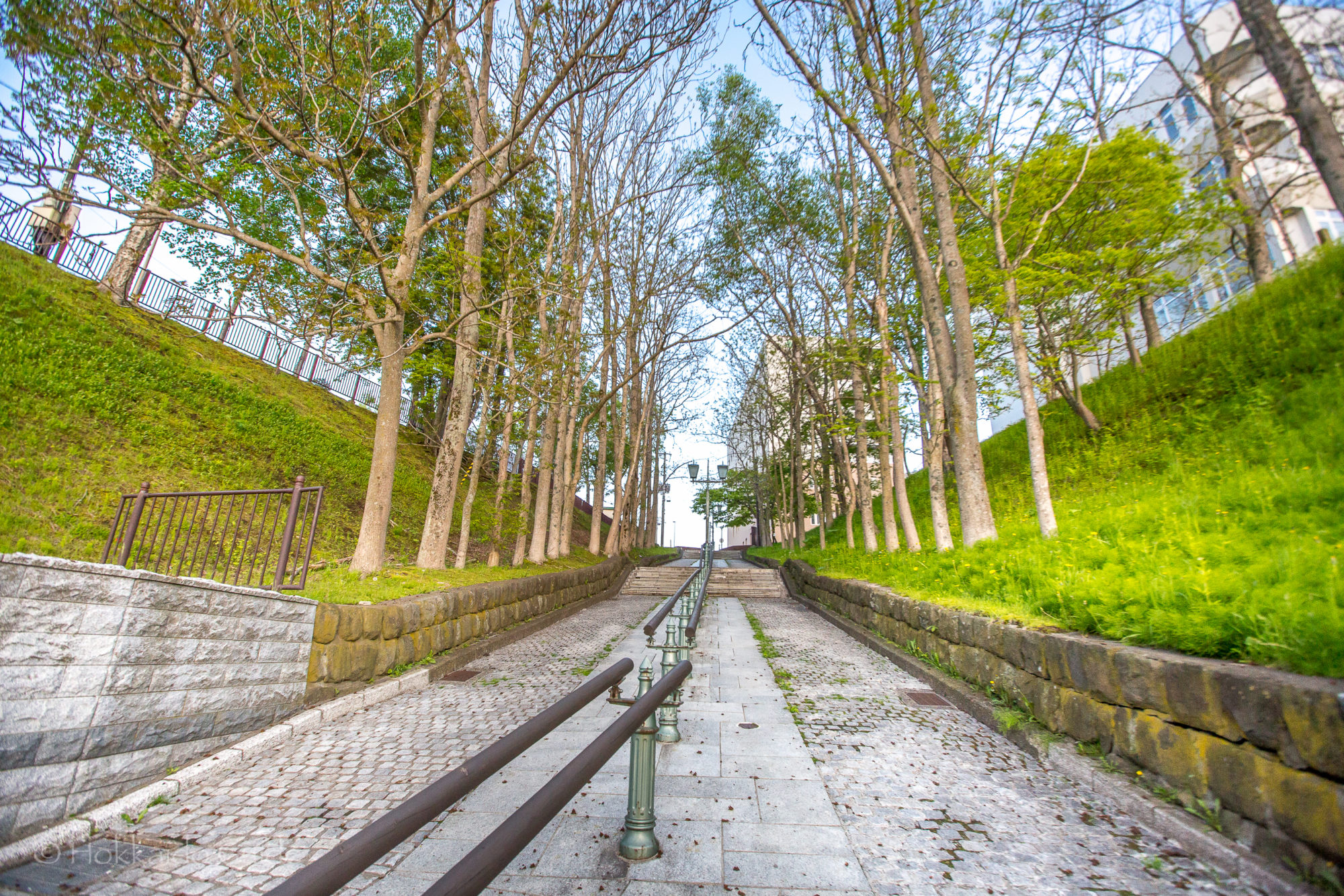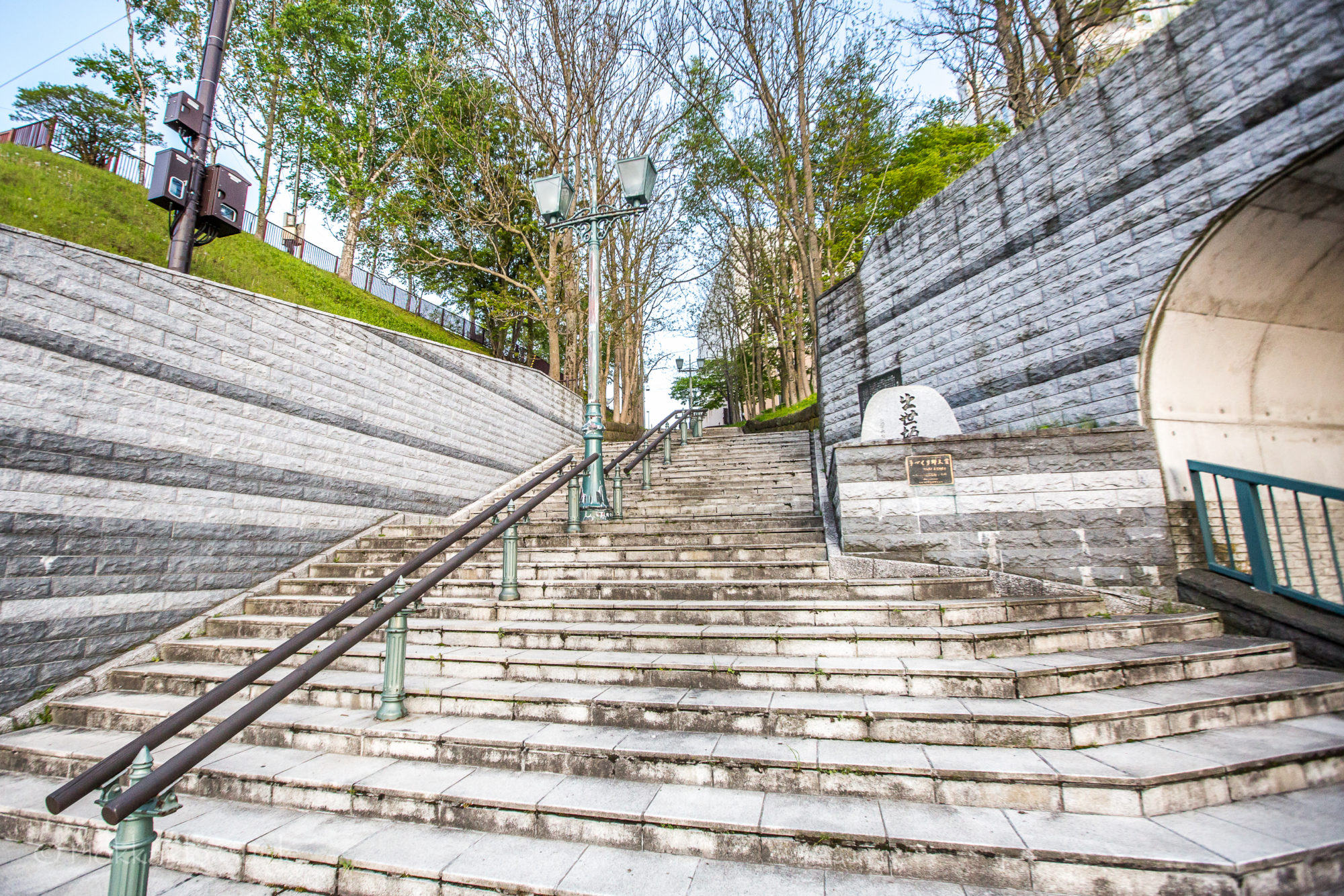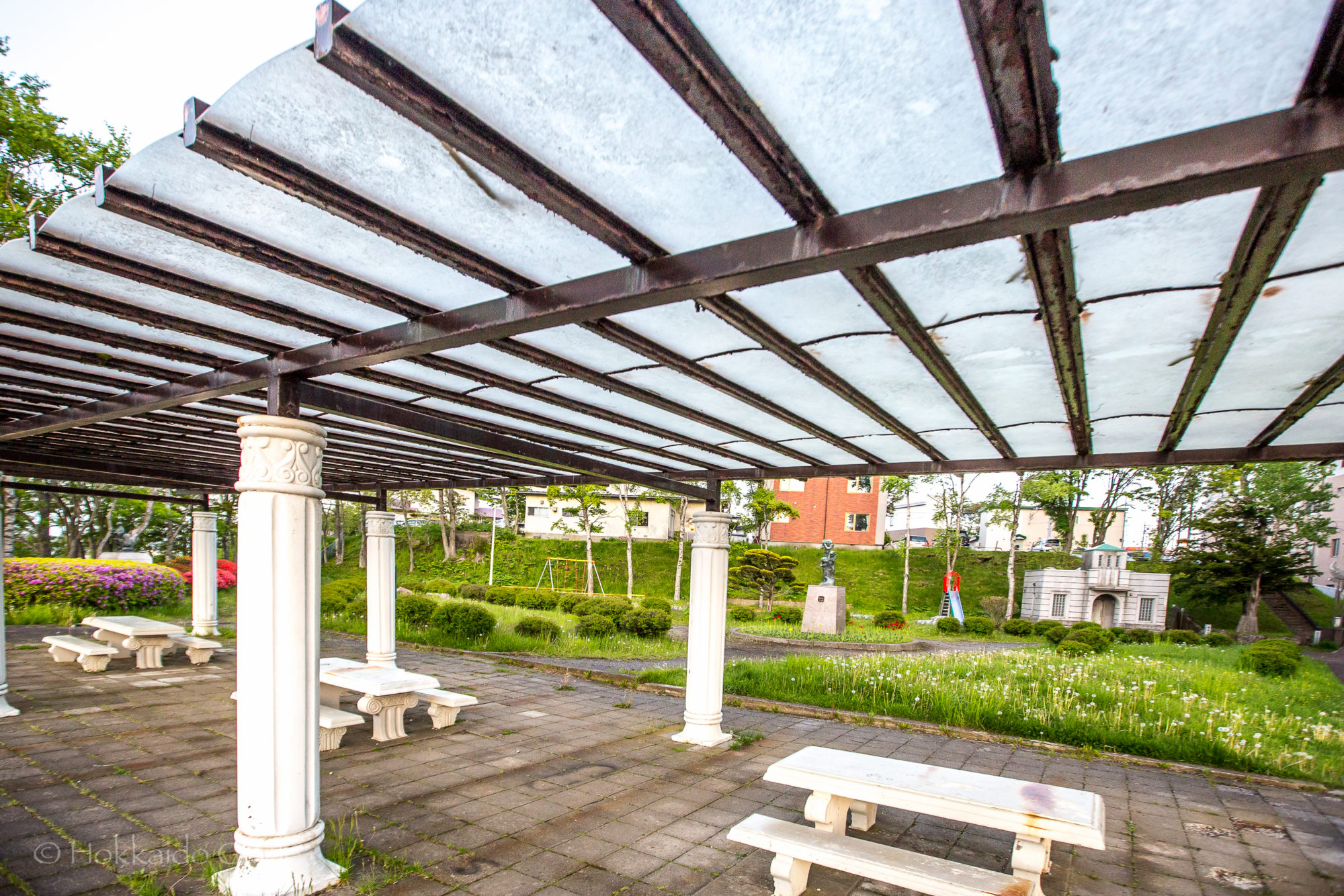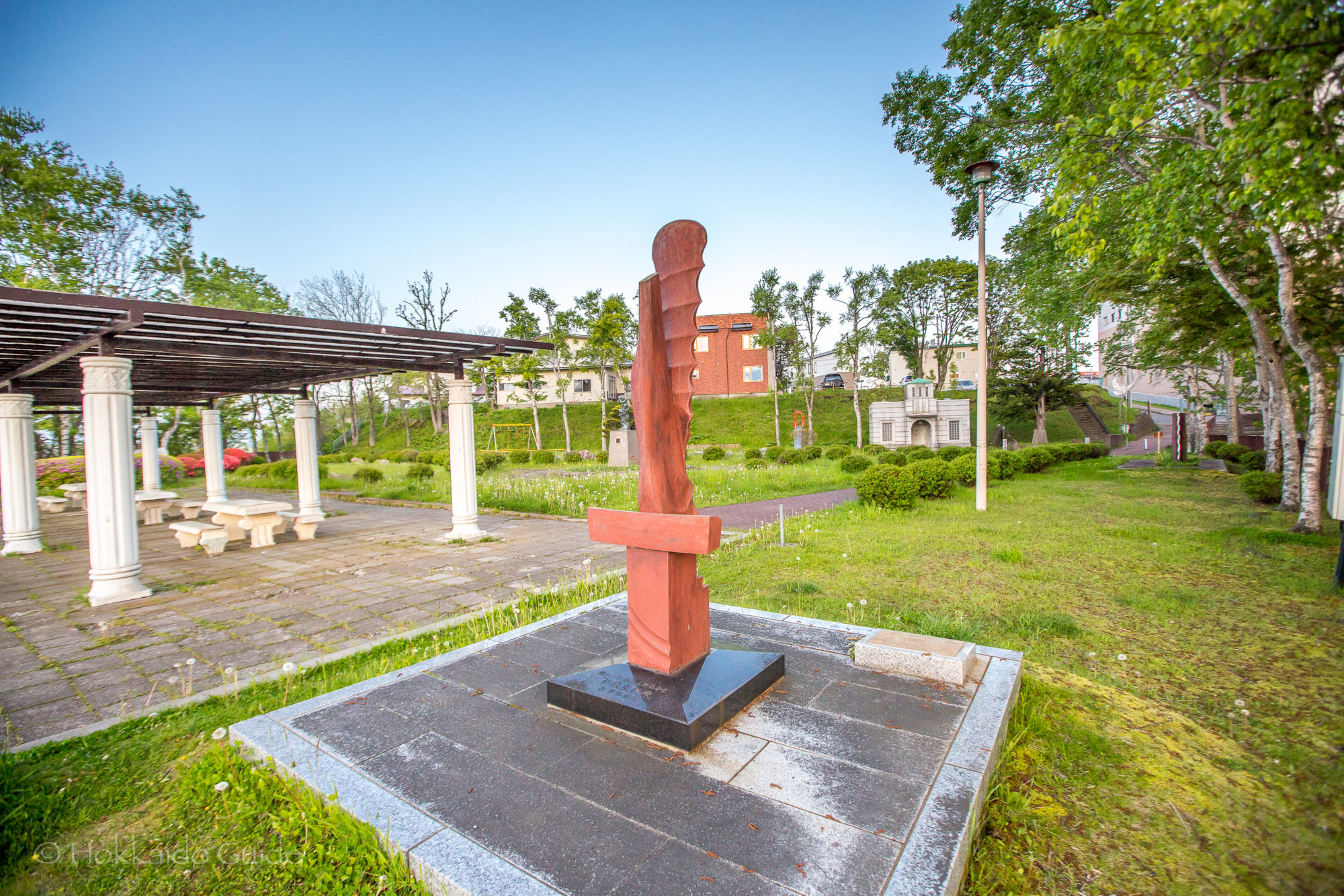
Category: Sightseeing
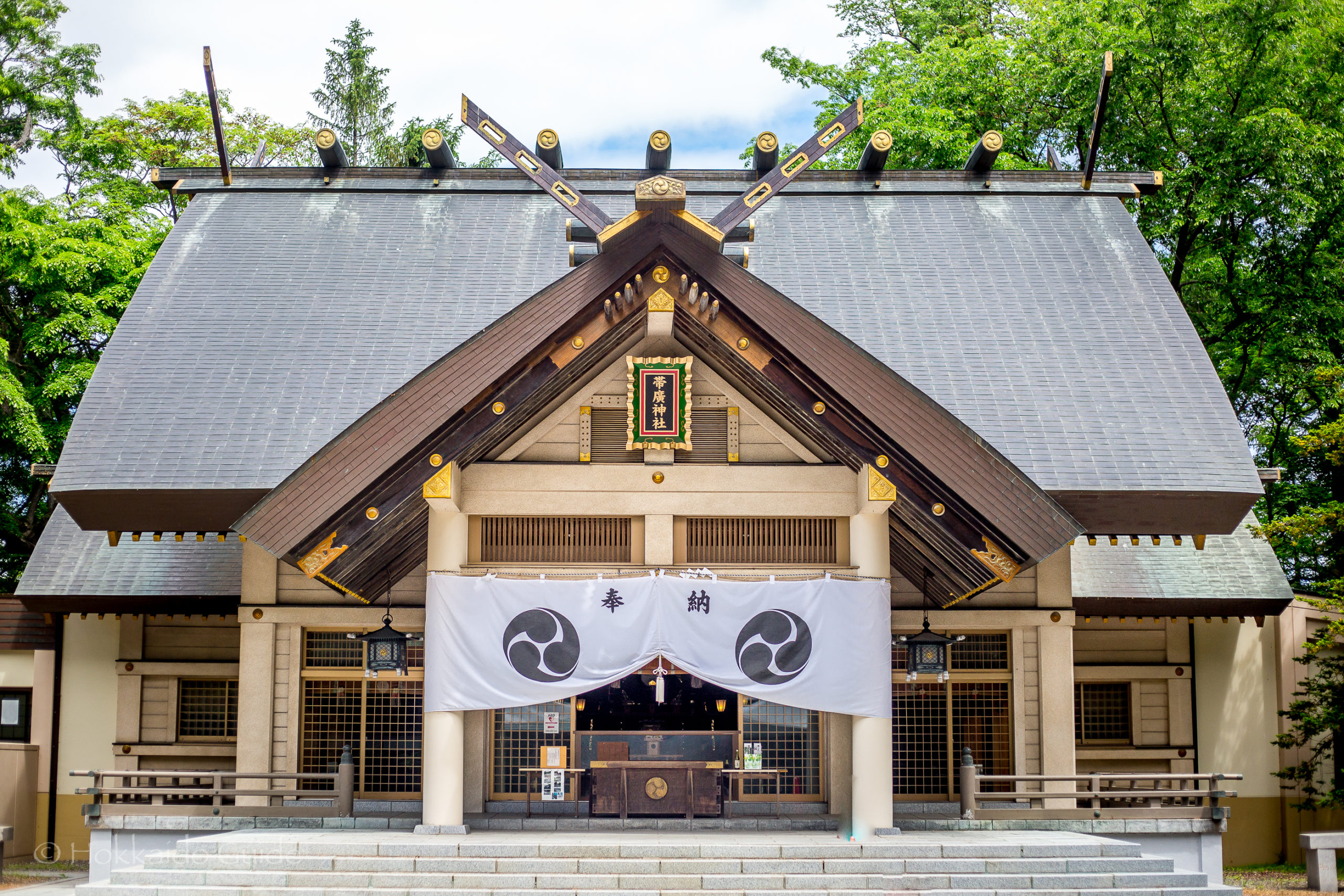
Obihiro Shrine

| Admission | - |
| Opening Hours | 9:00 - 17:00 |
| Closed | - |
| Contact | 011-5523-3955 |
| Notes | |
| Location / Getting There | The shrine is a 24 minute walk north from Obihiro station, or a 7 minute drive by car. Obihiro Shrine is right by Obihiro river, and is accessed via route 38. East 2 South 2. From Obihiro Station Bus Terminal Station No.8, take the Tokachi bus (No.7) on the 'Water Line Higashi 13' (Obihiro City). From the General Promotion Bureau stop it's a 2 minute walk. 〒080-0803 Hokkaido, Obihiro, Higashi 3 Jominami, 2 Chome, 1 |
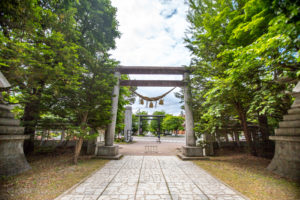 In 1881, a man named Benzo Yoda and others from Shizuoka Prefecture organized a pioneer group called the “Bansei-sha”. This group and settled inShimo-Obihiro Village and started pioneering. During this time, they started holding festivals and later built a small shrine, though the connection with the current Obihiro Shrine is still not well known. In March 1909, a town meeting was held and five members decided to relocate and build the Obihiro Shrine. Over the past hundred years, this shrine has developed, been renovated and welcomed thousands of worshippers.
In 1881, a man named Benzo Yoda and others from Shizuoka Prefecture organized a pioneer group called the “Bansei-sha”. This group and settled inShimo-Obihiro Village and started pioneering. During this time, they started holding festivals and later built a small shrine, though the connection with the current Obihiro Shrine is still not well known. In March 1909, a town meeting was held and five members decided to relocate and build the Obihiro Shrine. Over the past hundred years, this shrine has developed, been renovated and welcomed thousands of worshippers.
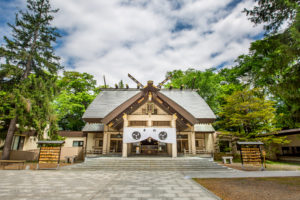 The shrine is located by the Obihiro River and although the buses don’t run that often, it is in a walkable distance. Once inside the grounds, there are many things to see besides the main shrine. There are numerous shrines and buildings. The area is also rich in greenery and the land was designated as an environmental green space protection area in Hokkaido in 1974. The grounds are also home to many small animals and wild birds such as Ezo squirrels, chipmunks, red-cockaded woodpeckers, and starlings to name a few. This area has some statues and is a good spot for photos. At the shrine, you can buy souvenirs and charms to take home. Throughout the year there are many festivals held. For more detail see below.
The shrine is located by the Obihiro River and although the buses don’t run that often, it is in a walkable distance. Once inside the grounds, there are many things to see besides the main shrine. There are numerous shrines and buildings. The area is also rich in greenery and the land was designated as an environmental green space protection area in Hokkaido in 1974. The grounds are also home to many small animals and wild birds such as Ezo squirrels, chipmunks, red-cockaded woodpeckers, and starlings to name a few. This area has some statues and is a good spot for photos. At the shrine, you can buy souvenirs and charms to take home. Throughout the year there are many festivals held. For more detail see below.
| 1st and 15th of every month | Prayers for the safety of the Imperial Family, peace for the nation, and peace for the Urahoro worshippers. |
| January 1 | New Years Day. Prayer for the safety of the Imperial Family, peace for the nation, and a good harvest for the year. |
| January 15 | The burning of old Shinto prayer cards and charms. Prayer for good health. On the day before the first day of spring, there is the purification the evil spirits. The doors of the main shrine are opened to offer thanks to the Milk God and prayer for spring. |
| June 30 | Grand purification ceremony and Nagoshi-no-harai (summer purification). A Shinto ritual to purge the sins and impurities of the past six months and pray for good health. |
| August | On the evening before the last Sunday of the month, There is the summer portable shrine procession festival (Mikoshi & Yoimiya Festival). The portable shrine is purified the night before the main festival, and the gods are notified that the big festival will be held tomorrow. On the last Sunday of the month, the portable shrine will be paraded through the town to pray for the safety of each family and the prosperity of each company. |
| September 20 | Autumn Grand Festival Prayers and dedication events are held for the Ujigami (local deity), which has been handed down from the pioneers. The doors of the main shrine are opened to offer thanks to the Goddess of Milk and pray for the autumn. The god of the land and the god of agriculture are invited to give thanks for the year's harvest and to pray for the safety. Prayers are offered to the gods for the healthy growth of children who are three, five, and seven years old. Prayers are offered for the harvest and labor to the gods of the 24 shrines in Urahoro Town. |
| December 31 | New Year's Eve Purification Ceremony and Nightfall Festival is held to purify the sins and impurities of the year from the body and soul using dolls, and to pray for good health in the New Year. |
| December 30 to January 5 | The shrine grounds are illuminated. |
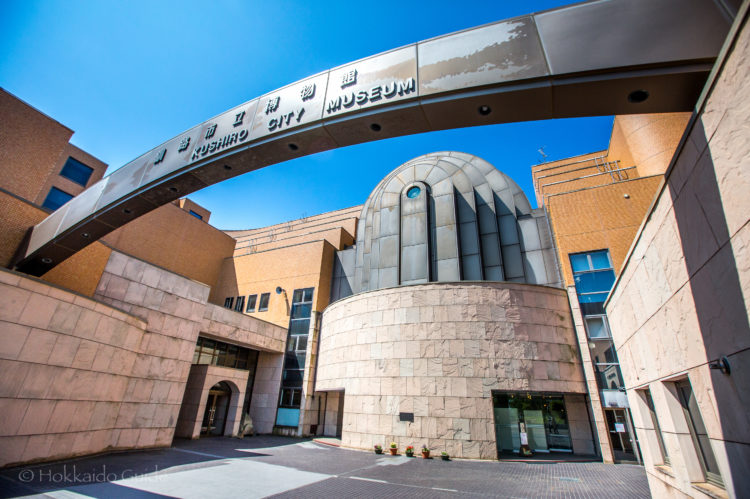
Kushiro City Museum
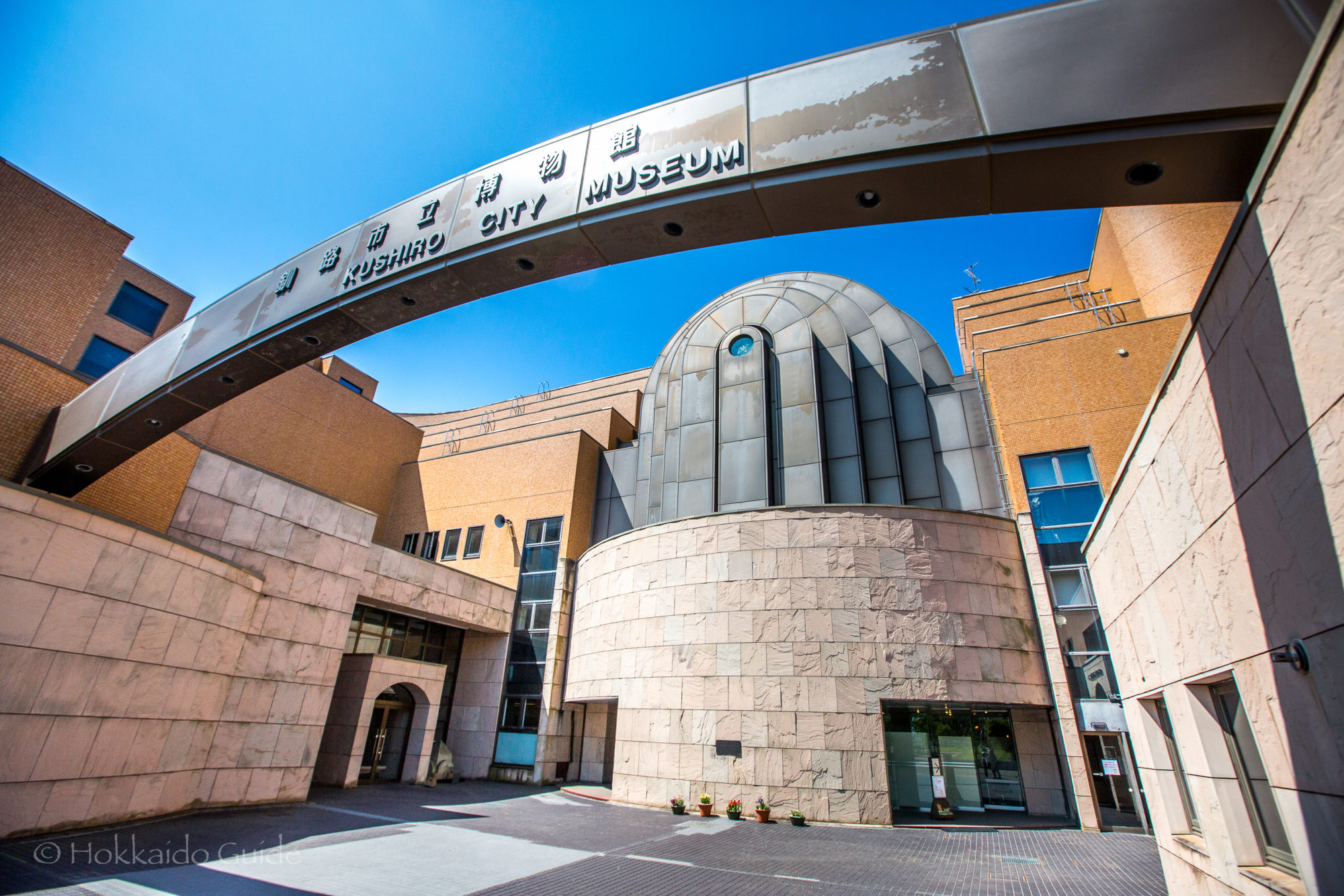
| Admission | ¥480 - Adults ¥250 - Highschool Students ¥110 - Children |
| Opening Hours | 9:30 - 17:00 |
| Closed | Mondays |
| Contact | 0154-41-5809 |
| Notes | Museum, wheelchair access, free wifi, lockers available, events held throughout the year, wheelchair & stroller rental |
| Location / Getting There | The museum is a 40 minute walk from Kushiro station or a 15 minute drive.. For public transport from Kushiro Station bus terminal No.3 (bus 16 Shirakaba Harutori Shopping Center Line, 17 Shirakaba Akira Danchi Line) or No. 11 (bus 2 Wakakusa Danchi Line, 12 Fumizono Koju Line (for Midorigaoka), 55 Nanboku Line (2nd) Please take the bus from (to Wakakusa housing complex)). The nearest bus stop to the museum is the "Municipal Hospital". It takes about 10 to 15 minutes from Kushiro Station to the city hospital bus stop. ¥220 yen one way. (As of October 1, 2021) 1-7 Shunkodai, Kushiro, Hokkaido 085-0822 |
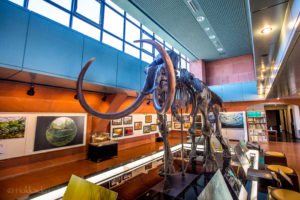 The history of the Kushiro City Museum dates far back to 1936. Originally, an exhibition room was set up as the “Kushiro City Folk Museum” on the second floor of the Kushiro City Hall Waterworks Construction Office. Over the decades, the location changed and finally on November 3rd, 1983, the “Kushiro City Museum” was born. The building was designed by a local arhcitect, Kiko Mozuna. His award winning design was designed to represent a red-crowned crane with its wings spread out. The museum is home to 4100 exhibits and objects.
The history of the Kushiro City Museum dates far back to 1936. Originally, an exhibition room was set up as the “Kushiro City Folk Museum” on the second floor of the Kushiro City Hall Waterworks Construction Office. Over the decades, the location changed and finally on November 3rd, 1983, the “Kushiro City Museum” was born. The building was designed by a local arhcitect, Kiko Mozuna. His award winning design was designed to represent a red-crowned crane with its wings spread out. The museum is home to 4100 exhibits and objects.
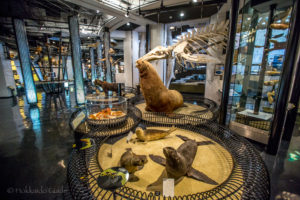 The exhibitions at the museum incorporate flora and fauna from the Kushiro area. There is a permanent Ainu exhibition here also which is fascinating. This is one of the best museums in Hokkaido as the exhibits are first class and very well presented with great detail. There is information in multiple languages and there is plenty of space to walk around at your leisure. The museum is four floors and there is a huge amount of information to learn from the earliest archaeological findings to the current wild life of Kushiro. This museum is a must visit for those visiting Kushiro and are interested in history.
The exhibitions at the museum incorporate flora and fauna from the Kushiro area. There is a permanent Ainu exhibition here also which is fascinating. This is one of the best museums in Hokkaido as the exhibits are first class and very well presented with great detail. There is information in multiple languages and there is plenty of space to walk around at your leisure. The museum is four floors and there is a huge amount of information to learn from the earliest archaeological findings to the current wild life of Kushiro. This museum is a must visit for those visiting Kushiro and are interested in history.
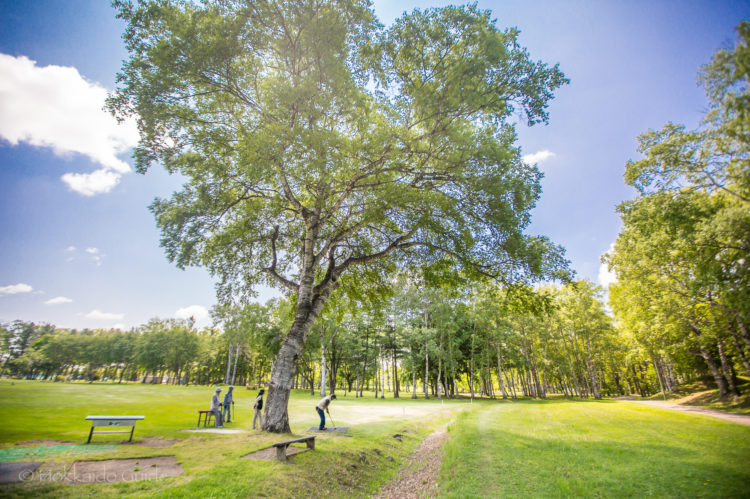
Midorigaoka Park
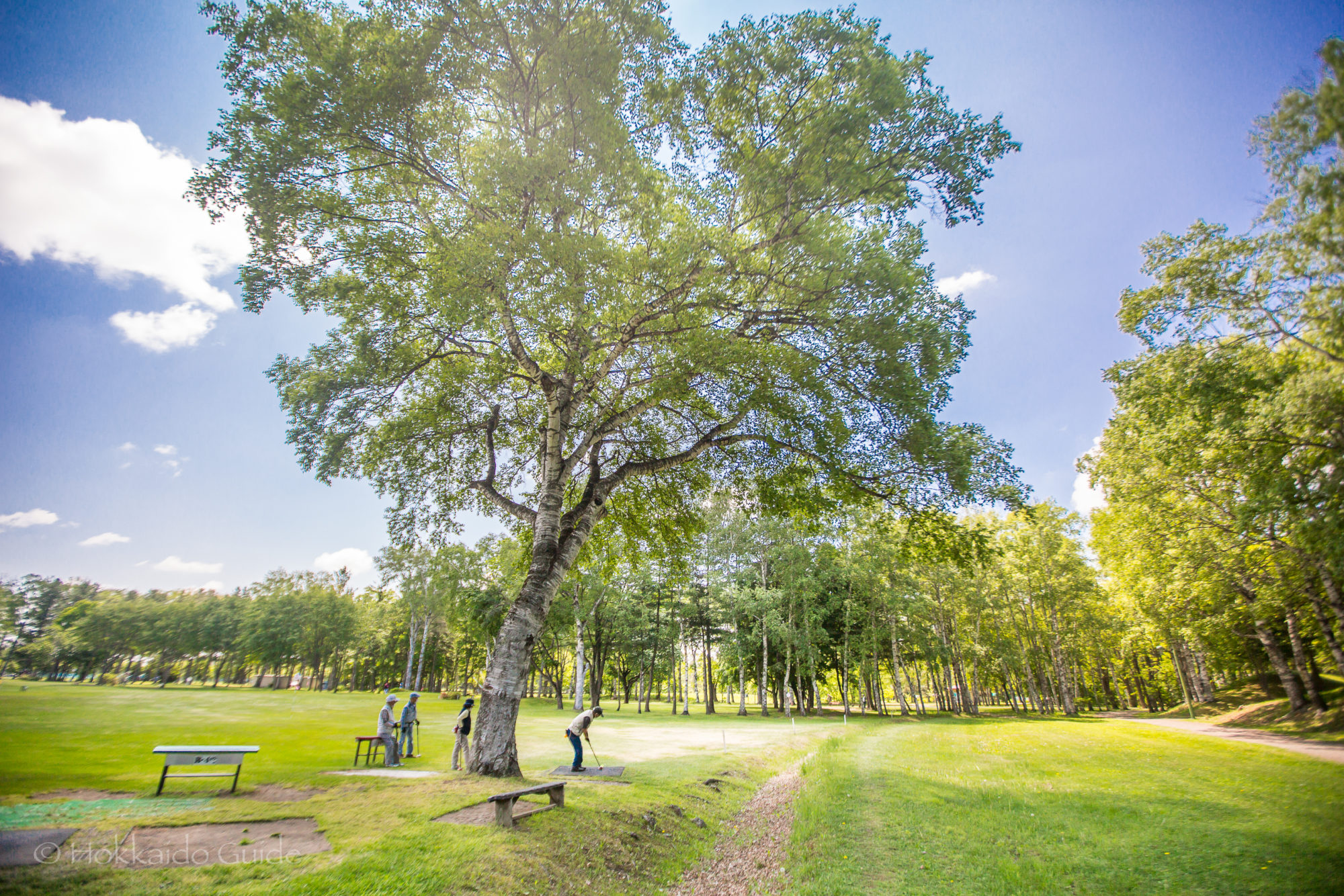
| Admission | Free |
| Opening Hours | 24 hours |
| Contact | 011-5521-3172 |
| Notes | Large park, playground, walking paths, park golf, event space, museum, jogging spot, picnic area, free parking available |
| Location / Getting There | The park is in central Obihiro. The park is an 18 minute walk from Obihiro station or a 6 minute drive. Simply head straight down 'Koen Odori Avenue'. 〒080-0846 Hokkaido, Obihiro, Midorigaoka, 2 |
This massive park is located in the middle of the city of Obihiro. Stretching to 50 hectares, this comprehensive park contains a park golf course, the Obihiro Zoo and the Obihiro Centennial Hall, plus walking trails and a pond. Midorigaoka Park has many different sections to it. One area is the ‘Green Park’ is a huge mowed lawn for people to enjoy. It is lined by a bench, but not just any bench. The bench here runs for 400 meters! Plenty of space to find a seat. beyond this large green space is a large stage used for events. Plus there is a park golf course as well.
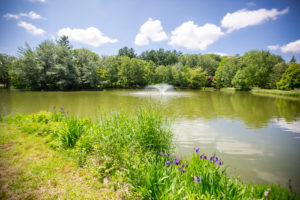 You can find many of Obihiro’s older residents enjoy the park golf course. Past this is the Obihiro Centennial Hall, which serves as a museum and gallery for the local area. Near here there are winding paths that run through the park with sculptures and benches to enjoy. There is also a large pond. here you can rent out small row boats and have a paddle. Further on is the entrance to to zoo. This park, is not too far a walk from the station and if you have time is a top spot to visit in any season. In spring, the cherry blossoms are out and the autumn leaves are equally beautiful.
You can find many of Obihiro’s older residents enjoy the park golf course. Past this is the Obihiro Centennial Hall, which serves as a museum and gallery for the local area. Near here there are winding paths that run through the park with sculptures and benches to enjoy. There is also a large pond. here you can rent out small row boats and have a paddle. Further on is the entrance to to zoo. This park, is not too far a walk from the station and if you have time is a top spot to visit in any season. In spring, the cherry blossoms are out and the autumn leaves are equally beautiful.
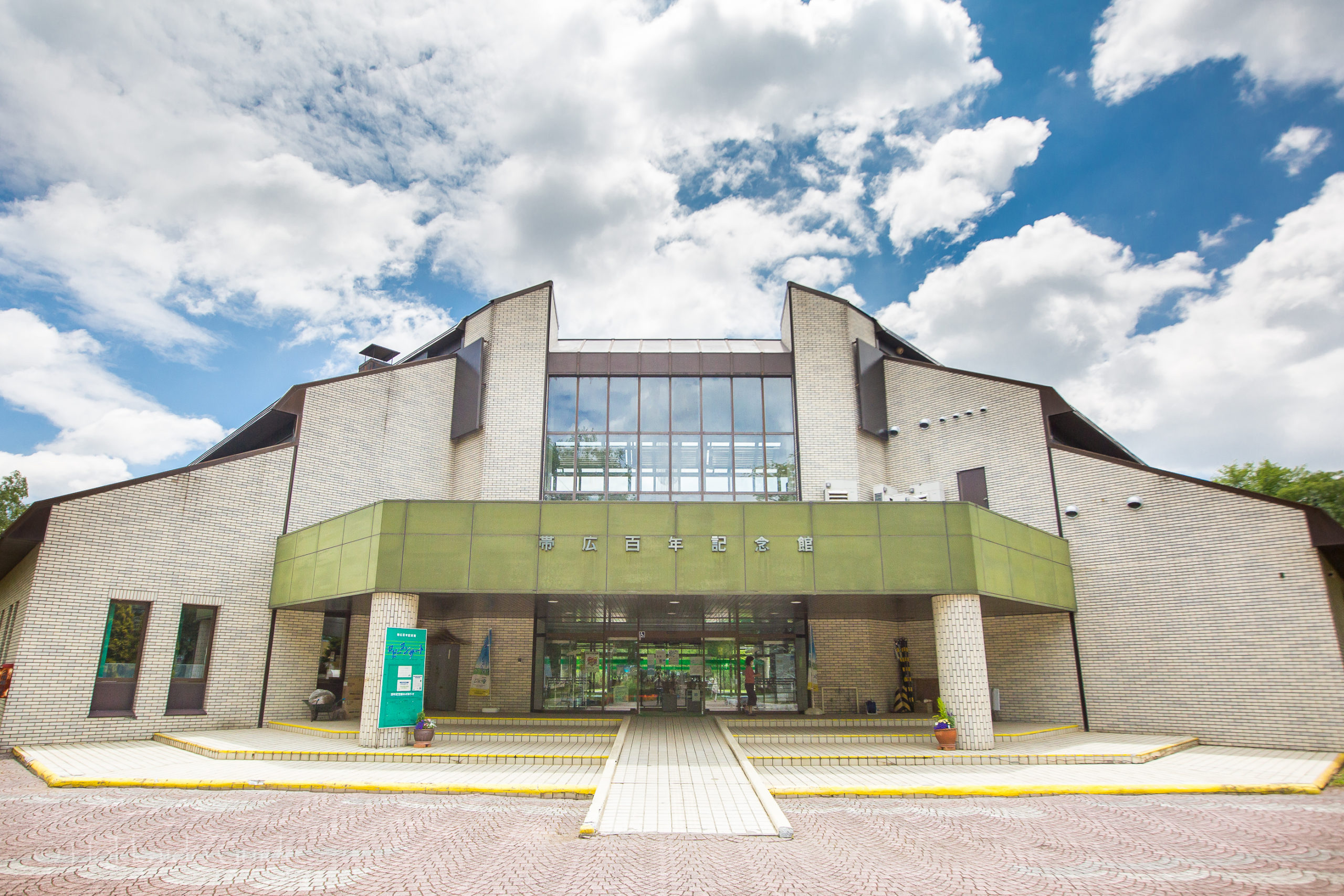
Obihiro Centennial Hall
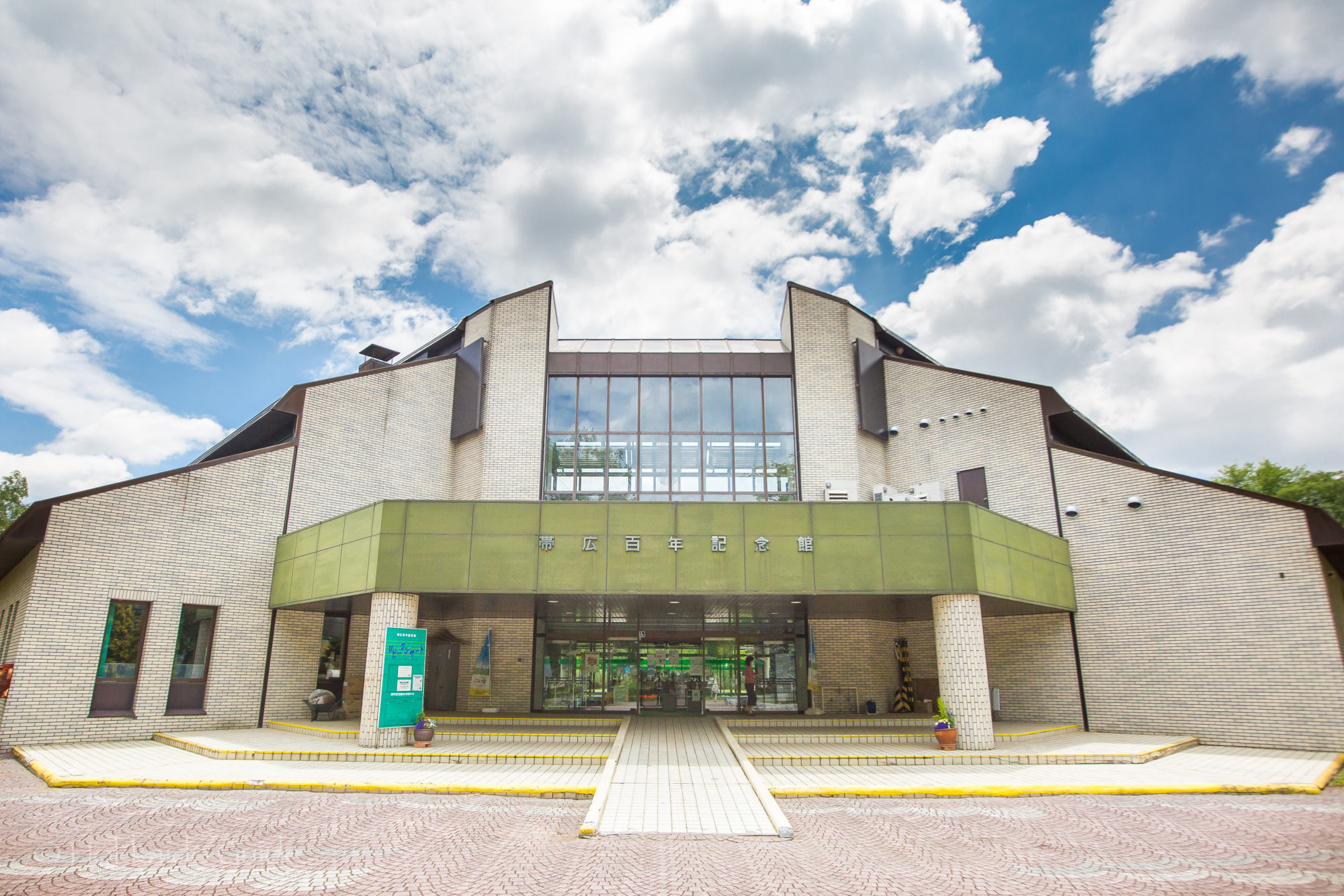
| Admission | ¥700 Year ticket ¥350 Adults ¥190 Highscool & seniors |
| Opening Hours | 9:00 - 17:00 |
| Closed | Mondays New Year Holidays |
| Contact | 0155-24-5352 |
| Notes | Museum, art gallery, parking available, free wi-fi, wheelchair access, free English, Chinese, & Korean audio service |
| Location / Getting There | The museum is in Midorigaoka Park which is right in the heart of Obihiro. It is a 25 minute walk south west from Obihiro station. 2 Midorigaoka, Obihiro, Hokkaido 080-0846 |
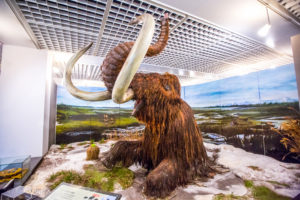 The Obihiro Centennial City Museum was opened back in 1982. It is part of Midorigaoka Park which also contains the Obihiro Zoo. This museum exhibits materials relating to the natural history and local history of Obihiro and the Tokachi region. These exhibits include dioramas, photographs, art works, and items pertaining to that area. This museum also looks at the industries that made Obihiro what it is today. Other exhibits are dedicated to the history and culture of the Ainu the buried cultural property.
The Obihiro Centennial City Museum was opened back in 1982. It is part of Midorigaoka Park which also contains the Obihiro Zoo. This museum exhibits materials relating to the natural history and local history of Obihiro and the Tokachi region. These exhibits include dioramas, photographs, art works, and items pertaining to that area. This museum also looks at the industries that made Obihiro what it is today. Other exhibits are dedicated to the history and culture of the Ainu the buried cultural property.
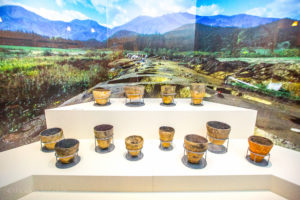 The hall also has finds from the Jōmon period. These items were excavated from the Yachiyo A site and have been designated as ‘Important Cultural Property’. There is an extensive amount of information for those interested in the local area. The centre also acts as an art museum with exhibitions held on a rotating basis. For those wishing to visit the centre, there is ample parking at the park itself and makes for a nice day out. The centre is easily accessed and doesn’t cost a lot to enter.
The hall also has finds from the Jōmon period. These items were excavated from the Yachiyo A site and have been designated as ‘Important Cultural Property’. There is an extensive amount of information for those interested in the local area. The centre also acts as an art museum with exhibitions held on a rotating basis. For those wishing to visit the centre, there is ample parking at the park itself and makes for a nice day out. The centre is easily accessed and doesn’t cost a lot to enter.

Sakaemachiheiwa Park
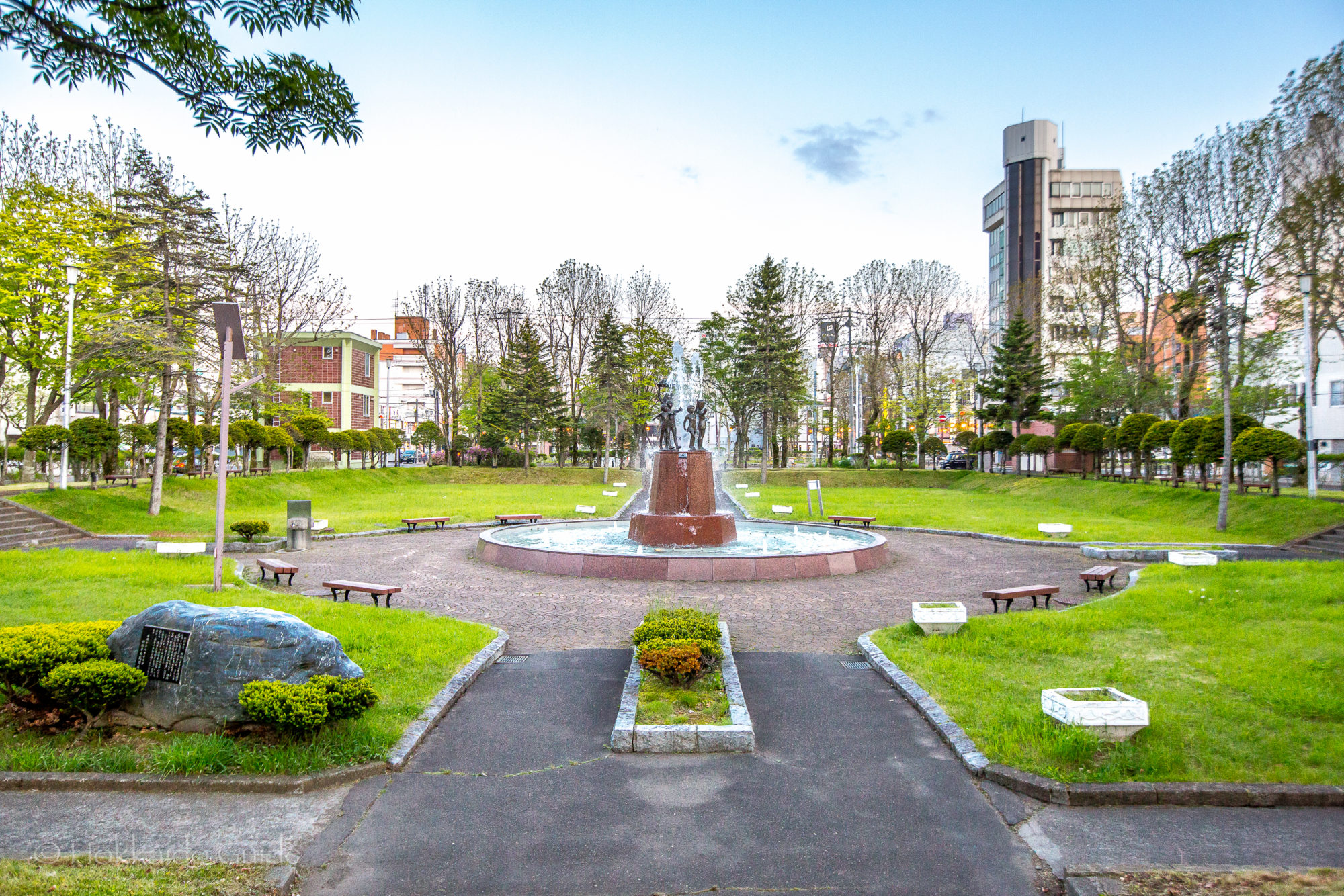
| Admission | Free |
| Opening Hours | 24 hours |
| Contact | 011-5431-4557 |
| Notes | Small park, festivals held here, no parking |
| Location / Getting There | The park is located in central Kushiro. It is near the nightlife district, and is only a 9 minute walk from Kushiro station. 6 Chome-9 Sakaemachi, Kushiro, Hokkaido 085-0013 |
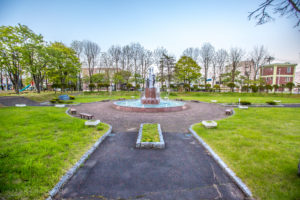 Sakaemachiheiwa Park is located in the center of Kushiro. There are very few green spaces in Kushiro and this park is often used for festivals during the summer and winter and many locals use this park. There is a bit of interesting history behind the park and the area. In 1945, nearing the end of the war, Kushiro was hit by an air raid. The war damaged city was reconstructed and a site was secured for the Sakaemachi Heiwa Park in 1945. Further projects were further created in 1947.
Sakaemachiheiwa Park is located in the center of Kushiro. There are very few green spaces in Kushiro and this park is often used for festivals during the summer and winter and many locals use this park. There is a bit of interesting history behind the park and the area. In 1945, nearing the end of the war, Kushiro was hit by an air raid. The war damaged city was reconstructed and a site was secured for the Sakaemachi Heiwa Park in 1945. Further projects were further created in 1947.
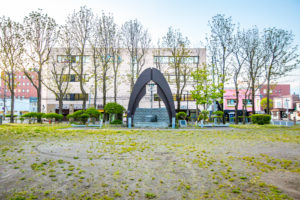 In 1972, the submerged park was redeveloped. A fountain was installed in the middle of the park. The fountain with the surrounding trees and grass area is a pleasant place to rest. As there aren’t many places to enjoy the greenery, this small park is quite a popular with the locals. The park is also right among the entertainment district so it’s easy to find a restaurant, izakaya, or bar close by. This park is a small space in town and is not a bad place for a stroll.
In 1972, the submerged park was redeveloped. A fountain was installed in the middle of the park. The fountain with the surrounding trees and grass area is a pleasant place to rest. As there aren’t many places to enjoy the greenery, this small park is quite a popular with the locals. The park is also right among the entertainment district so it’s easy to find a restaurant, izakaya, or bar close by. This park is a small space in town and is not a bad place for a stroll.
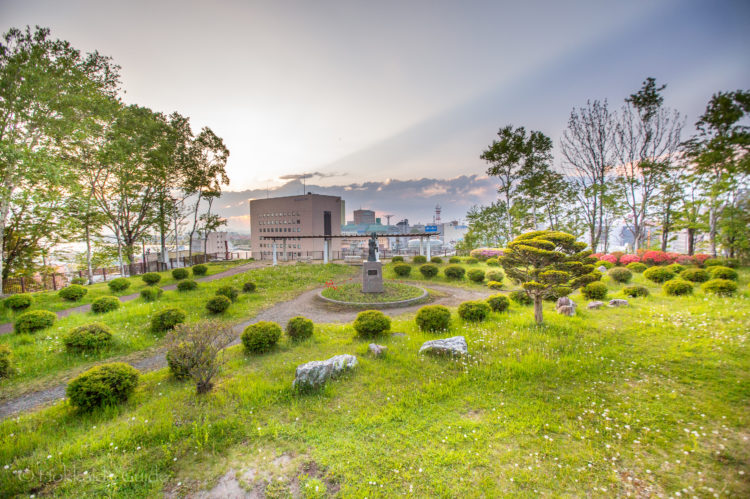
Nusamai Park
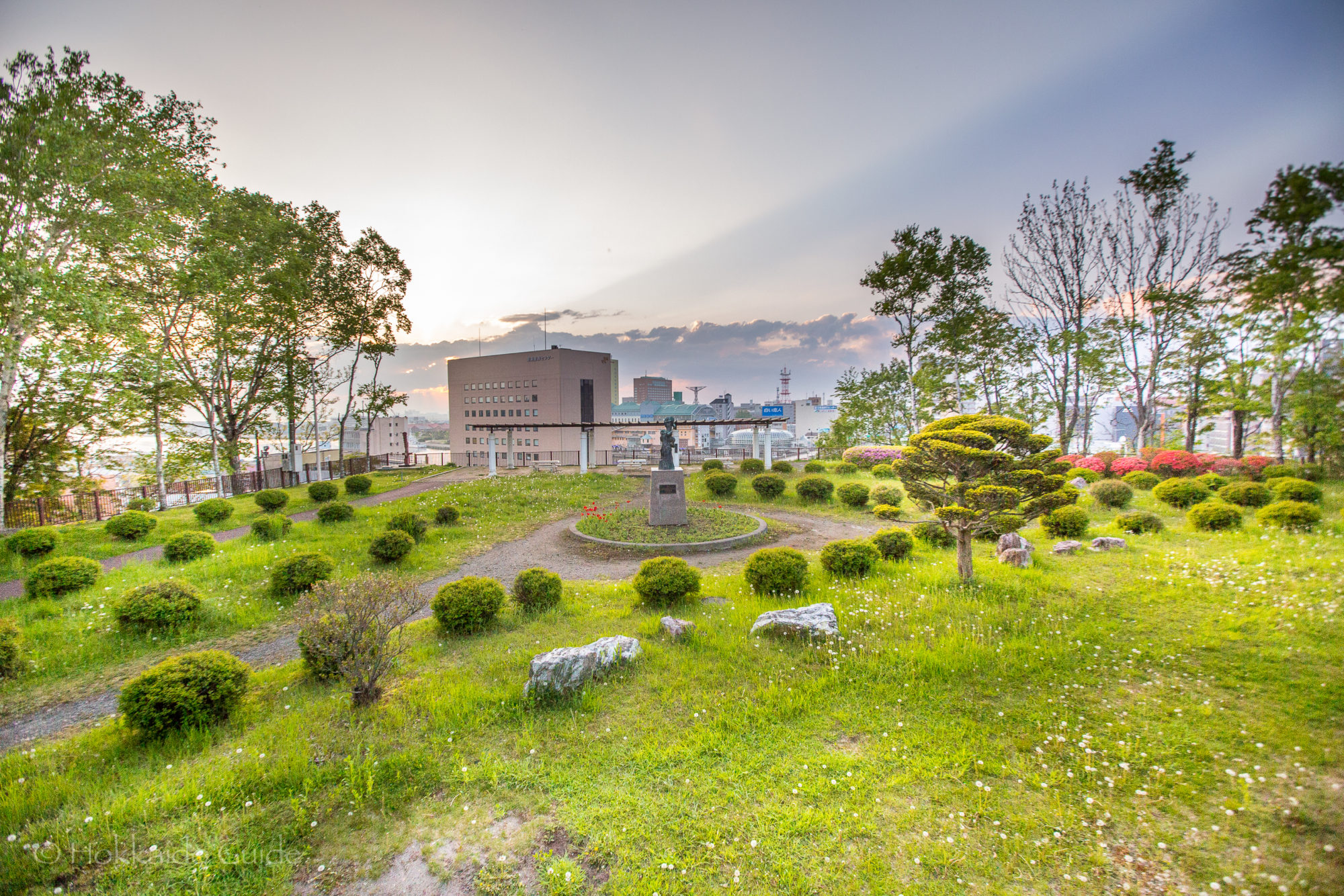
| Admission | Free |
| Opening Hours | 24 hours |
| Contact | 0154-31-4557 |
| Notes | Small park area, sightseeing spot, children playground, toilets |
| Location / Getting There | The square is located in central Kushiro. It is just off the main road, Kitadori 113, and right by the Nusamai Bridge. It is a 15 minute walk, south from Kushiro station. 1 Nusamaicho, Kushiro, Hokkaido 085-0836 |
 This park in Kushiro can be found overlooking the city and is a quiet and peaceful spot to enjoy. In this small park, among the flowers and trees, you can also find the Takeshirō Matsuura Ezo Expedition Statue. Takeshirō Matsuura was a Japanese explorer, cartographer, writer, painter, priest, and antiquarian. Born in 1818 he was an important figure in the development of Hokkaido. He was instrumental in the naming of the island and many of its places and is often referred to as the “Godparent of Hokkaido”. This statue is in the center of the park and overlooks the city.
This park in Kushiro can be found overlooking the city and is a quiet and peaceful spot to enjoy. In this small park, among the flowers and trees, you can also find the Takeshirō Matsuura Ezo Expedition Statue. Takeshirō Matsuura was a Japanese explorer, cartographer, writer, painter, priest, and antiquarian. Born in 1818 he was an important figure in the development of Hokkaido. He was instrumental in the naming of the island and many of its places and is often referred to as the “Godparent of Hokkaido”. This statue is in the center of the park and overlooks the city.
 To get to the park, you need to pass over the the popular Nusamai Bridge. There is a path that winds its way up past the round about and up a flight of steps. The design of this path is really nice and has a distinct European feel to it. This gives the area a beautiful atmosphere. Once at the top, there are nice views. The sunset here is particularly nice. This park has play equipment for kids and benches to sit. For such a small park, this area is quite a nice spot to visit and is recommended in the late afternoon.
To get to the park, you need to pass over the the popular Nusamai Bridge. There is a path that winds its way up past the round about and up a flight of steps. The design of this path is really nice and has a distinct European feel to it. This gives the area a beautiful atmosphere. Once at the top, there are nice views. The sunset here is particularly nice. This park has play equipment for kids and benches to sit. For such a small park, this area is quite a nice spot to visit and is recommended in the late afternoon.

